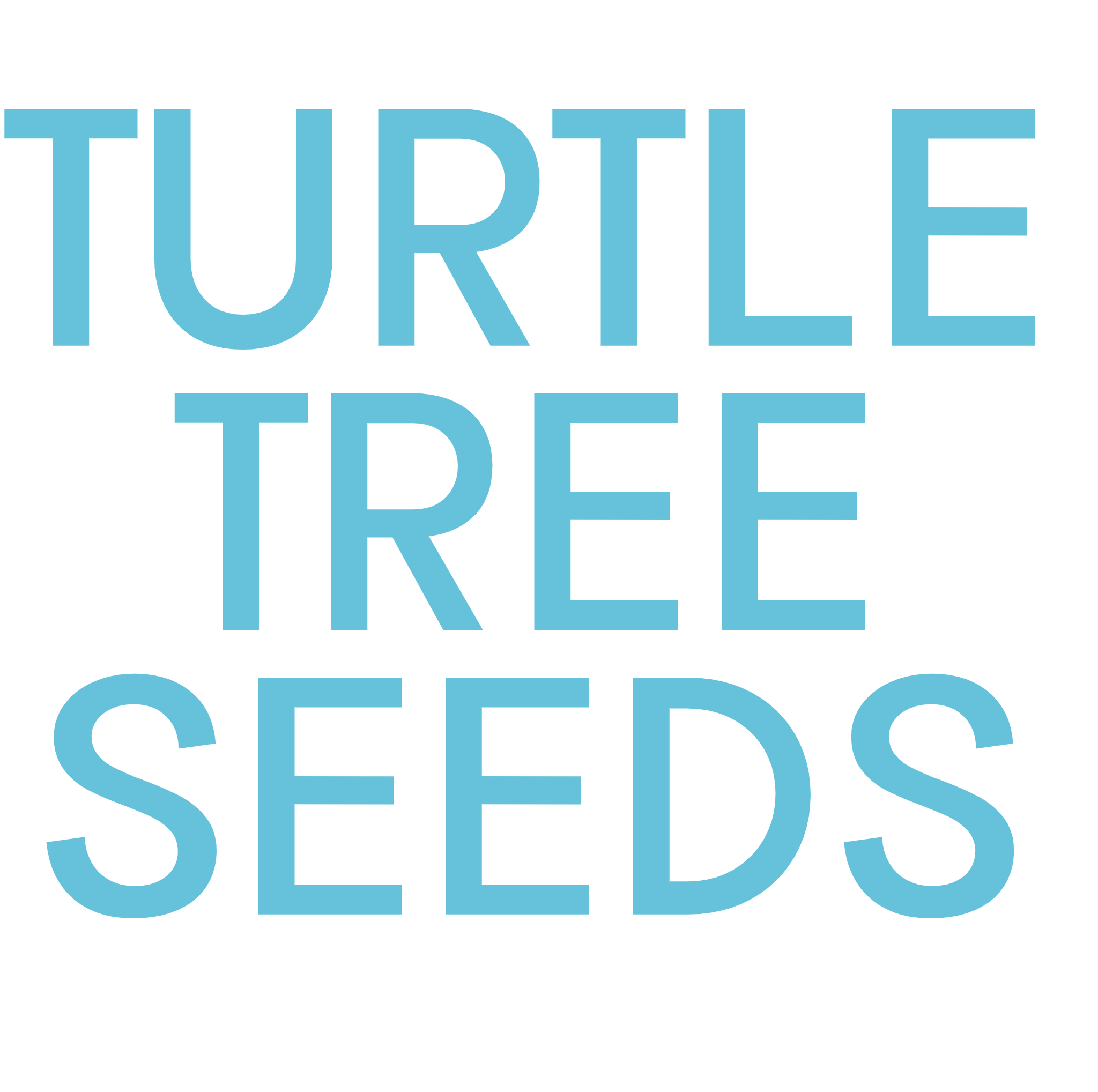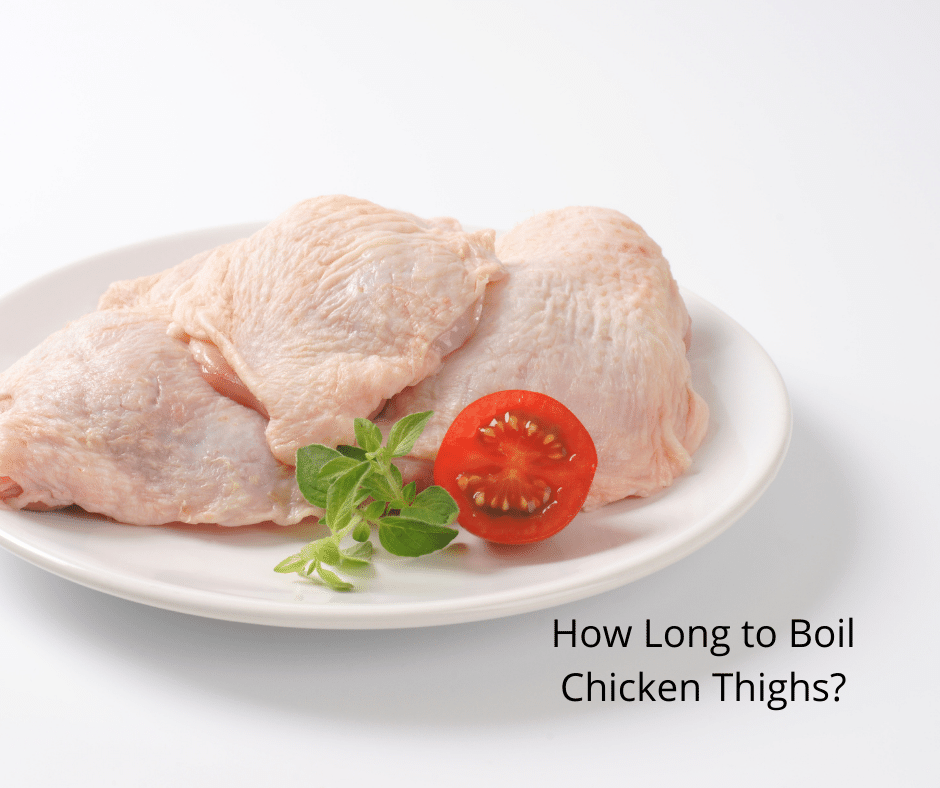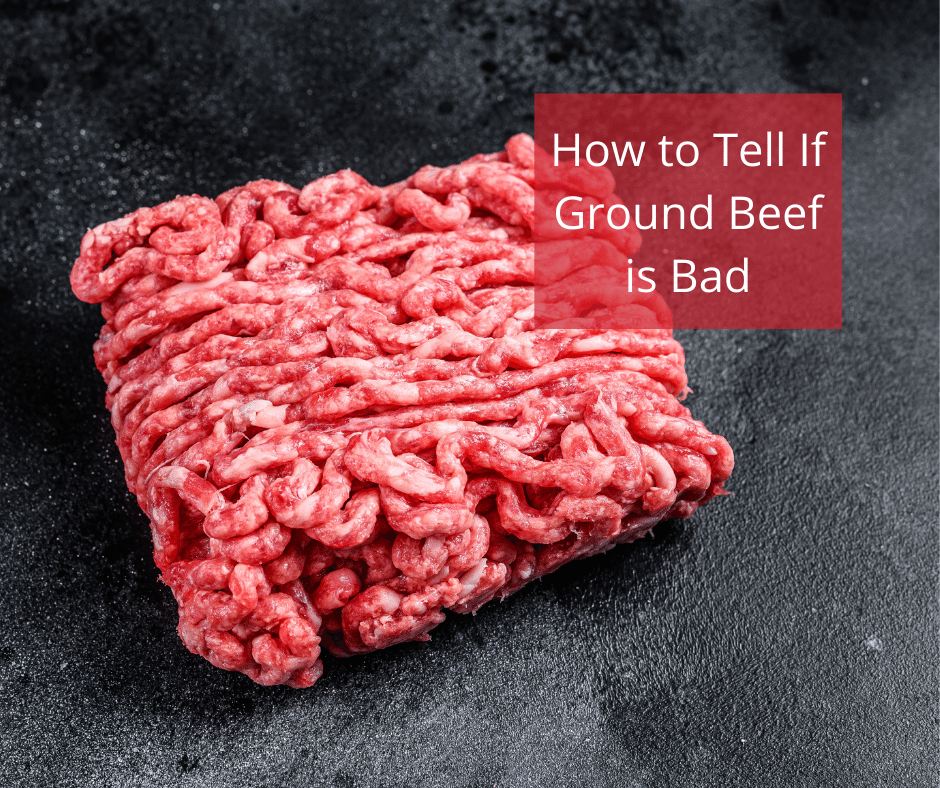Chia Seeds
Chia Seeds Side Effects
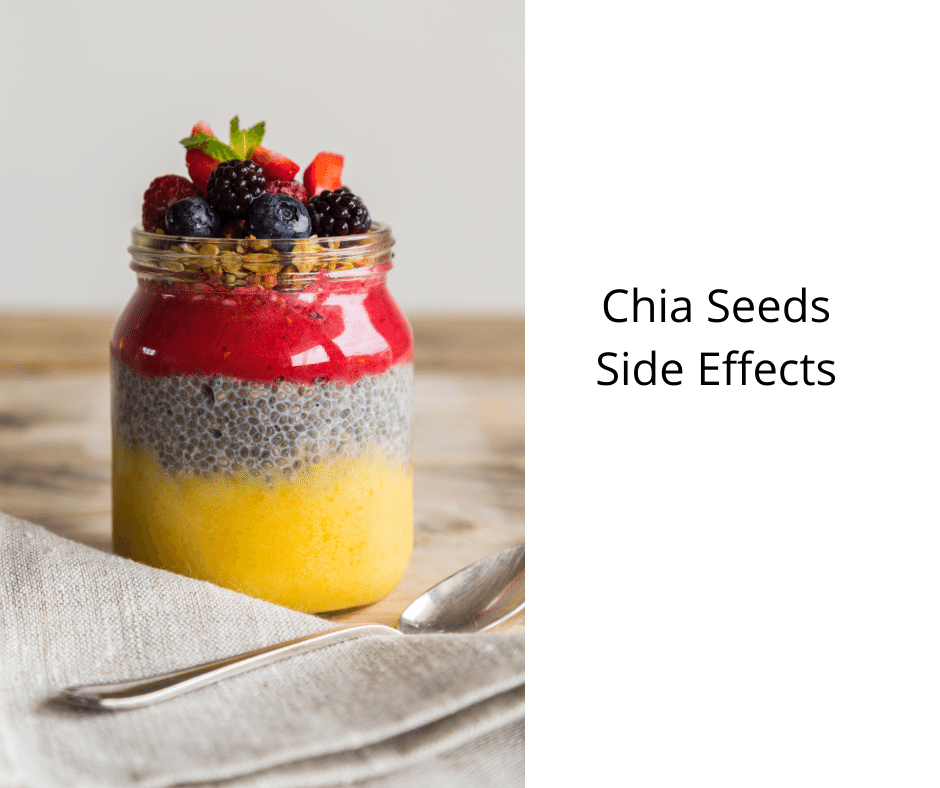
Chia seeds pack a punch but aren’t perfect. Mostly, they’re a safe choice if you don’t go overboard, yet you gotta skip them when expecting or nursing. Always check with your doc before jumping on the chia wagon. Oh, and watch out, they might make you break out in hives. Want the scoop on chia seeds’ downsides? Click here for the nitty-gritty on chia seed troubles. You’ll also grab some neat tricks for keeping your eats in check. Dive into the details and learn how to chow down on chia without a hitch. It’s vital info that could save your snack time and keep your health in tip-top shape. Why keep reading? Because knowing how to navigate chia seed challenges makes all the difference.
Chia Seeds Contain Too Much Fiber
Although chia seeds are high in fiber, the amount should not be too high. Consuming too much fiber can lead to stomach problems, including diarrhea, constipation, bloating, and intestinal gas. In addition, too much fiber can interfere with the absorption of nutrients from food. If you have a condition that causes constipation, consult your doctor before adding chia seeds to your diet. Nevertheless, they are a healthy addition to your diet in moderation.
Fiber is one of the most important nutrients for our bodies, and chia seeds are high in fiber. We need a certain amount of fiber each day to function properly. Unfortunately, many of us don’t consume enough fiber in our diets. However, a diet that contains enough fiber is healthy for us in many ways. It helps our digestive system stay healthy by reducing cholesterol and preventing heart disease, among other things.
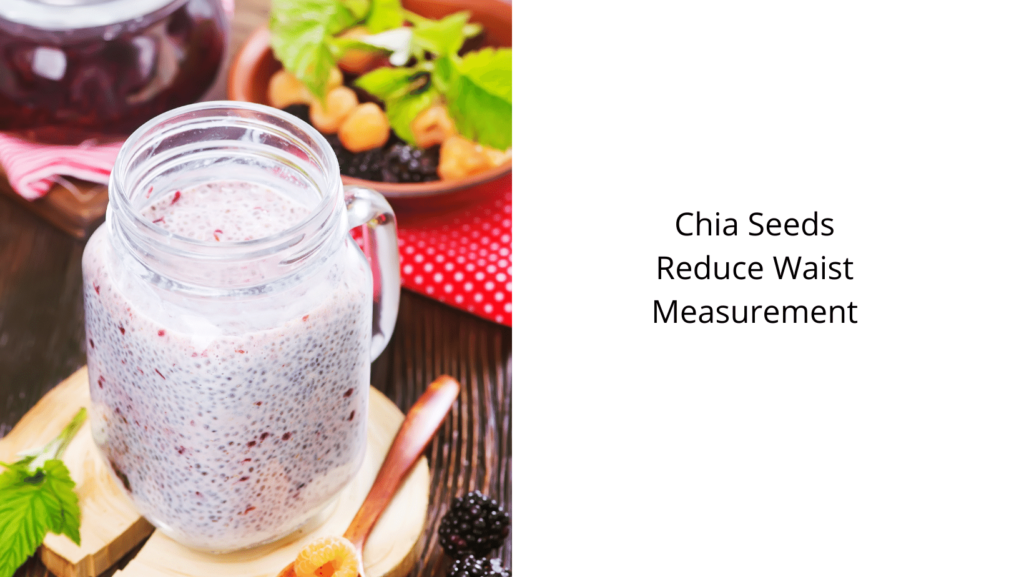
Chia Seeds Reduce Waist Measurement
Chia seeds are an excellent choice if you’re trying to lose weight. These dietary supplements are high in fiber and can replace higher calorie snacks. They also contain a high protein level and will keep your appetite in check. They’re a great way to manage your hunger and reduce your waist measurement. They can help you slim down your tummy by preventing constipation and keeping you regular and satisfied with fewer calories.
You can also add chia seeds to your smoothies. The mixture will create a jelly-like substance. Drink this mixture every morning and you’ll see a decrease in your waist measurement. If you’re not a fan of smoothies, you can try making a pudding out of the seeds. Mix the seeds into half a cup of milk, add a tablespoon of honey, and let it sit for 30 minutes. You can also add chia seeds to your oatmeal or mix them into a cake or smoothie.
Chia Seeds Cause Hives
Whether or not chia seeds cause hives depends on the cause. Some people may have allergies to certain plants, or they may have a cross-reactivity with foods they eat. Those who are allergic to chia seeds are advised to avoid them. Other foods that can trigger an allergic reaction are mustard, thyme, oregano, and sesame. For these reasons, it is essential to consult a medical professional before using chia seeds.

It’s important to know the causes of hives. Chia seeds contain chia proteins, which are responsible for allergic reactions. Some people have packed when they consume them, which should be suspected as an early sign of an allergic reaction. If the seeds cause hives, seek medical help immediately. In rare cases, they may be harmless, but they can cause a severe rash or even anaphylactic shock.
Chia Seeds Lower Blood Pressure
Although chia seeds aren’t a miracle food, they may help lower blood pressure. Its high content of omega-3 fatty acids may relieve lower blood pressure. These acids act as blood thinners, lowering blood pressure. Although more research is needed, chia seeds will likely benefit those with high blood pressure. While they’re packed with nutrients, their tough outer shell makes them difficult to digest.
Ivo’s brother, a lobbyist for the Brotherhood, was shocked to learn Ivo’s identity. The orcs, led by a wolf clan, retreated in an all-around retreat, leaving the southern part of the kingdom of Reno in peace. Fortunately, the orcs retreated from Reno and the southern part of the kingdom to resume production and repair.
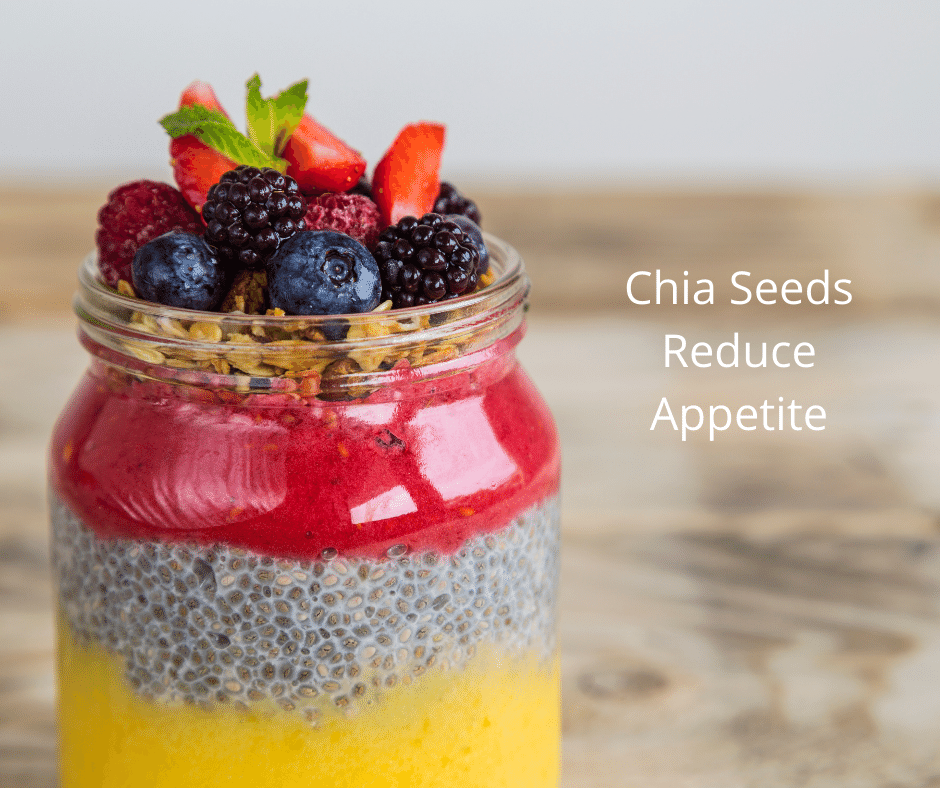
Chia Seeds Reduce Appetite
It’s been hypothesized that chia seed consumption may reduce appetite. However, the question remains as to whether this is true. While many studies have shown that chia seeds can reduce appetite, long-term effects are still disputed. In one study, participants consumed 14 grams of chia seeds with their morning meal and saw a 25 percent reduction in total energy intake. However, this effect is inconsistent across studies, perhaps because the populations studied differed.
Chia seeds are a healthy source of fiber and protein. Their low-calorie and low-carb content prevent them from causing cravings or weight gain. Eating a handful of chia seeds daily could help reduce your appetite and your snacking. Chia seeds are also a great addition to fruit salads. They also provide a satisfying texture and won’t spike insulin or blood sugar levels, so they won’t trigger a sugar spike. This is a good thing because it means you won’t be overeating.
Hi, I’m Sarah. I write for Turtle Tree Seeds, a news blog that loves food – all kinds of food. But especially bacon, chocolate, and veggies. We’re on a mission to show the world that you can enjoy all of those things, even kale and brussels sprouts. Because we believe that when it comes to food, there’s no such thing as guilty pleasures. Just pleasures.
I’m also a huge fan of puns (obviously).
Health Risks and Allergies Related to Chia Seeds
10 Best Indicators of Seed Allergy Symptoms
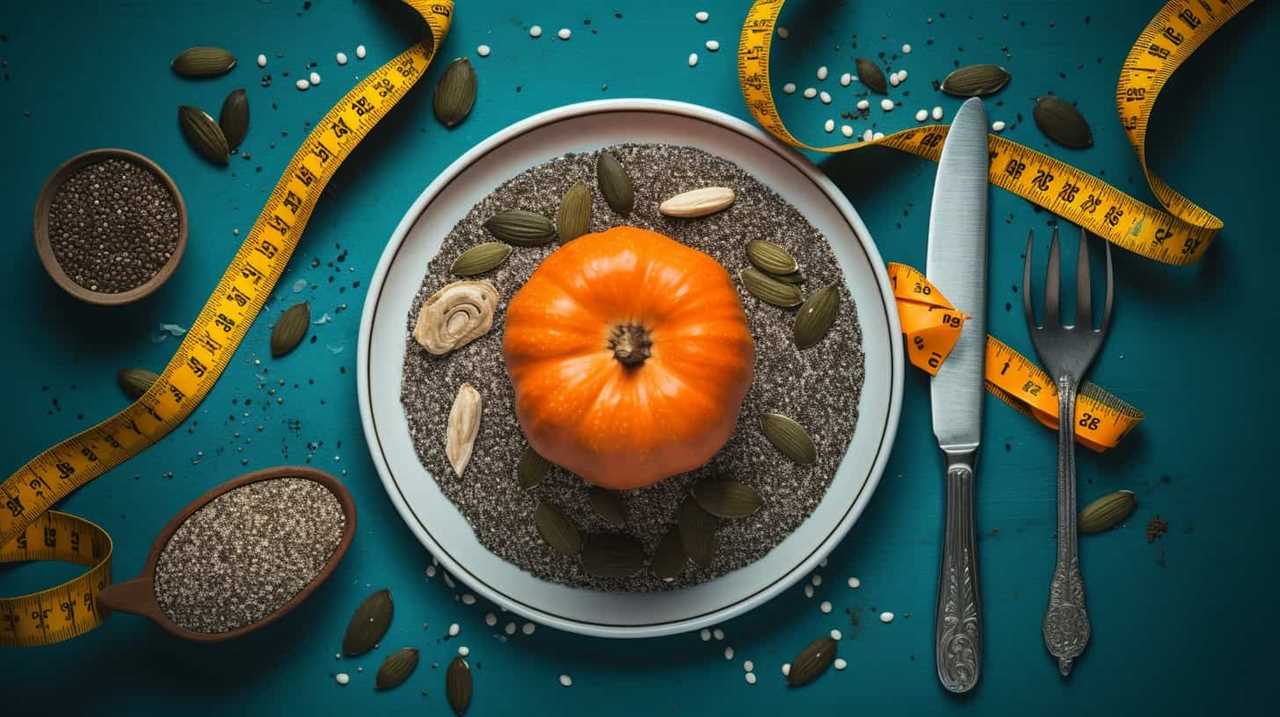
Are you curious about the specific signs of seed allergies?
Well, we’ve got the scoop for you! Our team of experts has compiled a list of the top 10 indicators to help you identify these pesky symptoms.
From skin rashes and hives to difficulty breathing and wheezing, we’ve got you covered.
So, sit back, relax, and let us guide you through the world of seed allergy symptoms.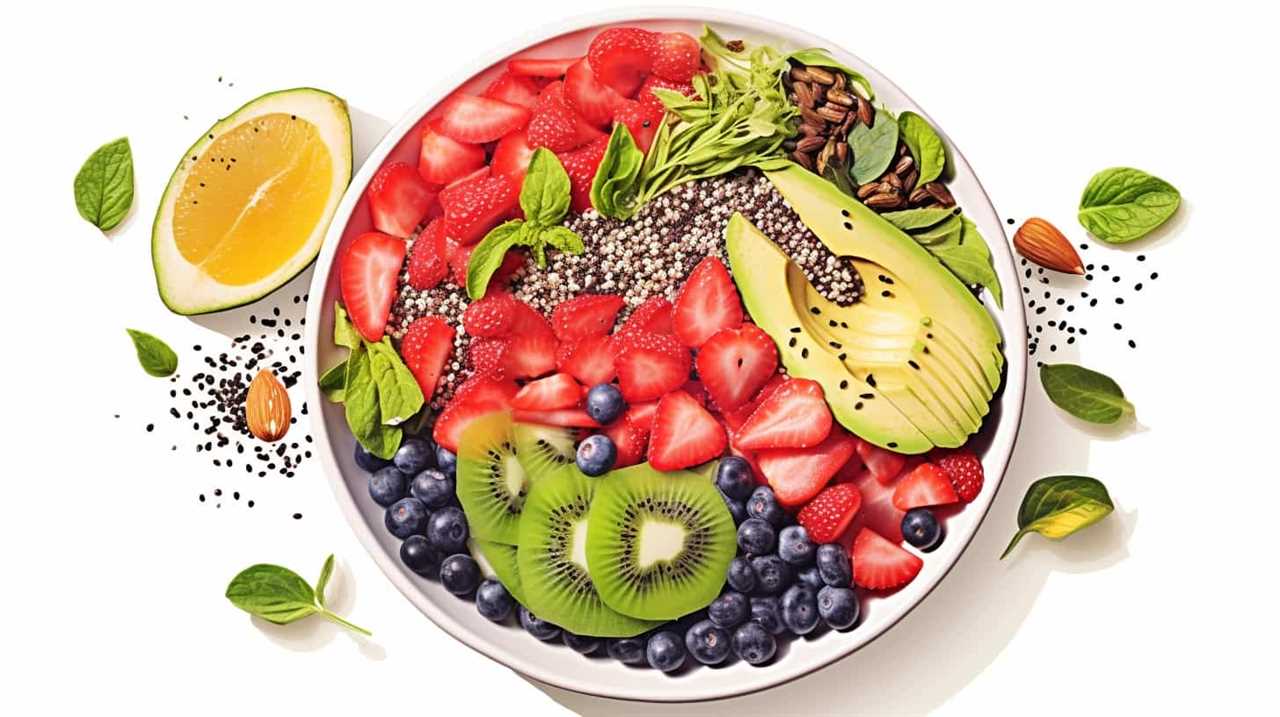
You won’t want to miss out on this valuable information!
Key Takeaways
- Skin rashes and hives after consuming seeds are common indicators of seed allergy symptoms.
- Swelling of the face or throat, accompanied by hives, difficulty breathing, or chest tightness, can be life-threatening and should be immediately addressed.
- Difficulty breathing, wheezing, and chest tightness are clear signs of a seed allergy and should not be ignored.
- Nausea, vomiting, and other gastrointestinal symptoms may occur in individuals with seed allergies and seeking medical attention is important for management and relief.
Skin Rashes and Hives
Skin rashes and hives can appear within minutes to hours after consuming seeds. These symptoms are often the first sign of an allergic reaction to seeds. The skin may become red, inflamed, and itchy, causing significant discomfort. Itchy skin is a common indicator of an allergic response, as the body’s immune system reacts to the proteins present in the seeds.
Allergic reactions occur when the immune system mistakenly identifies these proteins as harmful substances. As a result, the body releases histamines, leading to the characteristic rash and hives. It’s important to note that these symptoms can vary in severity, ranging from mild irritation to more severe reactions.
In the subsequent section, we’ll discuss another significant symptom of seed allergies: swelling of the face or throat.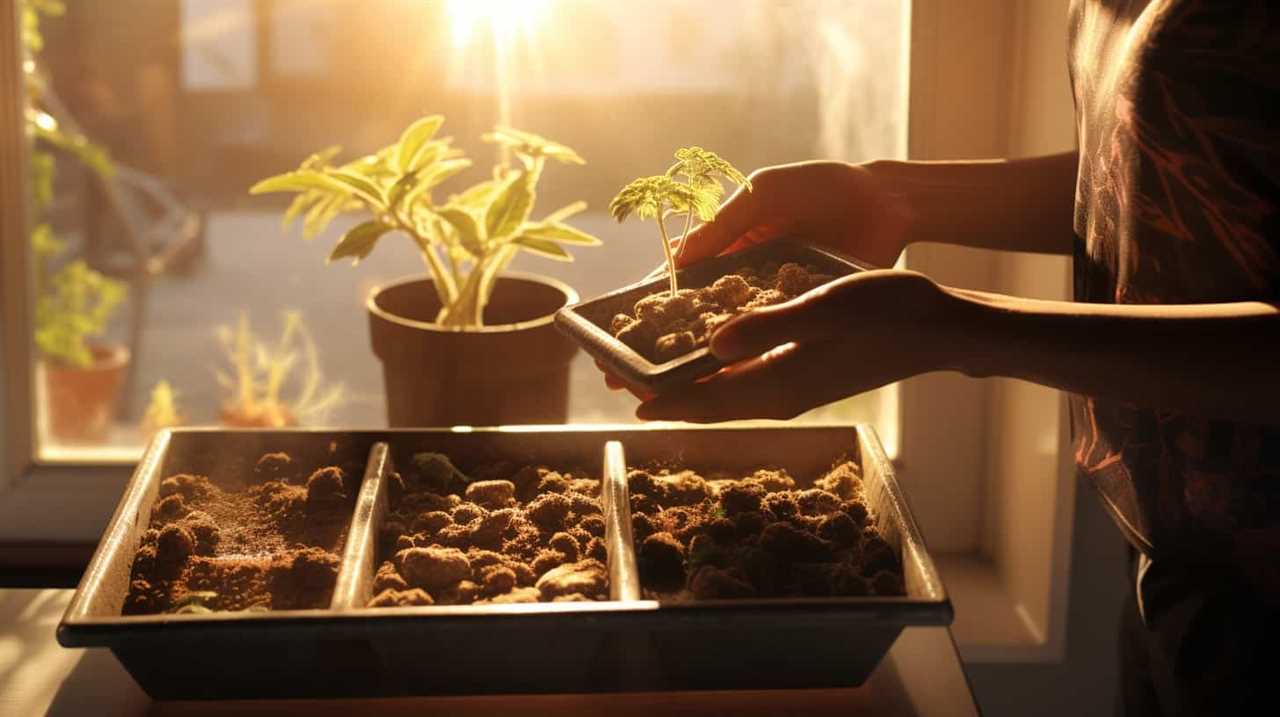
Swelling of the Face or Throat
One of the most alarming indicators of a seed allergy is the swelling of our face or throat. This symptom, known as angioedema, can occur rapidly and can be life-threatening if not managed promptly.
Swelling of the face or throat is usually accompanied by other allergic reactions such as hives, difficulty breathing, or a feeling of tightness in the chest. If you experience swelling in these areas after consuming seeds or any seed-based products, it’s essential to seek immediate medical attention.
To manage swelling effectively, it’s crucial to follow proper allergic reaction prevention measures, such as avoiding seeds altogether and carrying an epinephrine auto-injector if you have a known seed allergy. Prompt intervention and proper swelling management are vital to prevent severe complications and ensure your safety.
Difficulty Breathing or Wheezing
When it comes to seed allergies, difficulty breathing or wheezing are important symptoms to consider. These symptoms can manifest as chest tightness or constriction, making it hard to take a deep breath.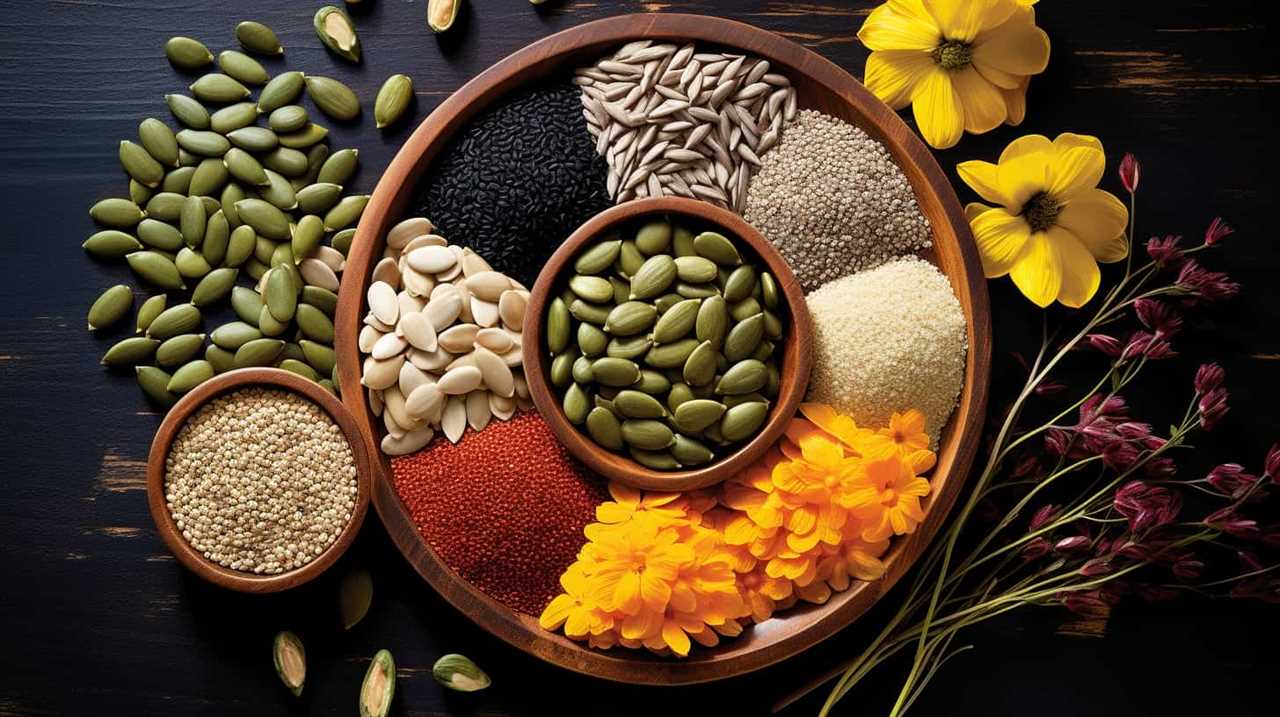
Additionally, individuals may experience shortness of breath, feeling like they’re unable to get enough air. These indicators can be a clear sign of a seed allergy and shouldn’t be ignored.
Chest Tightness or Constriction
How can we identify chest tightness or constriction as a symptom of seed allergy?
Chest discomfort and breathing difficulties are common manifestations of seed allergies. When a person with a seed allergy comes into contact with seeds, their immune system reacts by releasing histamine and other chemicals, causing inflammation in the airways.
This inflammation can lead to chest tightness or constriction, making it difficult for the individual to breathe properly. They may experience a sensation of pressure or heaviness in the chest, and in some cases, it may feel as though their breathing is restricted or wheezing may occur.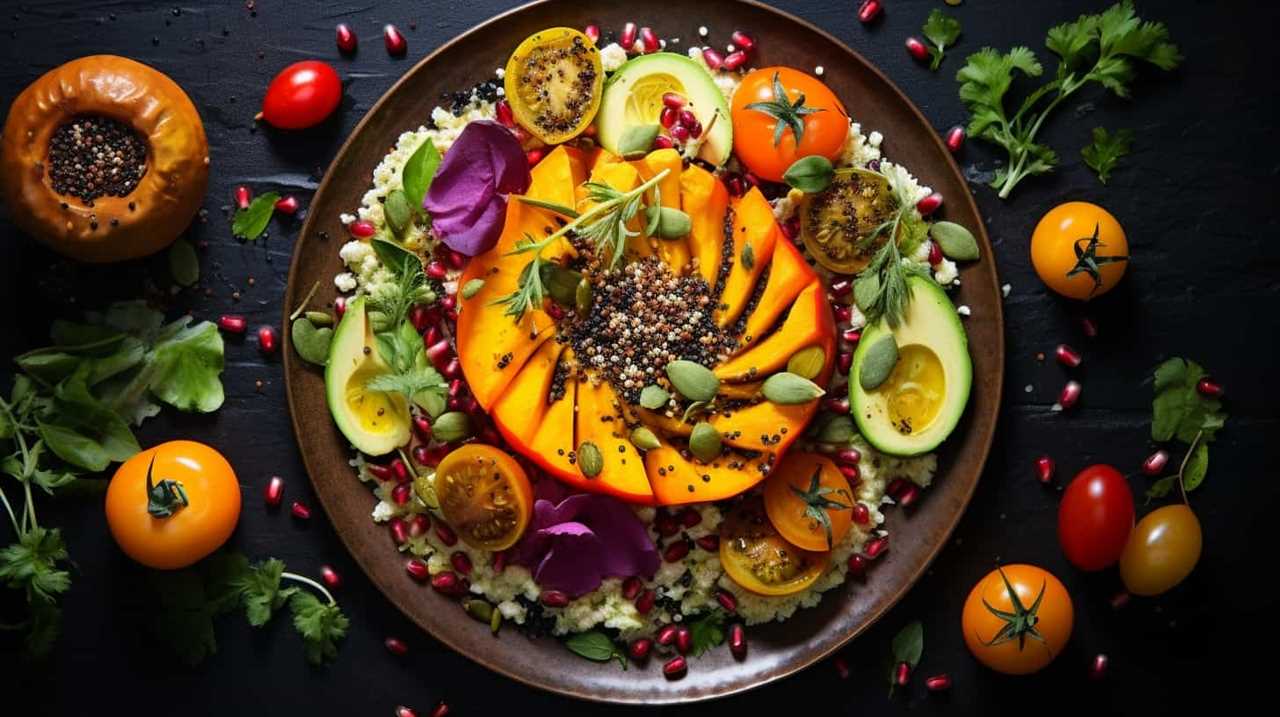
It’s important to note that chest tightness can be a serious symptom and may indicate an anaphylactic reaction, which requires immediate medical attention. If you or someone you know experiences chest tightness or constriction after consuming seeds, it’s essential to seek medical help promptly.
Shortness of Breath
We can continue the discussion about seed allergy symptoms by focusing on the shortness of breath or difficulty breathing, which may also be accompanied by wheezing. Shortness of breath can be a distressing symptom that can significantly impact an individual’s quality of life.
Here are some key points to consider regarding shortness of breath in the context of seed allergies:
-
Causes of shortness of breath: Seed allergies can trigger an immune response in the respiratory system, leading to inflammation and constriction of the airways. This can result in difficulty breathing and wheezing.
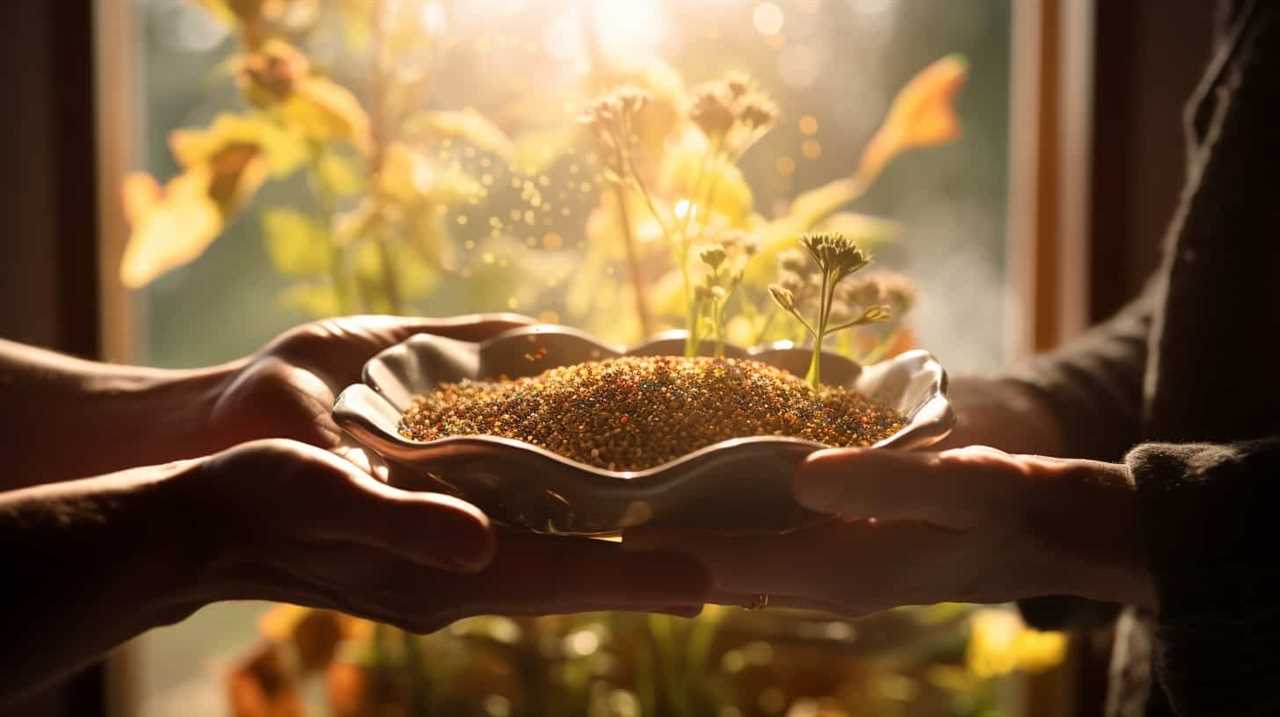
-
Treatment for shortness of breath: If you experience shortness of breath due to seed allergies, it’s important to seek medical attention. Treatment options may include avoiding allergens, using prescribed medications such as bronchodilators or corticosteroids, and implementing lifestyle changes to manage symptoms.
-
Managing anxiety: Shortness of breath can also be exacerbated by anxiety or panic attacks. Learning relaxation techniques, practicing deep breathing exercises, and seeking therapy can help manage anxiety-related breathing difficulties.
-
Seeking professional advice: It’s crucial to consult with a healthcare professional for an accurate diagnosis and personalized treatment plan for shortness of breath caused by seed allergies.
Itchy or Watery Eyes
The presence of itchy or watery eyes is a common indicator of seed allergy symptoms. Eye irritation, also known as allergic conjunctivitis, is a bothersome condition that often accompanies seed allergies. When exposed to seed allergens, such as peanuts or sesame seeds, the immune system releases histamine, causing inflammation and irritation in the eyes. This can result in symptoms like itching, redness, and excessive tearing.
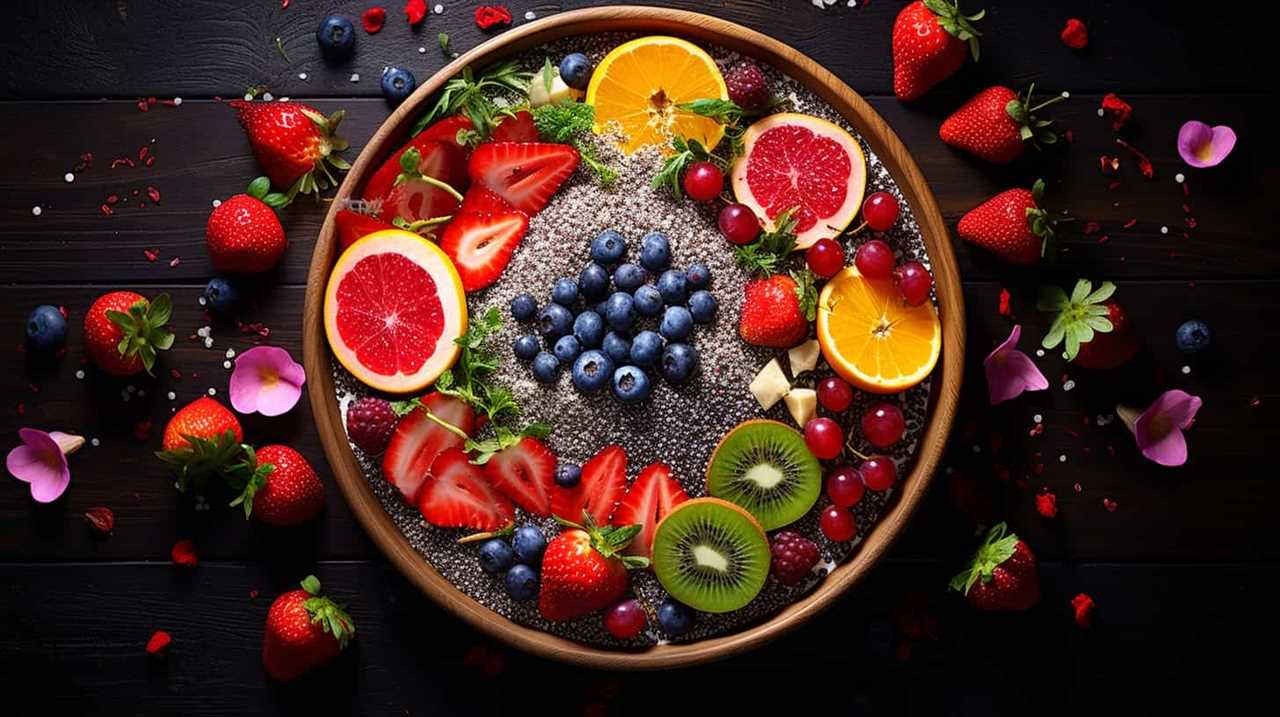
Itchy or watery eyes can be particularly distressing, as they can interfere with daily activities and affect overall quality of life. Therefore, it’s important to recognize these symptoms as potential indicators of seed allergies and seek appropriate medical attention.
Moving forward, let’s explore another common symptom of seed allergies: nausea and vomiting.
Nausea and Vomiting
Experiencing nausea and vomiting is a common manifestation of seed allergy symptoms. These uncomfortable symptoms can significantly impact one’s quality of life.
When it comes to seed allergies, here are four potential causes of nausea and vomiting: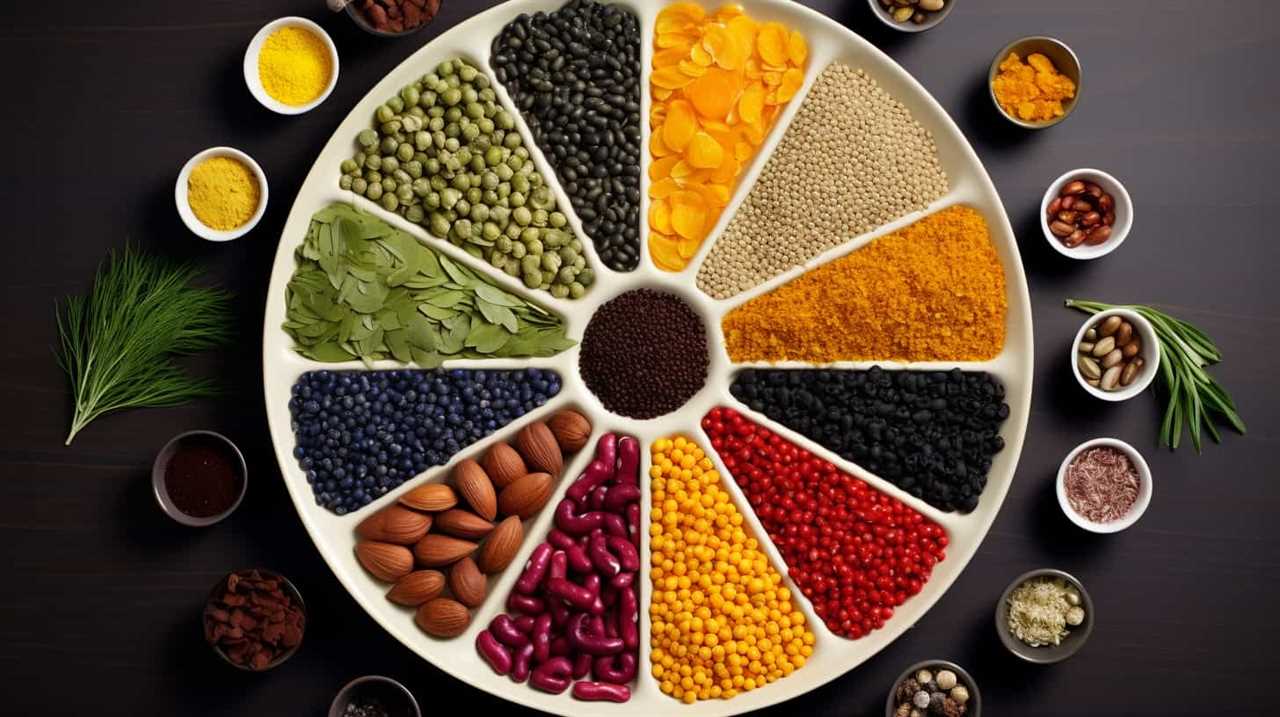
-
Inflammatory response: The body’s immune system reacts to the proteins found in seeds, triggering an inflammatory response that can lead to nausea and vomiting.
-
Histamine release: Seeds, such as sesame or poppy seeds, can contain high levels of histamine. In individuals with seed allergies, consuming these seeds can result in the release of histamine, causing gastrointestinal symptoms.
-
Cross-reactivity: People with existing allergies, such as pollen or latex allergies, may experience nausea and vomiting when exposed to certain seeds due to cross-reactivity.
-
Digestive issues: Some individuals may have difficulty digesting seeds, leading to digestive disturbances like nausea and vomiting.
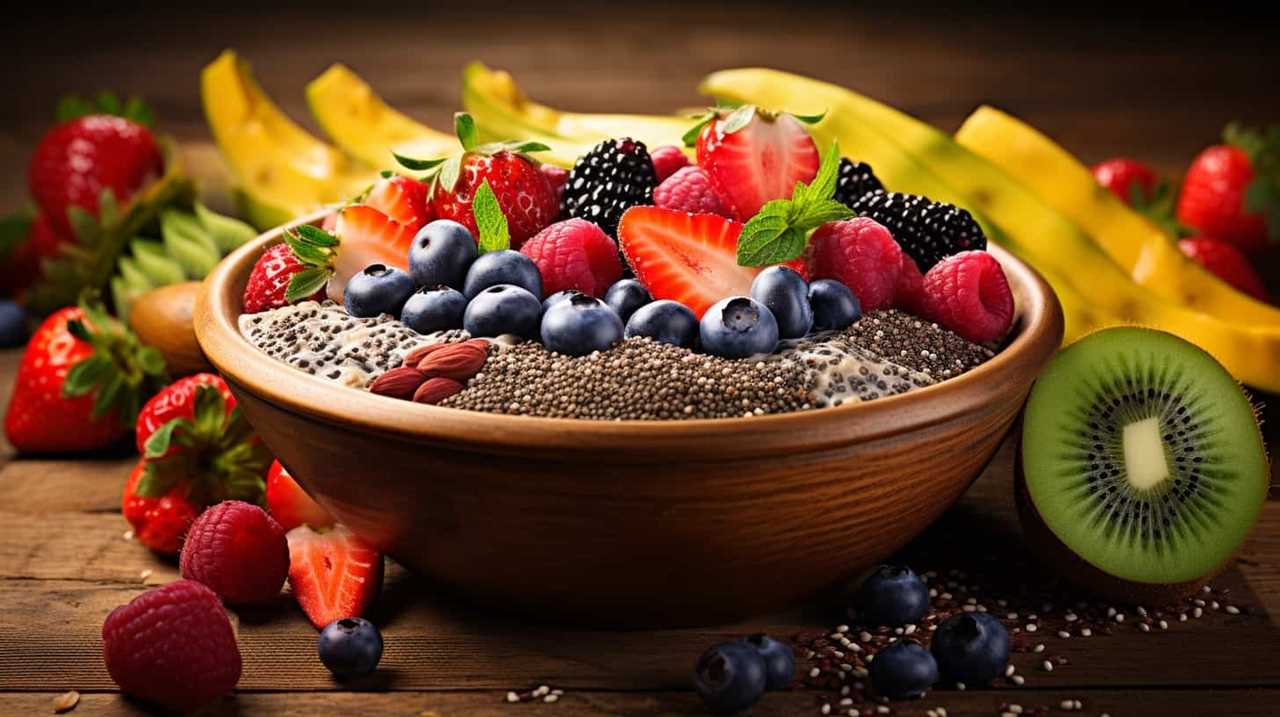
Understanding the potential causes of nausea and vomiting in seed allergy symptoms can help individuals manage their condition effectively.
Now, let’s delve into the next subtopic: abdominal pain or cramps.
Abdominal Pain or Cramps
When seeds are ingested by individuals with a seed allergy, they may experience abdominal pain or cramps. These symptoms can be indicative of an allergic reaction to seeds.
Abdominal discomfort is a common manifestation of seed allergy, and it’s important to recognize this symptom in order to seek appropriate medical attention. Abdominal pain or cramps may occur shortly after consuming seeds or may develop gradually over time.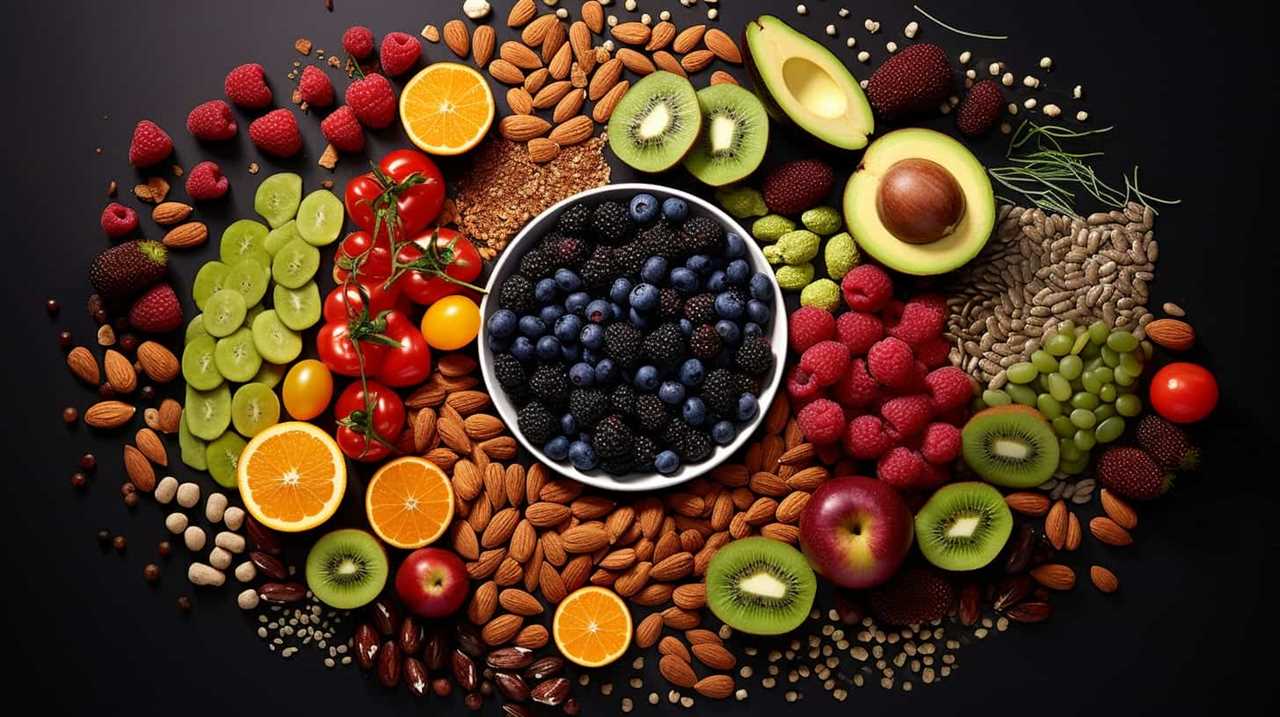
It’s crucial to note that the severity and duration of these symptoms can vary among individuals. If you or someone you know experiences persistent abdominal discomfort after consuming seeds, it’s recommended to consult with a healthcare professional for further evaluation and diagnosis.
Understanding and recognizing these signs can play a vital role in managing seed allergies and ensuring your overall well-being.
Diarrhea or Digestive Issues
We may also experience diarrhea or other digestive issues as a result of consuming seeds, indicating a potential allergy. When it comes to seed allergies, it’s important to consider the nutritional implications and management strategies. Here are four key points to keep in mind:
-
Nutritional implications: Diarrhea can lead to dehydration and nutrient deficiencies, as the body is unable to properly absorb essential vitamins and minerals. It’s crucial to address these nutritional gaps to maintain overall health.
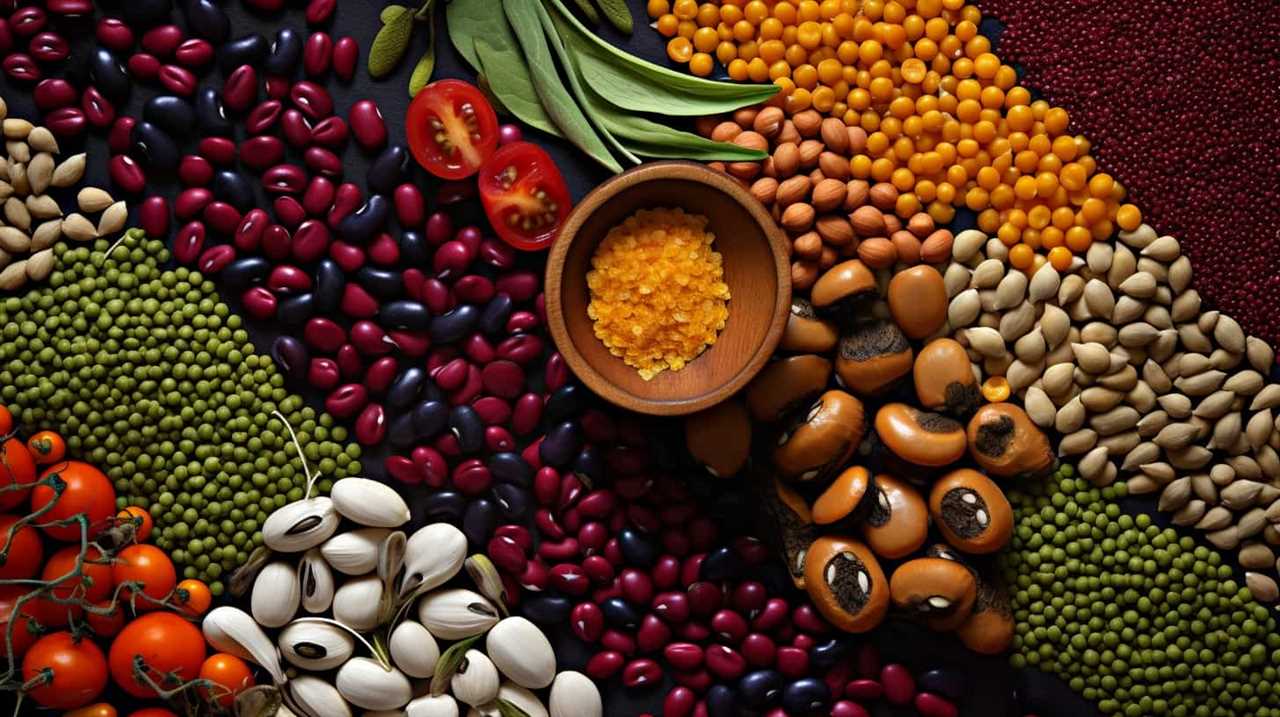
-
Identifying trigger seeds: Keeping a food diary can help pinpoint the specific seeds that cause digestive issues. This information can then be shared with healthcare professionals for a more accurate diagnosis.
-
Avoidance and alternatives: If seeds are identified as the culprit, it’s recommended to avoid consuming them altogether. However, it’s important to find suitable alternatives that provide similar nutritional benefits.
-
Seek professional guidance: Consulting with a healthcare professional or allergist can provide valuable insights and personalized management strategies to effectively address seed allergies and alleviate digestive issues.
Headaches or Migraines
When it comes to seed allergy symptoms, headaches or migraines can often be indicators of an allergic reaction.
Visual disturbances, such as aura, are commonly associated with migraines and can be a sign of a seed allergy.
Additionally, the frequency and duration of headaches or migraines can provide valuable information about the severity and persistence of the allergic reaction.
Understanding these aspects can help individuals identify and manage their seed allergies effectively.
Visual Disturbances and Migraines
During episodes of seed allergy symptoms, individuals may experience visual disturbances and migraines. These symptoms can be debilitating and greatly impact one’s daily life. Here are four ways in which visual disturbances and migraines can manifest during a seed allergy episode:
-
Blurred vision: Individuals may notice a sudden blurriness in their vision, making it difficult to see clearly.
-
Sensitivity to light: Even normal light levels can become unbearable, causing discomfort and pain in the eyes.
-
Visual auras: Some individuals may experience visual disturbances such as flashing lights or zigzag patterns before the onset of a migraine.
-
Throbbing headaches: Migraines often accompany seed allergy symptoms, causing intense, pulsating pain that can last for hours or even days.
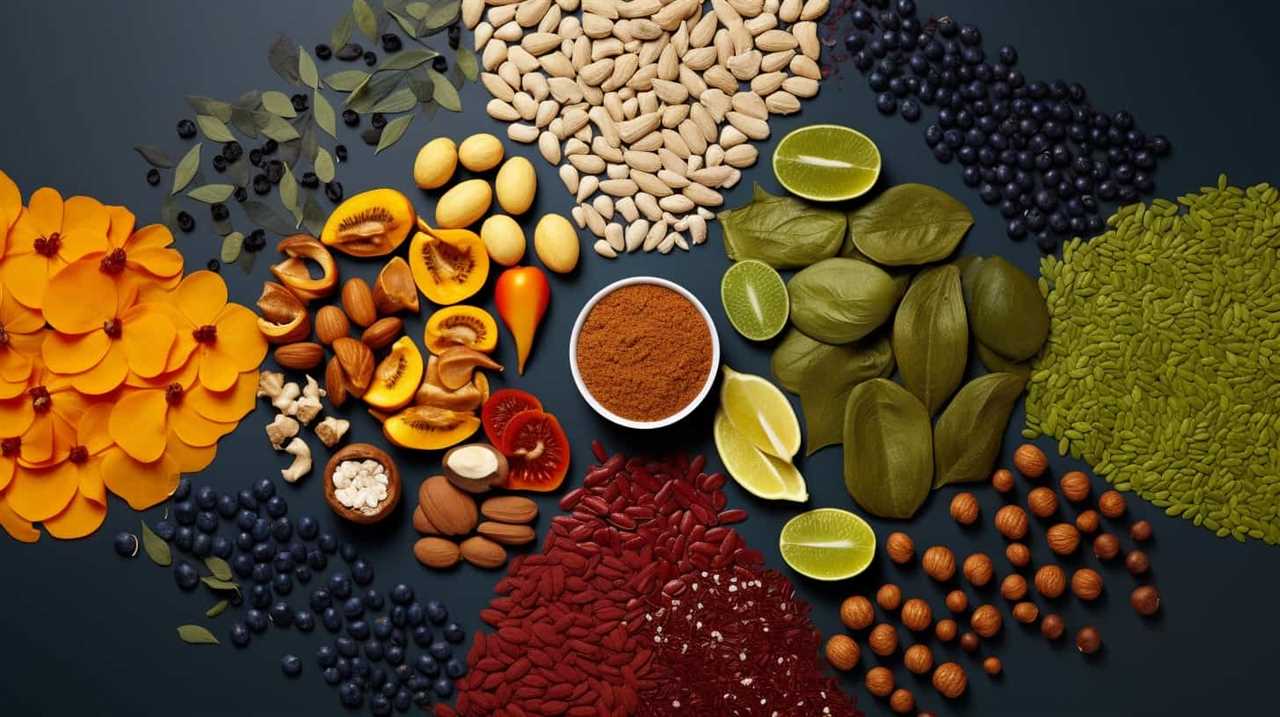
Understanding these visual disturbances and migraines as potential migraine triggers can help individuals better manage their seed allergy symptoms.
Now, let’s explore the frequency and duration differences of these symptoms.
Frequency and Duration Differences
As we delve deeper into the discussion of frequency and duration differences of headaches or migraines during seed allergy episodes, it’s important to consider the impact these symptoms have on individuals’ daily lives.
Understanding the frequency and duration of headaches or migraines can provide crucial insights into the severity of seed allergy reactions and help individuals manage their symptoms effectively.
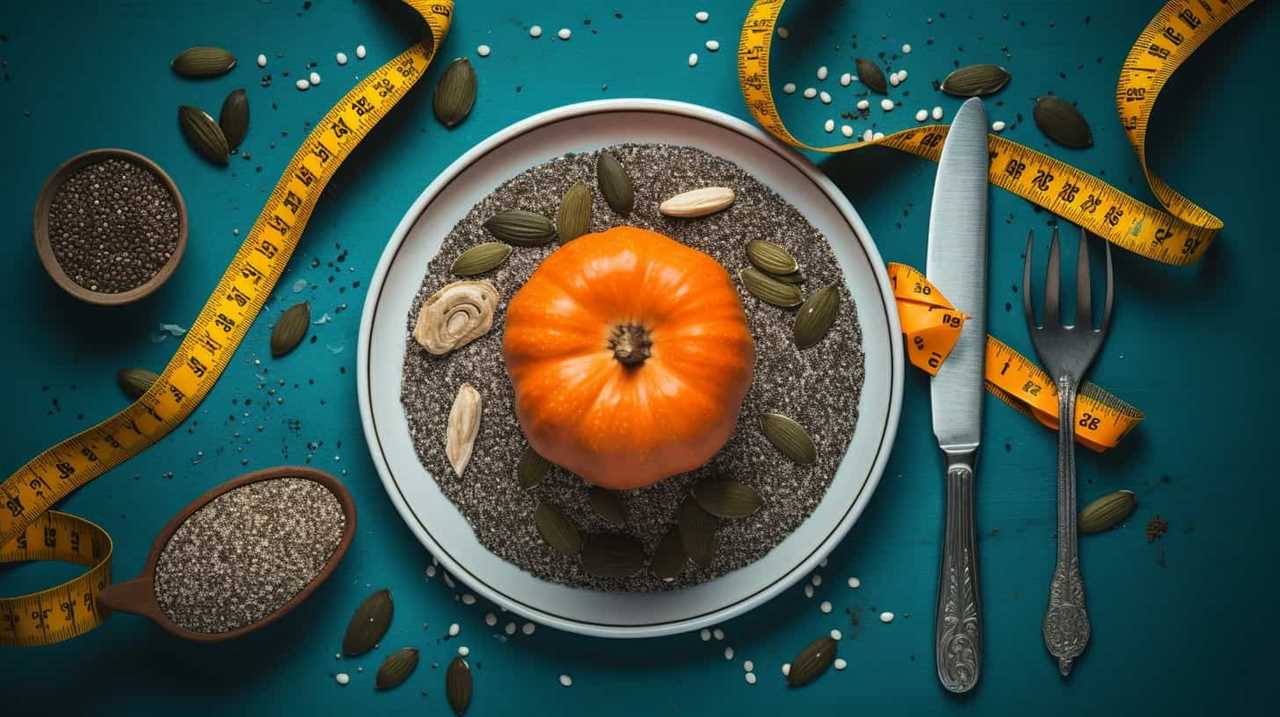
By comparing the frequency and duration of these episodes, we can identify patterns and triggers that may contribute to the onset of headaches or migraines. This knowledge allows individuals to make informed decisions about their daily activities, ensuring they can avoid potential triggers and minimize the impact on their daily lives.
Fatigue or Weakness
Our experience with seed allergy symptoms has shown that fatigue or weakness is a common manifestation. Fatigue is a state of extreme tiredness or exhaustion that can significantly impact one’s daily activities. When it comes to seed allergies, fatigue can be caused by various factors, including:
-
Inflammatory response: When the body reacts to seed allergens, it triggers an inflammatory response that can lead to fatigue or weakness.
-
Immune system activation: The immune system works hard to fight off the allergens, which can leave you feeling drained and fatigued.
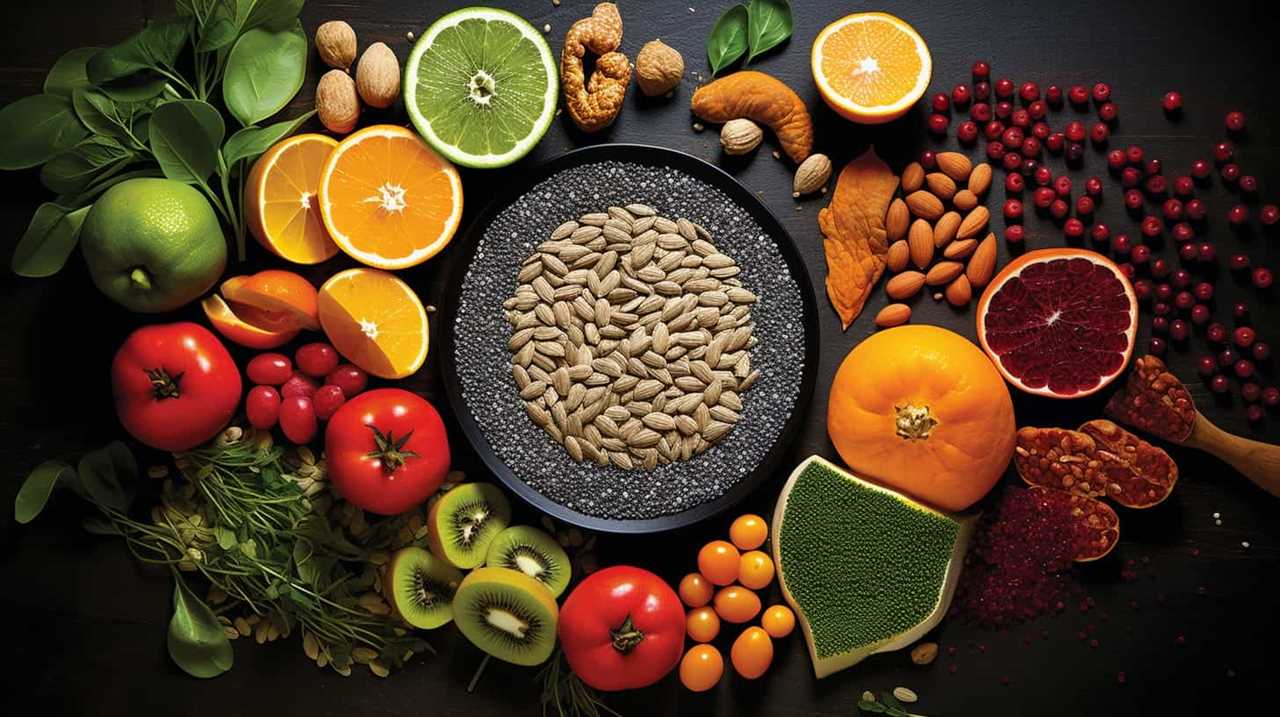
-
Sleep disturbances: Seed allergies can cause sleep disturbances like nasal congestion or itchy eyes, leading to poor quality sleep and increased fatigue.
-
Stress and anxiety: Dealing with the challenges of managing seed allergies can contribute to stress and anxiety, which can further exacerbate fatigue.
Managing fatigue caused by seed allergies involves proper allergy management, including identifying and avoiding triggers, taking prescribed medications, and practicing good sleep hygiene. It’s important to consult with a healthcare professional for personalized guidance in managing fatigue associated with seed allergies.
Anaphylaxis or Severe Allergic Reaction
When it comes to seed allergies, anaphylaxis or a severe allergic reaction is a critical concern. It can cause life-threatening symptoms and requires immediate medical attention.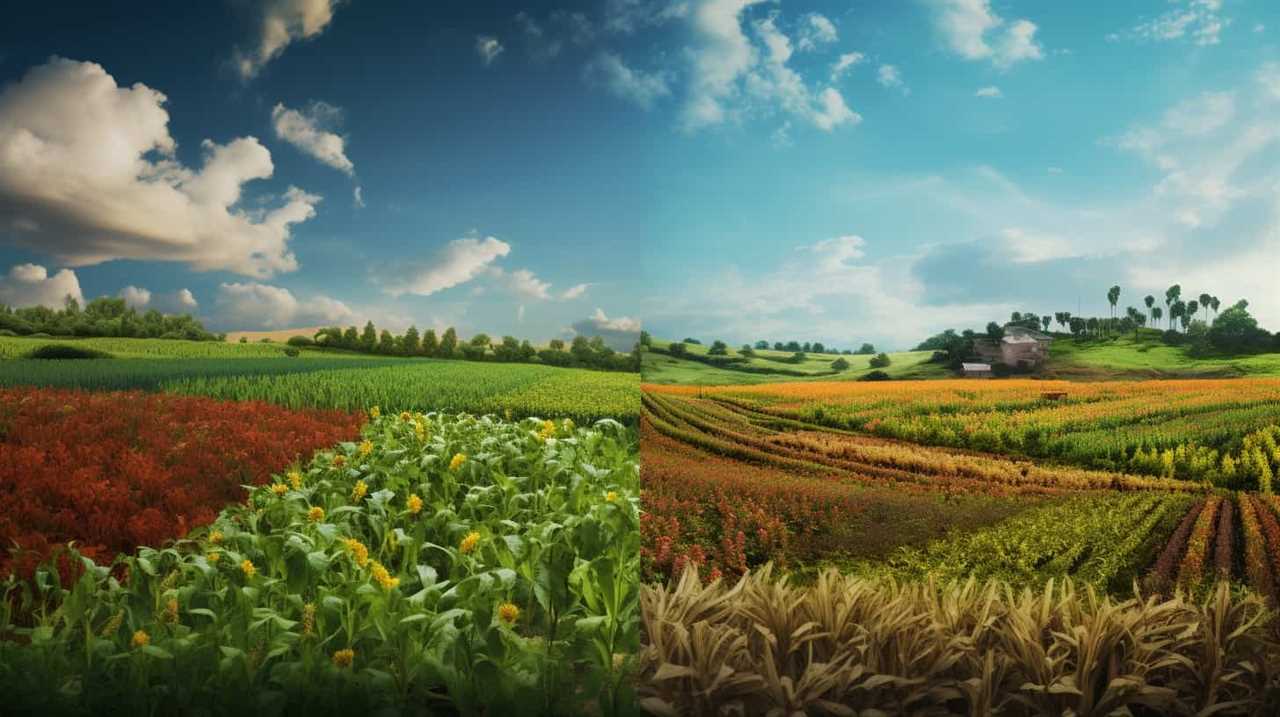
Recognizing the signs of anaphylaxis and knowing the emergency treatment options can be crucial in preventing a fatal outcome.
Life-Threatening Symptoms Explained
During a severe allergic reaction to seed allergies, symptoms can be life-threatening. It’s important to be aware of these symptoms in order to seek immediate medical attention.
Here are four common life-threatening symptoms that may occur during an allergic reaction:
-
Difficulty breathing: This can include wheezing, shortness of breath, or a feeling of tightness in the chest. It may be accompanied by a rapid heartbeat and a drop in blood pressure.
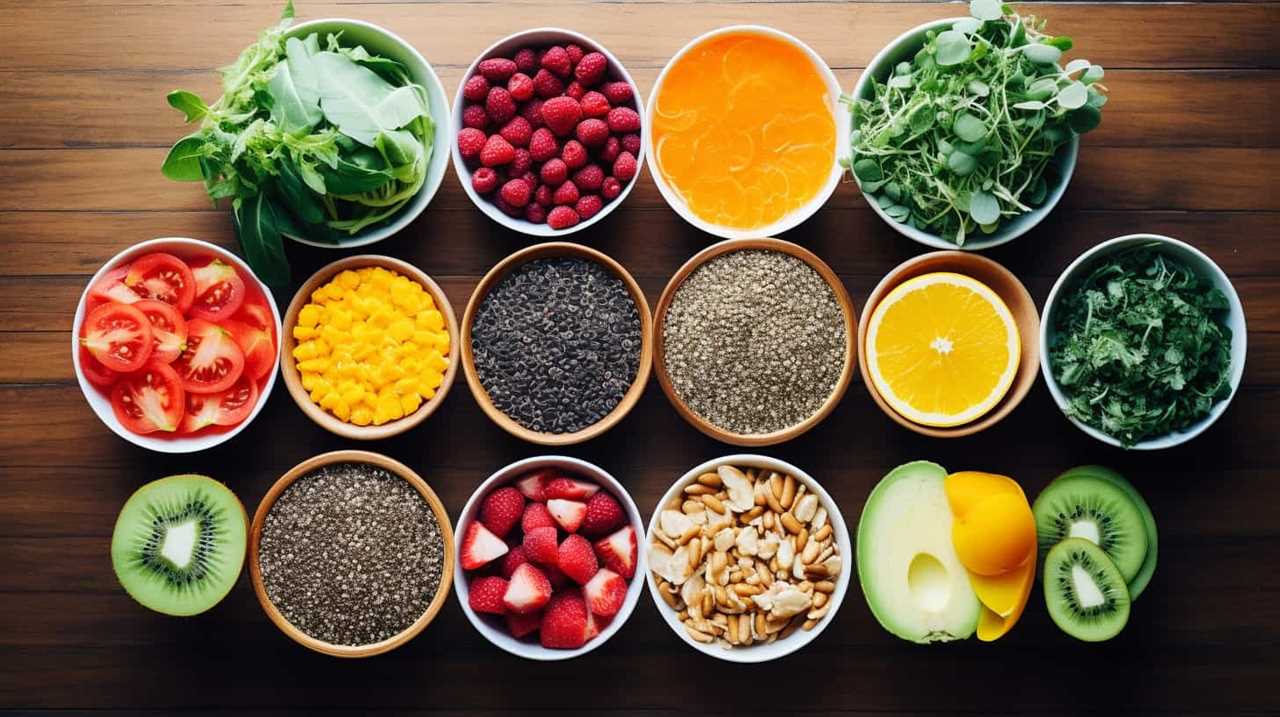
-
Swelling: Swelling of the face, lips, tongue, or throat can occur, potentially leading to difficulty speaking, swallowing, or breathing.
-
Dizziness or lightheadedness: This can result from a drop in blood pressure, and may be accompanied by confusion or fainting.
-
Loss of consciousness: In severe cases, anaphylaxis can cause a loss of consciousness, which can be life-threatening if not treated immediately.
If you or someone around you experiences these symptoms during a seed allergy reaction, it’s crucial to seek emergency medical assistance.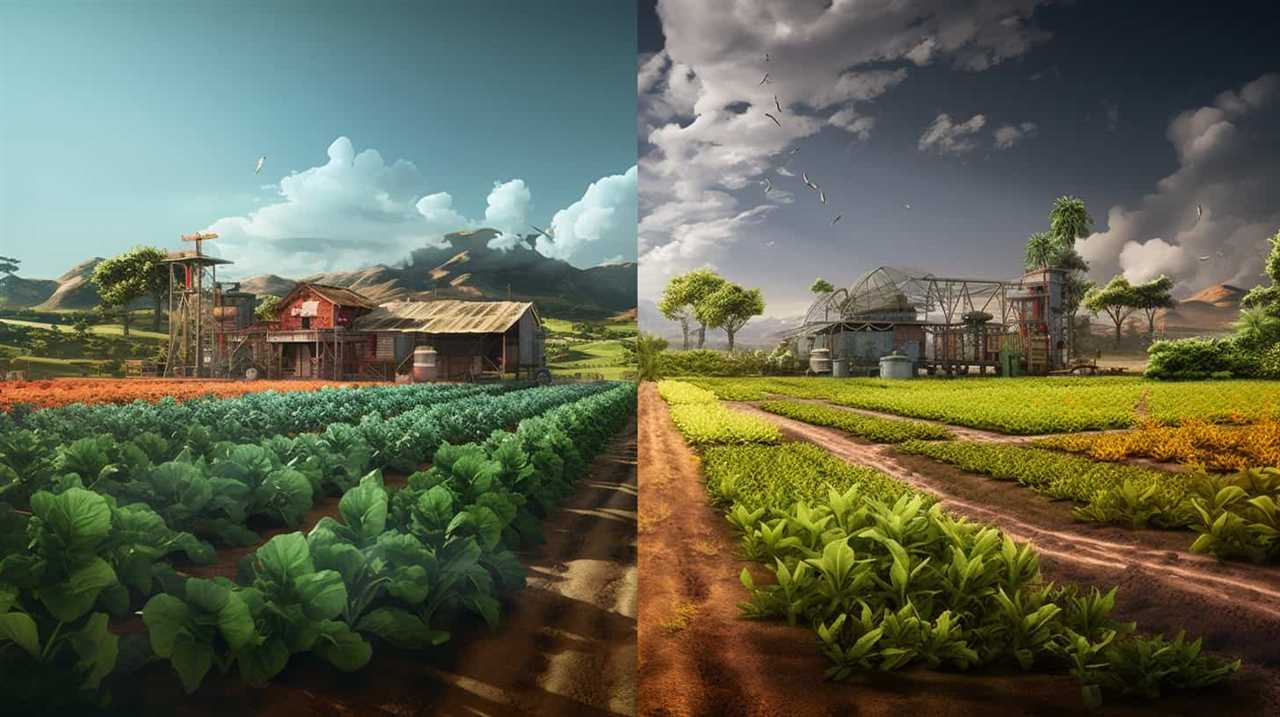
Recognizing Anaphylaxis Signs
Moving on to recognizing anaphylaxis signs, it is crucial for individuals with seed allergies to be able to identify the symptoms of a severe allergic reaction. Anaphylaxis, also known as a severe allergic reaction, can be life-threatening if not treated promptly. It is important to be aware of the signs and symptoms so that appropriate action can be taken.
Below is a table outlining the common triggers for anaphylaxis and the symptoms to look out for, especially in children:
| Triggers for Anaphylaxis | Symptoms |
|---|---|
| Food allergies (such as seeds) | Difficulty breathing, swelling of the lips or tongue, wheezing, vomiting, hives, and dizziness |
| Insect stings or bites | Itching, swelling, rash, shortness of breath, and a drop in blood pressure |
| Medications | Skin rash, facial swelling, throat tightness, and difficulty swallowing |
| Latex | Itching, hives, swelling, and difficulty breathing |
| Exercise-induced | Itchy skin, hives, flushing, and difficulty breathing |
Emergency Treatment Options
To address anaphylaxis or severe allergic reactions, it’s essential that individuals with seed allergies are familiar with emergency treatment options. These options can help manage and mitigate the potentially life-threatening symptoms that may arise from an allergic reaction.
Here are four key emergency treatment options and management strategies for individuals with seed allergies:
-
Epinephrine auto-injectors: These devices deliver a life-saving dose of epinephrine, which helps reverse the symptoms of anaphylaxis and stabilize blood pressure.
-
Emergency action plans: It’s crucial to have a written plan in place that outlines steps to take in case of an allergic reaction, including when and how to administer epinephrine.
-
Immediate medical attention: Seeking prompt medical help is vital, even after administering epinephrine, as further treatment and observation may be necessary.
-
Avoidance and prevention: The best way to manage seed allergies is to avoid exposure to the allergen altogether. This includes reading food labels, asking about ingredients when dining out, and carrying emergency medications at all times.
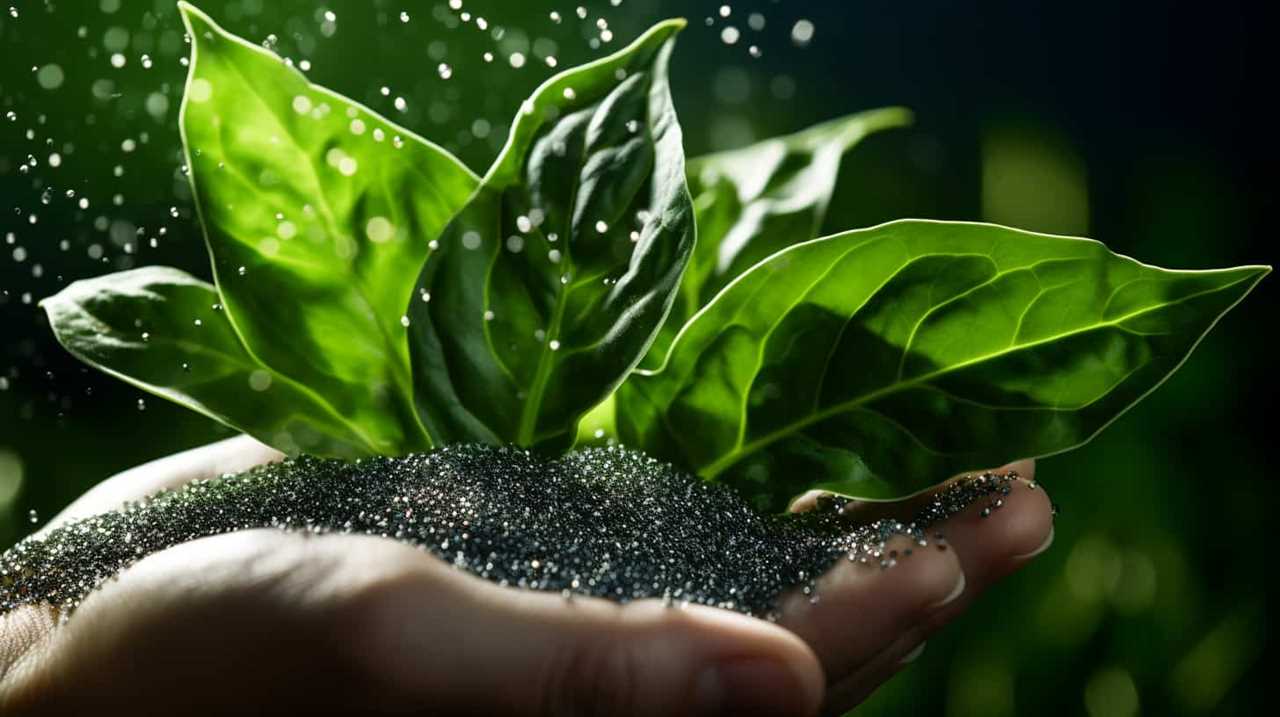
Frequently Asked Questions
How Long Do Seed Allergy Symptoms Typically Last?
Seed allergy symptoms typically last for a few hours to a few days. To alleviate these symptoms, we recommend avoiding seeds and seeking medical advice for appropriate treatment options.
Can Seed Allergy Symptoms Develop Suddenly, Even if Someone Has Never Had an Allergy Before?
Seed allergy symptoms can develop suddenly, even in those without prior allergies. While hereditary factors can play a role, there may be differences in symptoms between children and adults. Understanding these indicators is crucial for proper diagnosis and treatment.
Are There Any Specific Seeds That Are More Likely to Cause Severe Allergic Reactions?
Most allergenic seeds vary in their ability to cause severe reactions. Common symptoms of seed allergies include hives, itching, swelling, and difficulty breathing. It is important to consult a healthcare professional for proper diagnosis and management.
Can Seed Allergies Be Outgrown Over Time?
Seed allergies can sometimes be outgrown over time, but it depends on genetic factors. We’ve seen cases where people develop milder symptoms or even become completely allergy-free as they get older.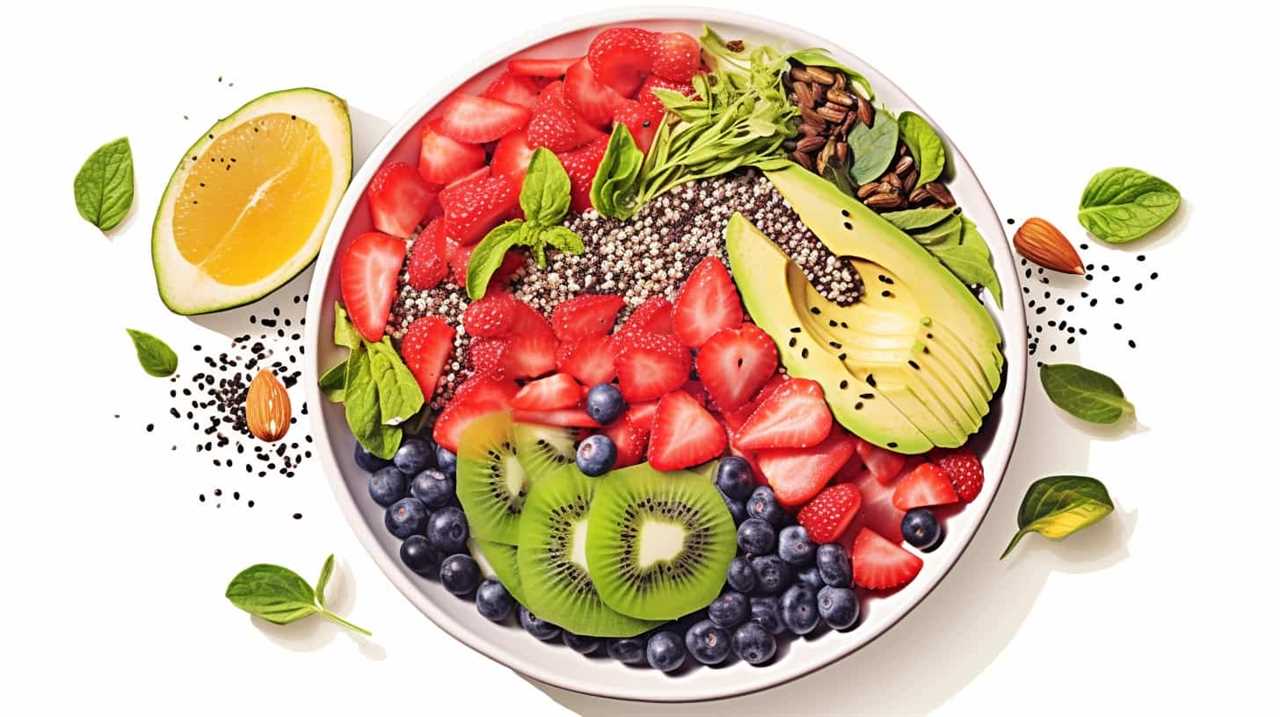
Are There Any Alternative Treatments or Remedies for Managing Seed Allergy Symptoms?
Alternative therapies and natural remedies can be effective in managing seed allergy symptoms. We’ve found that options such as acupuncture, herbal supplements, and probiotics can provide relief. It’s important to consult with a healthcare professional for personalized advice.
Conclusion
In conclusion, recognizing the indicators of seed allergy symptoms is crucial for prompt and effective treatment.
From skin rashes and hives to severe allergic reactions, such as anaphylaxis, these symptoms can significantly impact one’s health and well-being.
By being aware of these signs, individuals can seek appropriate medical attention and take necessary precautions to avoid potential allergens.
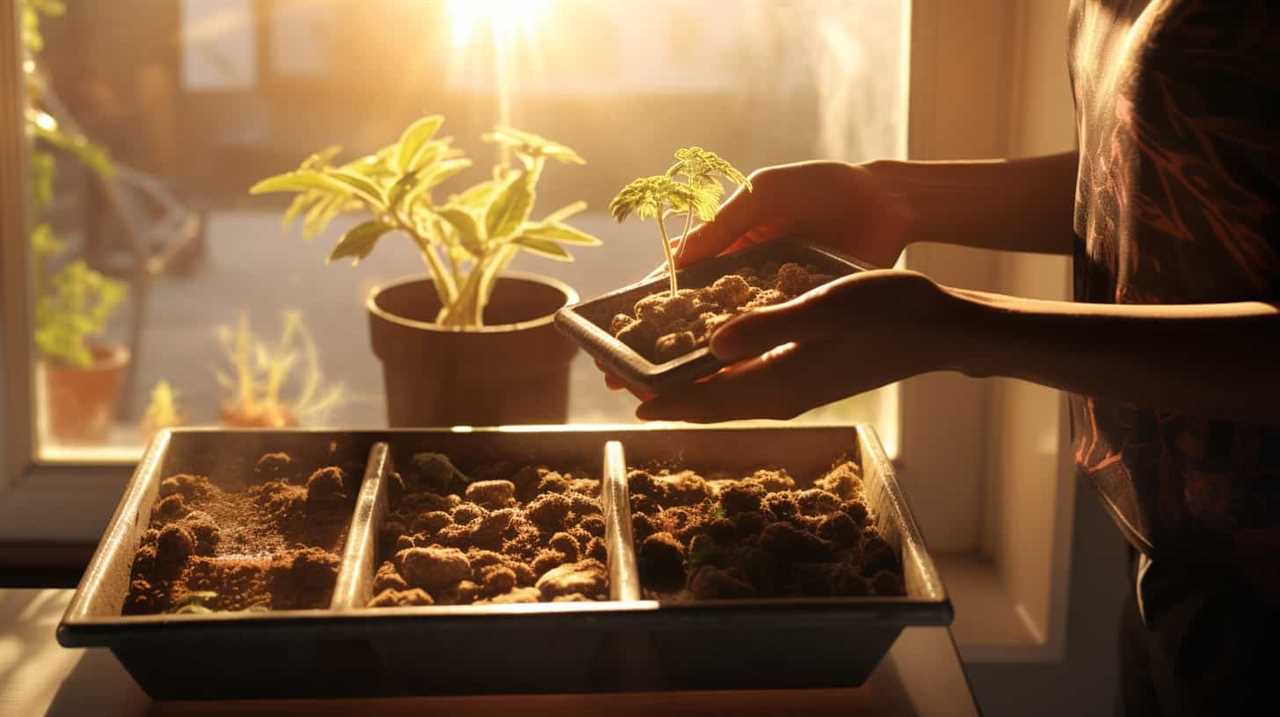
Remember, knowing the signs is the key to maintaining a balanced and allergen-free lifestyle.
Hi, I’m Sarah. I write for Turtle Tree Seeds, a news blog that loves food – all kinds of food. But especially bacon, chocolate, and veggies. We’re on a mission to show the world that you can enjoy all of those things, even kale and brussels sprouts. Because we believe that when it comes to food, there’s no such thing as guilty pleasures. Just pleasures.
I’m also a huge fan of puns (obviously).
Chia Seeds in Vegan Diet
11 Perks of Incorporating Seeds in Vegan Meals

Hello, my fellow plant-based cuisine lovers!
Are you looking for a way to add some extra oomph to your vegan meals? Well, look no further than the humble seed!
Packed with a plethora of perks, these tiny powerhouses can help you boost your heart health, improve brain function, and even aid in detoxification.
Get ready to unlock the 11 amazing benefits of incorporating seeds into your diet and take your vegan meals to a whole new level of delicious and nutritious delight.
Let’s dive in!
Key Takeaways
- Seeds in vegan meals are a rich source of omega-3 fatty acids, high in fiber content, and provide digestive health benefits.
- Incorporating seeds into vegan meals supports weight management and provides essential minerals.
- Seeds in vegan meals promote skin and hair health, nourish from within, and boost natural radiance.
- Seeds are a great source of essential nutrients, including vitamins, minerals, protein, and healthy fats, and they provide an energy boost, support athletic performance, enhance brain function, and aid in detoxification.
Rich Source of Omega-3 Fatty Acids
Seeds serve as an excellent source of omega-3 fatty acids, supporting my vegan diet with essential nutrients. Omega-3 fatty acids are essential for our overall health, and they play a crucial role in brain function, heart health, and reducing inflammation.
While fish is often touted as a rich source of omega-3s, there are plenty of plant-based options available for vegans. Chia seeds, flaxseeds, hemp seeds, and walnuts are all great sources of omega-3 fatty acids.
Incorporating these seeds into your meals can be as simple as sprinkling them on top of your favorite dishes like salads, smoothies, or oatmeal. You can also use ground flaxseeds or chia seeds as an egg substitute in baking.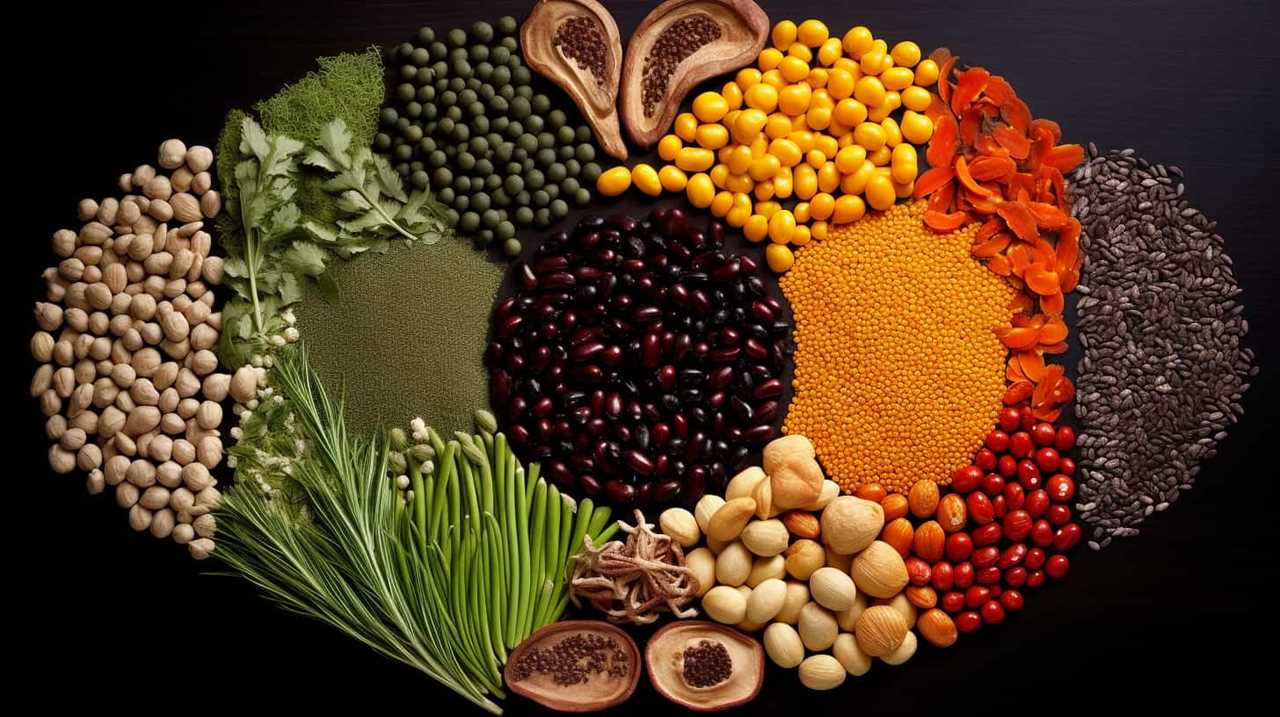
High in Fiber Content
Seeds are a valuable addition to vegan meals due to their high fiber content. Not only does fiber promote digestive health by aiding in regular bowel movements, but it also helps to keep you feeling full and satisfied, making it a helpful tool for weight management.
Additionally, seeds are nutrient-rich, providing essential vitamins, minerals, and antioxidants that contribute to overall health and well-being.
Digestive Health Benefits
One of the major benefits of incorporating seeds into my vegan meals is the improvement in my digestive health due to their high fiber content. Seeds, such as chia seeds, flaxseeds, and hemp seeds, are rich in dietary fiber, which plays a crucial role in maintaining gut health and promoting digestion.
Fiber adds bulk to the stool, making it easier to pass through the digestive tract, preventing constipation and promoting regular bowel movements. Moreover, fiber acts as a prebiotic, providing nourishment for the beneficial bacteria in the gut, which in turn supports a healthy digestive system.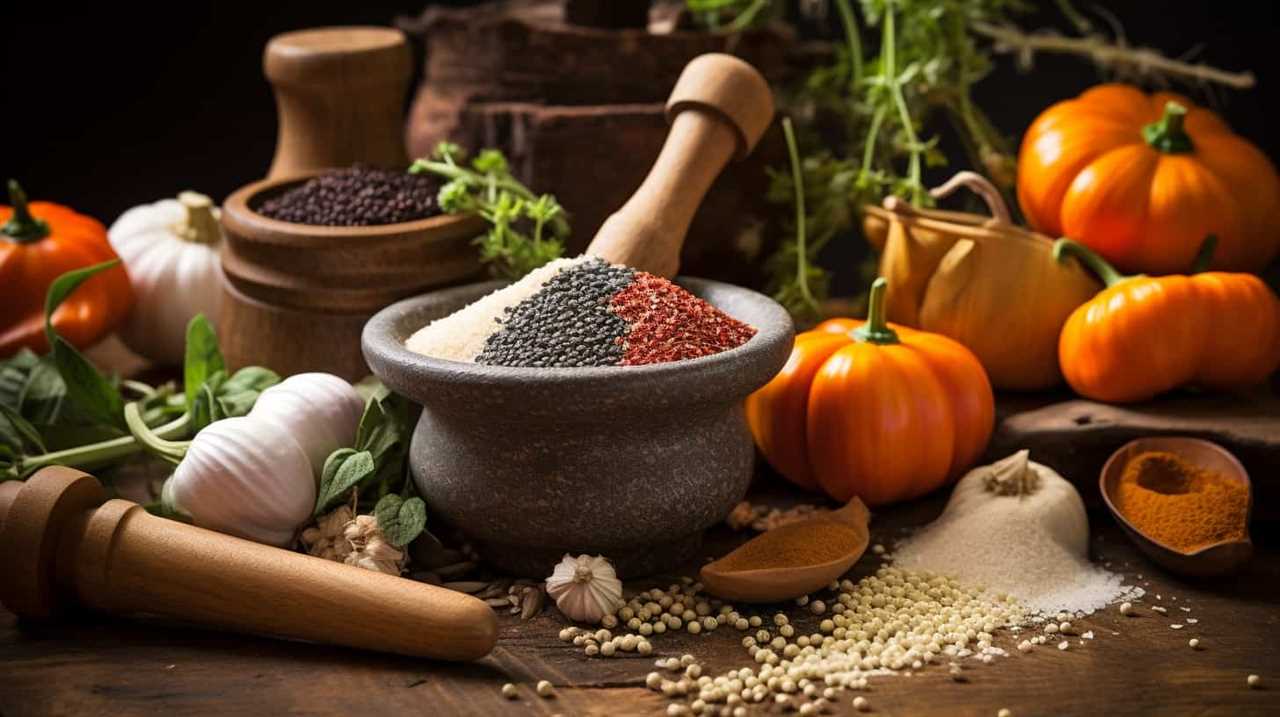
Weight Management Aid
Incorporating seeds into my vegan meals has frequently helped me manage my weight due to their high fiber content. Fiber is an essential nutrient that promotes satiety and aids in weight management. Here are three ways that seeds can assist in maintaining a healthy weight as part of a vegan meal plan:
-
Increased fullness: Seeds, such as chia and flaxseeds, possess a high water-absorbing capacity. When consumed, they expand in the stomach, leading to a feeling of fullness and reducing the likelihood of overeating.
-
Slow digestion: The soluble fiber found in seeds helps to slow down the digestion process. This slows the release of glucose into the bloodstream, preventing blood sugar spikes that can contribute to weight gain.
-
Reduced calorie intake: Seeds are low in calorie density, meaning they provide a substantial volume of food for fewer calories. By incorporating seeds into vegan meals, you can feel satisfied while consuming fewer calories, supporting healthy eating habits and weight management.
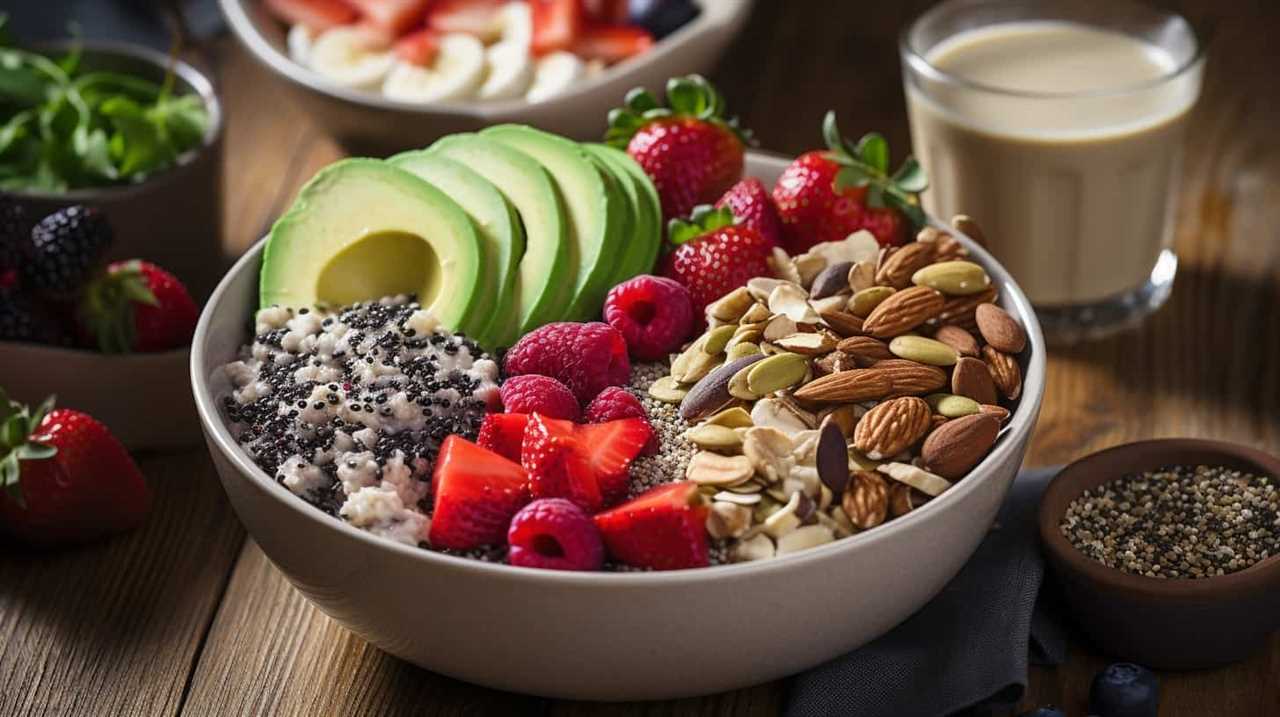
Nutrient-Rich Meal Addition
As a vegan, I’ve found that adding seeds to my meals is a nutrient-rich way to increase my fiber intake. Seeds such as chia, flax, and hemp are packed with fiber, which is essential for a healthy digestive system and overall well-being.
High-fiber diets have been linked to numerous health benefits, including immune system support and a reduced risk of chronic diseases such as heart disease and diabetes.
Additionally, incorporating seeds into meals can increase the satiety factor, helping to prevent overeating and aiding in weight management. These tiny powerhouses are also rich in vitamins, minerals, and antioxidants, making them a valuable addition to any plant-based diet.
So, by incorporating seeds into your meals, you can’t only boost your fiber intake but also support your immune system and promote satiety.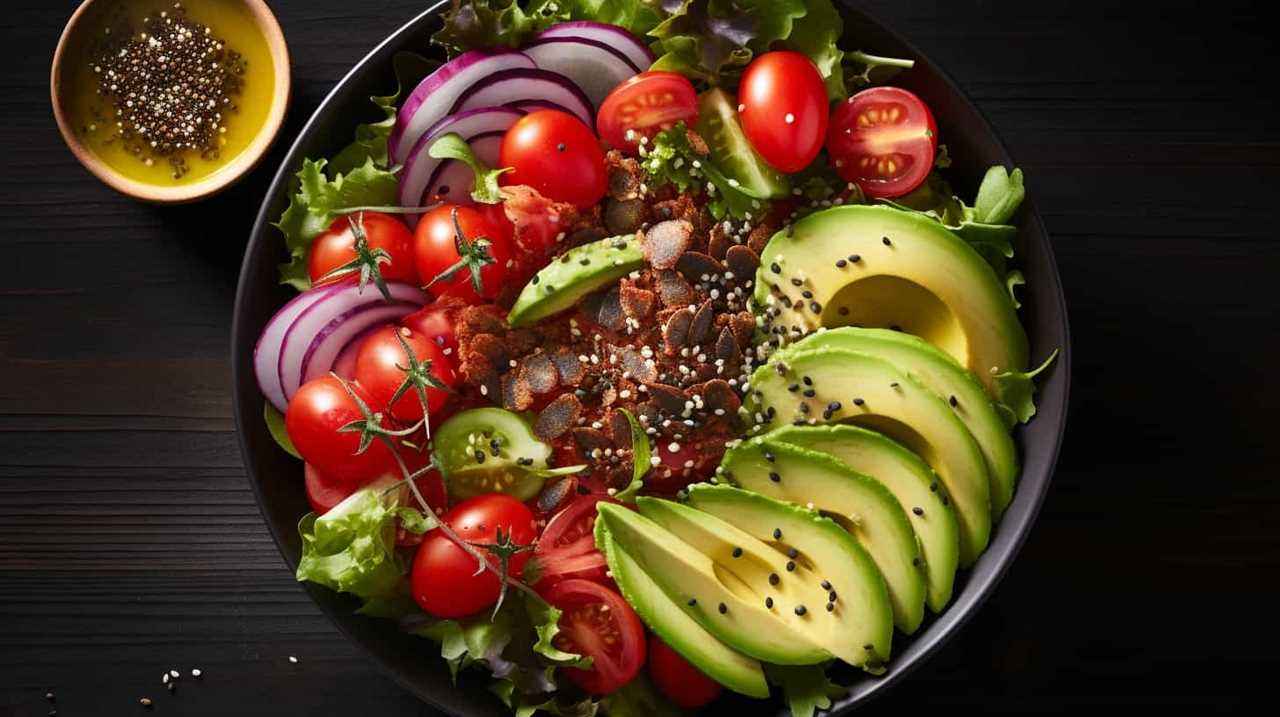
Transitioning to the next section, let’s now explore how seeds can boost heart health.
Boosts Heart Health
Including seeds in my vegan meals has been a great way to boost my heart health. Not only are seeds a delicious addition to my recipes, but they also provide numerous benefits for my cardiovascular system. Here are three ways incorporating seeds into my vegan meals has improved my heart health:
-
Rich in Omega-3 Fatty Acids: Seeds like flaxseeds and chia seeds are packed with heart-healthy omega-3 fatty acids. These essential fats help reduce inflammation, lower blood pressure, and decrease the risk of heart disease.
-
High in Fiber: Seeds are an excellent source of dietary fiber, which helps lower cholesterol levels and maintain a healthy weight. By including seeds in my meals, I can promote a healthy heart and reduce the risk of heart-related conditions.
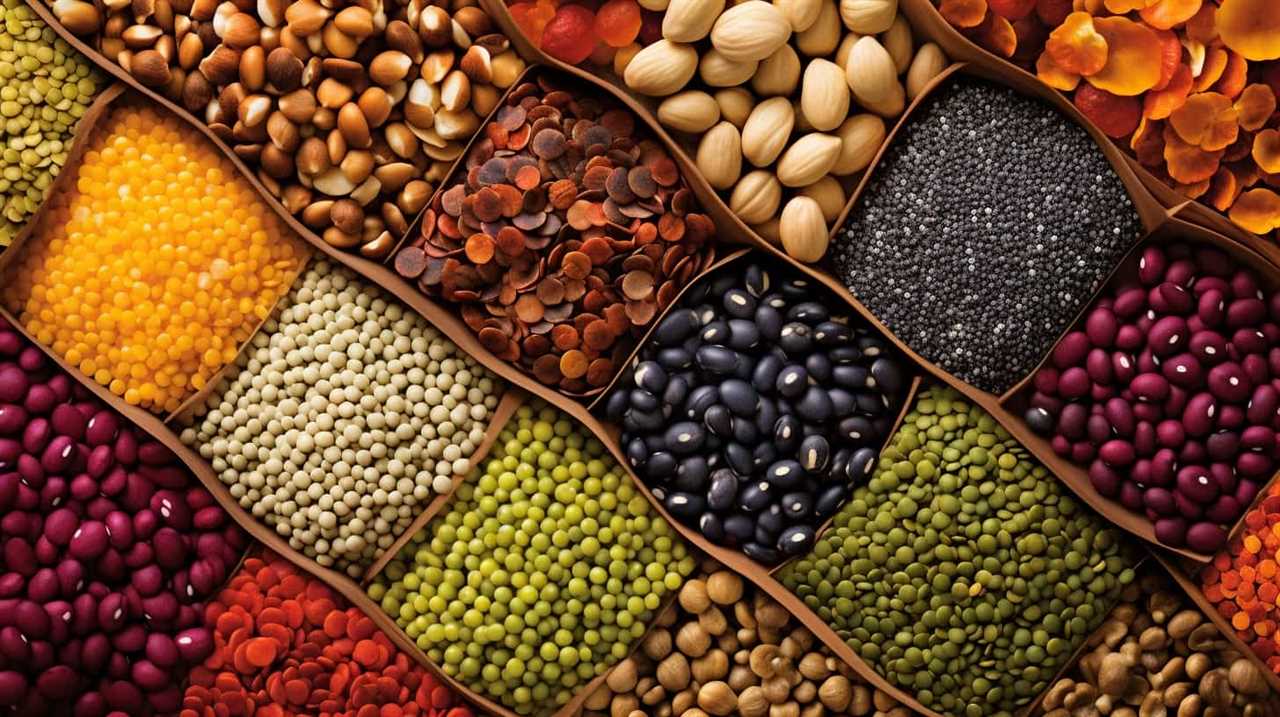
-
Antioxidant Powerhouses: Seeds are rich in antioxidants, such as vitamin E and selenium, which protect the heart from oxidative stress and reduce the risk of heart disease.
Incorporating seeds into my vegan meals not only adds flavor and texture but also provides essential nutrients that support a healthy heart. Try adding seeds to your favorite heart-healthy recipes and see the benefits for yourself!
Enhances Digestive Function
Seeds in my vegan meals have significantly improved my digestive function. Incorporating seeds into my diet has been a game-changer when it comes to improving my gut health and promoting healthy digestion.
Seeds are packed with fiber, which plays a crucial role in maintaining a healthy digestive system. Fiber adds bulk to the stool, preventing constipation and promoting regular bowel movements.
Additionally, seeds are rich in essential nutrients like omega-3 fatty acids and antioxidants, which help reduce inflammation in the gut and support overall digestive health. Chia seeds, for example, are known for their ability to absorb water and form a gel-like substance, which aids in digestion and can help alleviate symptoms of digestive disorders such as irritable bowel syndrome.
Supports Weight Management
Incorporating seeds into my vegan meals has been instrumental in supporting my weight management goals. Not only are seeds packed with essential nutrients, but they also offer unique benefits that aid in maintaining a healthy weight.
Here are three reasons why seeds are a great addition to vegan meal ideas for plant-based weight loss:
-
High in fiber: Seeds such as chia, flax, and hemp are rich in fiber, which helps to keep you feeling full and satisfied for longer periods of time. This can prevent overeating and support weight loss efforts.
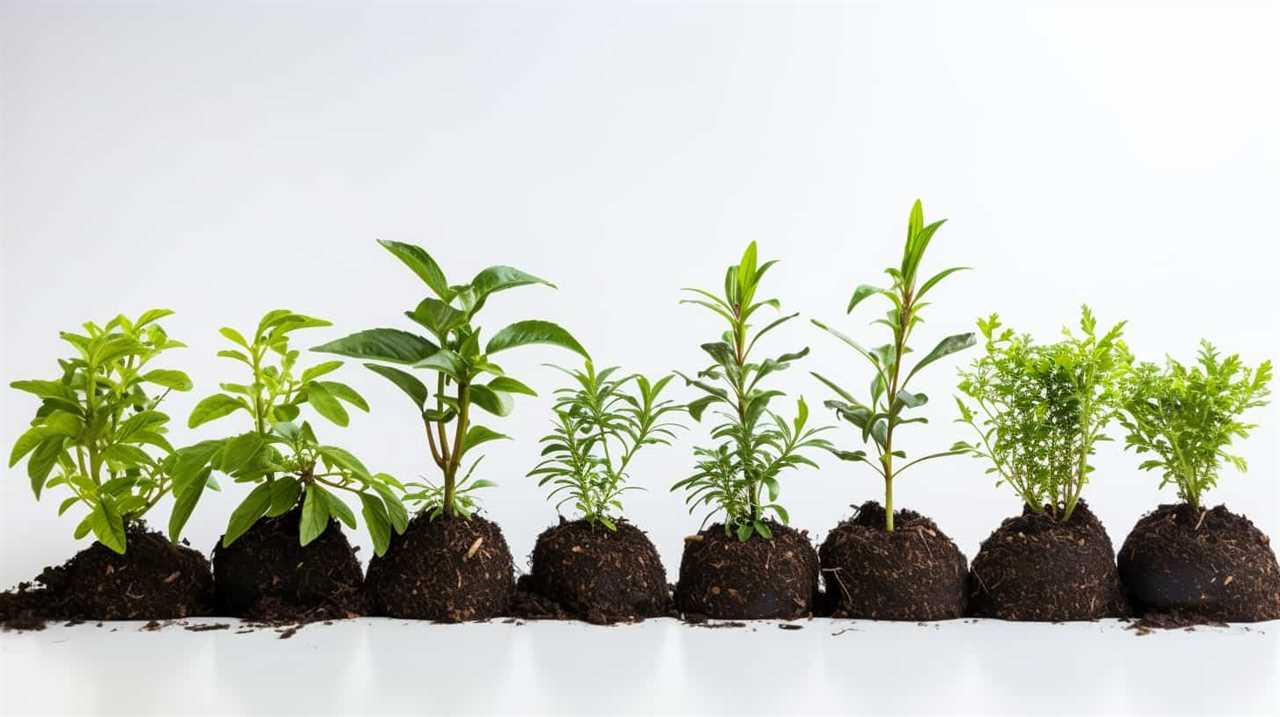
-
Healthy fats: Seeds are a great source of healthy fats, including omega-3 fatty acids. These fats are known to promote satiety and can help regulate appetite, making it easier to manage weight.
-
Protein powerhouses: Many seeds, like pumpkin and sunflower seeds, are excellent sources of plant-based protein. Protein is essential for maintaining muscle mass while losing weight, as it helps to keep you feeling full and increases your metabolic rate.
Provides Essential Minerals
I have found that incorporating seeds into my vegan meals provides me with essential minerals for optimal health. Seeds are a nutrient-dense powerhouse, containing a wide variety of minerals that our bodies need to function properly.
For example, chia seeds are an excellent source of calcium, which is essential for strong bones and teeth. Flaxseeds are rich in magnesium, a mineral that plays a vital role in over 300 biochemical reactions in the body.

Promotes Skin and Hair Health
When it comes to promoting skin and hair health, incorporating seeds into your vegan meals can work wonders. Seeds are packed with essential nutrients that nourish your body from within, helping to boost natural radiance and give your skin a healthy glow.
Additionally, the vitamins and minerals found in seeds can strengthen hair follicles, leading to stronger, healthier hair.
Nourishes From Within
One of the key benefits of including seeds in my vegan meals is that they nourish my body from within, promoting the health of my skin and hair. Seeds are packed with essential nutrients that support optimal skin and hair function.
Here are three ways seeds can nourish and enhance my skin and hair:
-
Omega-3 fatty acids found in seeds like flaxseeds and chia seeds promote gut health, reducing inflammation and supporting a healthy complexion.
-
Seeds are rich in antioxidants, such as vitamin E, which protects the skin from oxidative stress and helps improve immune function, giving me a radiant and healthy appearance.
-
The protein content in seeds, such as hemp seeds and pumpkin seeds, supports hair growth and strength, preventing breakage and promoting luscious locks.
Boosts Natural Radiance
Incorporating seeds into my vegan meals not only nourishes my body from within but also boosts my natural radiance, promoting the health of my skin and hair.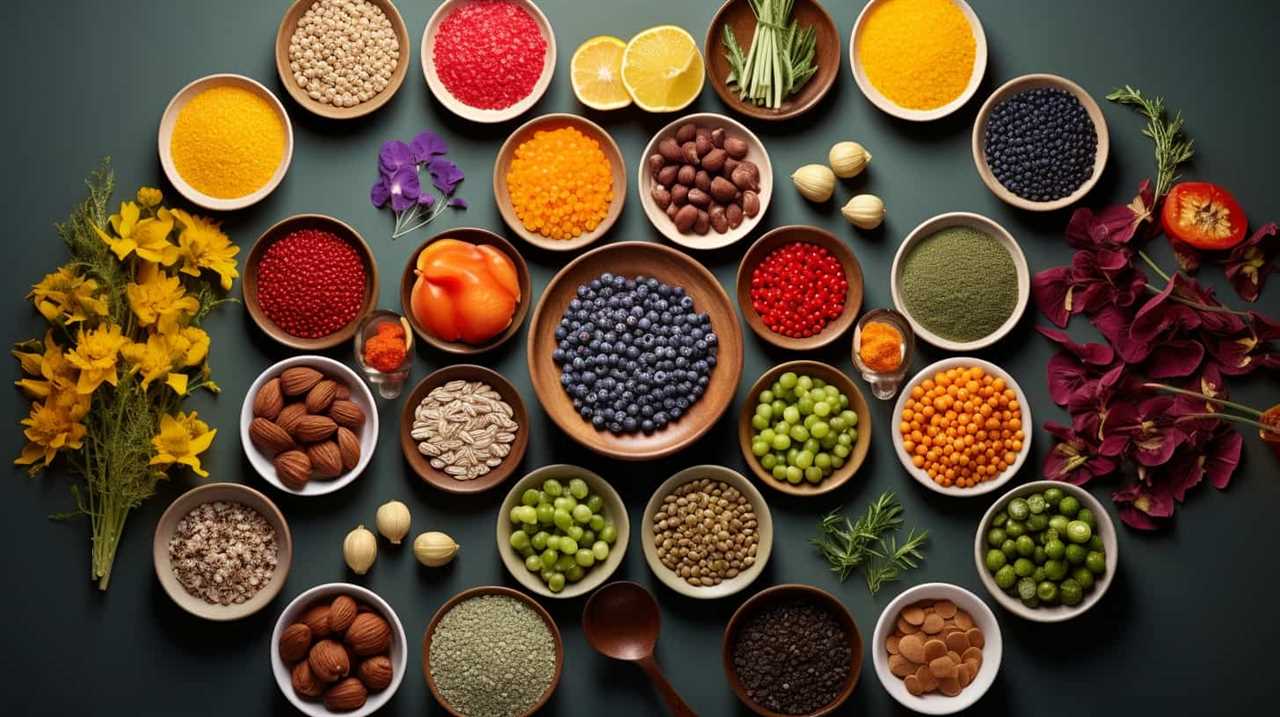
Seeds are a rich source of essential fatty acids, such as omega-3 and omega-6, which play a crucial role in maintaining skin elasticity and hydration. These fatty acids help to strengthen the skin barrier, preventing moisture loss and protecting against environmental damage.
Additionally, seeds are packed with antioxidants, vitamins, and minerals that promote collagen production, the protein responsible for maintaining the structure and firmness of the skin. By including seeds in my meals, I’m providing my body with the necessary nutrients to improve skin elasticity and achieve a radiant complexion.
Strengthens Hair Follicles
Continuing on, I regularly notice that incorporating seeds into my vegan meals not only boosts my natural radiance but also strengthens my hair follicles, promoting overall skin and hair health.
Here are three ways in which seeds support the health and growth of my hair naturally: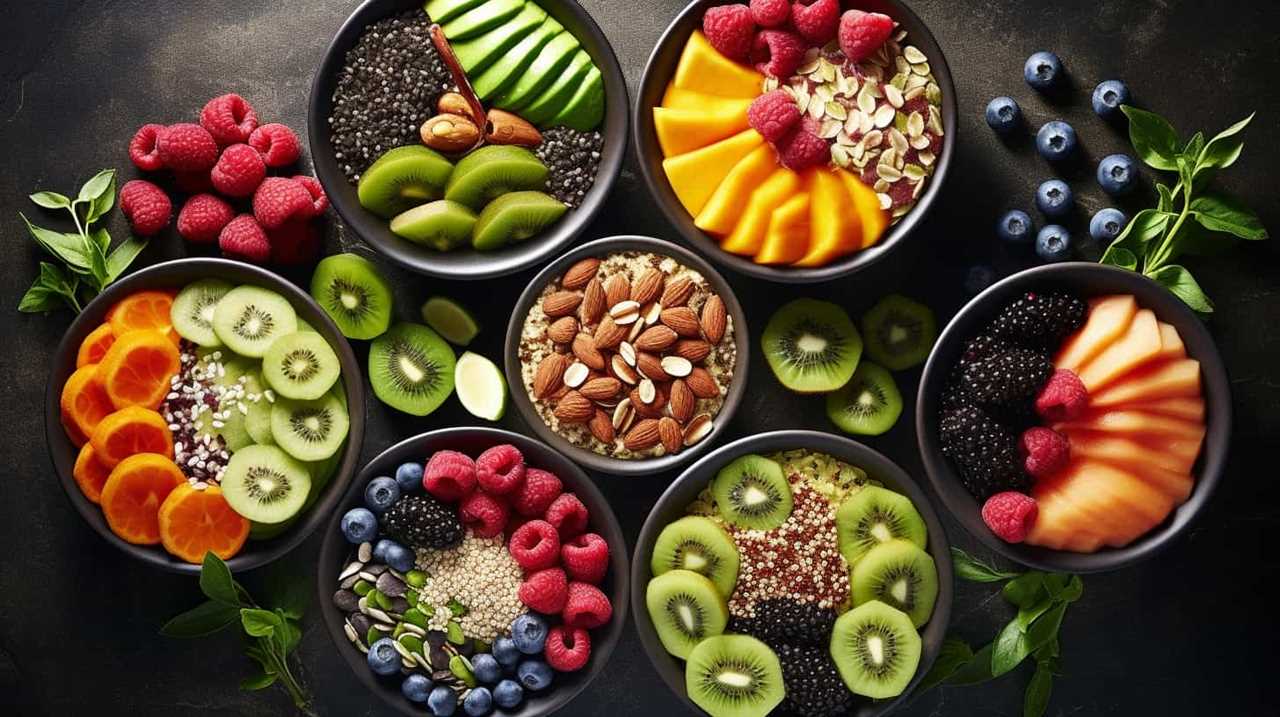
-
Rich in essential fatty acids: Seeds like flaxseeds, chia seeds, and hemp seeds are packed with omega-3 fatty acids that nourish the scalp and strengthen hair follicles from within. These fatty acids also reduce inflammation, which can contribute to hair loss.
-
High in protein: Seeds such as pumpkin seeds and sunflower seeds are excellent sources of plant-based protein. Protein is crucial for hair growth as it provides the building blocks for strong, healthy hair strands.
-
Loaded with vitamins and minerals: Seeds contain an array of vitamins and minerals like vitamin E, biotin, zinc, and selenium, which are essential for maintaining healthy hair. These nutrients promote hair growth, prevent hair breakage, and improve the overall health of the scalp.
By incorporating seeds into my vegan meals, I’m giving my hair the nourishment it needs to thrive.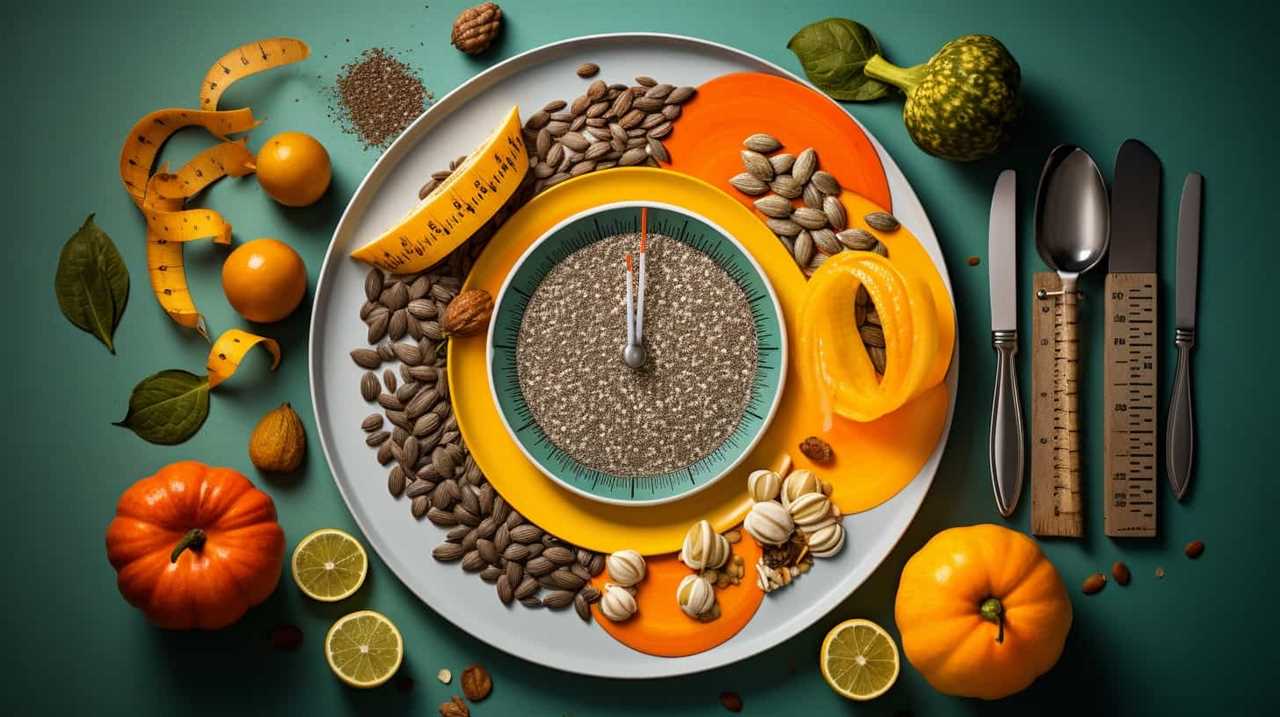
Now, let’s move on to how seeds support bone strength.
Supports Bone Strength
I have found that including seeds in my vegan meals significantly enhances bone strength. Seeds are a nutritional powerhouse, packed with essential minerals and vitamins that promote bone density and support overall bone health. They’re particularly rich in calcium, magnesium, phosphorus, and vitamin K, all of which are crucial for maintaining strong and healthy bones.
Calcium contributes to bone mineral density, while magnesium aids in calcium absorption and vitamin K helps in bone formation and repair. Additionally, the omega-3 fatty acids found in seeds have anti-inflammatory properties that promote joint health and reduce the risk of bone-related conditions like arthritis.
Boosts Energy Levels
As someone who’s always looking for ways to boost my energy levels, incorporating seeds into my vegan meals has been a game-changer. Seeds are a nutritional powerhouse, packed with vitamins, minerals, and essential fatty acids that support overall well-being and provide sustained energy.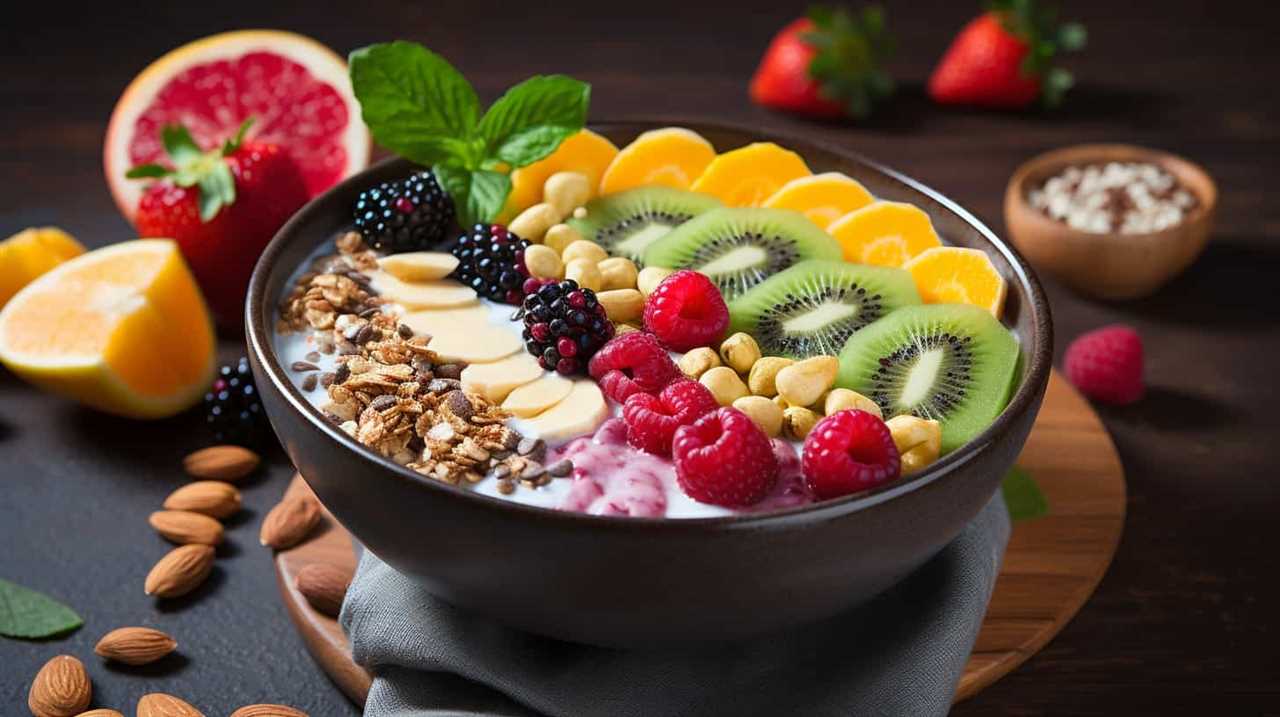
Whether I’m hitting the gym or just need a mid-afternoon pick-me-up, adding seeds like chia, flax, and hemp to my meals has enhanced my athletic performance and kept me energized throughout the day.
Nutritional Powerhouse
The inclusion of seeds in my vegan meals has proven to be a nutritional powerhouse, providing a significant boost to my energy levels. Here’s why:
-
Immune system boost: Seeds, such as chia and flaxseeds, are packed with essential nutrients like vitamins, minerals, and antioxidants. These help strengthen the immune system, keeping me healthy and energized.
-
Satiety factor: Seeds are rich in dietary fiber, which helps keep me fuller for longer periods. This prevents unnecessary snacking and helps maintain a stable energy level throughout the day.
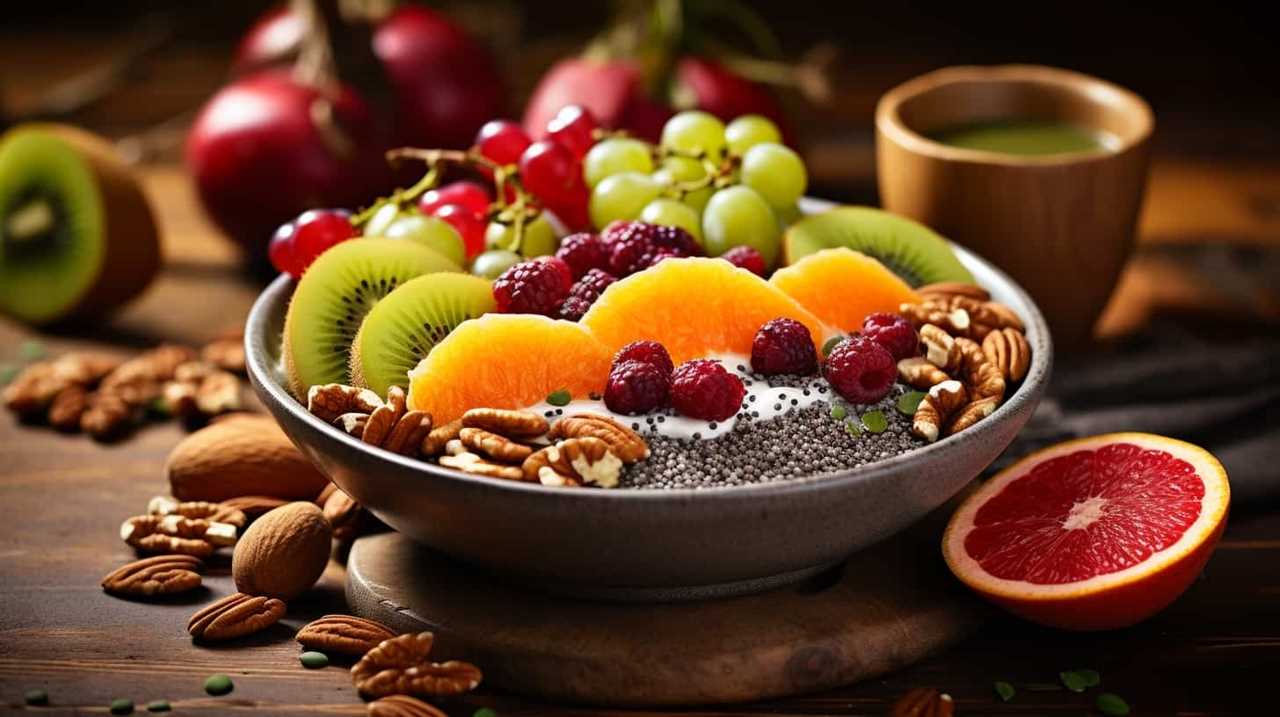
-
Nutrient density: Seeds are small but mighty, containing a concentrated amount of nutrients. They’re a great source of protein, healthy fats, and micronutrients like iron and magnesium. These nutrients are crucial for maintaining optimal energy levels and overall well-being.
Supports Overall Well-Being
How do seeds in vegan meals contribute to boosting energy levels and supporting overall well-being?
Incorporating seeds into your vegan meals can provide numerous benefits for your mental health and energy levels. Seeds are rich in essential nutrients, such as omega-3 fatty acids, protein, and fiber, which are all crucial for supporting mental well-being. Omega-3 fatty acids have been linked to improved mood and cognitive function, while protein and fiber promote satiety and regulate blood sugar levels, preventing energy crashes throughout the day. Additionally, seeds contain vitamins and minerals, like magnesium and iron, that play a vital role in energy production and reducing fatigue.
By incorporating seeds into your vegan meals, you can support your mental health, promote satiety, and maintain optimal energy levels throughout the day.
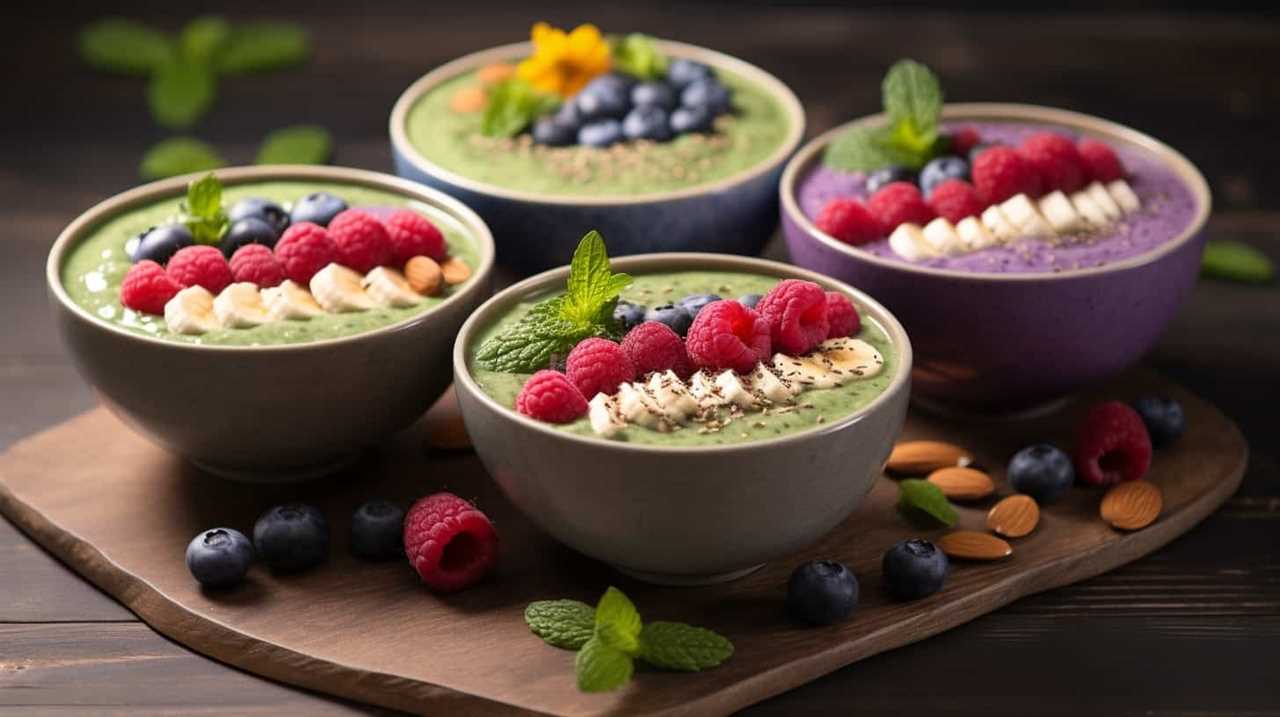
Transition: Now that we understand how seeds can support overall well-being and boost energy levels, let’s explore how they can enhance athletic performance.
Enhances Athletic Performance
Incorporating seeds in my vegan meals has significantly boosted my energy levels and enhanced my athletic performance. Here are three ways seeds have helped me improve my endurance and increase my stamina:
-
Rich in nutrients: Seeds like chia, flax, and hemp are packed with essential vitamins, minerals, and antioxidants that support overall health and provide sustained energy during workouts.
-
High in protein: Seeds are a great plant-based source of protein, which is crucial for muscle repair and growth. Consuming protein-rich seeds helps me recover faster from intense physical activity.
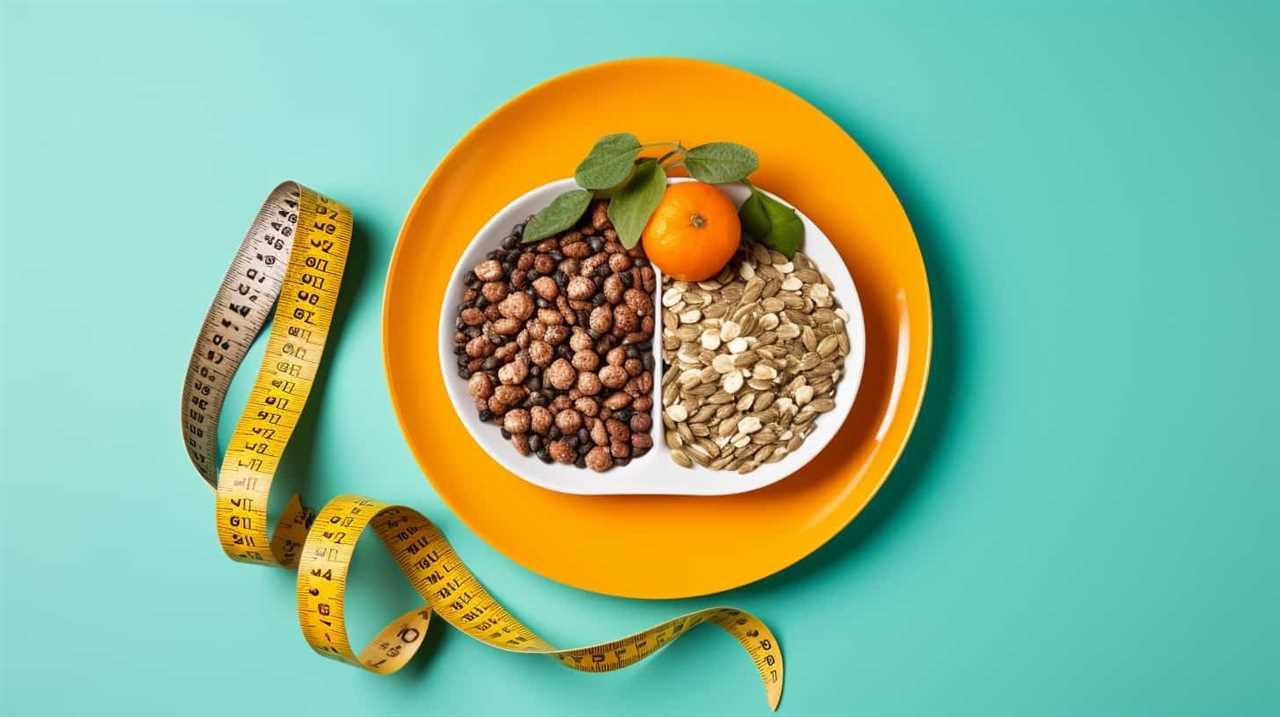
-
Omega-3 fatty acids: Seeds, particularly flax and chia, are abundant in omega-3 fatty acids, known for their anti-inflammatory properties. These healthy fats reduce exercise-induced inflammation, allowing me to train harder and for longer periods.
By incorporating seeds into my vegan meals, I’ve experienced a noticeable improvement in my athletic performance.
Now, let’s explore how seeds can also improve brain function.
Improves Brain Function
One key benefit of including seeds in my vegan meals is their ability to enhance brain function. Seeds are rich in nutrients that support cognitive health and improve memory. They are packed with omega-3 fatty acids, which are essential for brain development and function. Additionally, seeds are a great source of antioxidants, vitamins, and minerals that protect the brain from oxidative stress and inflammation. The table below provides a summary of some seeds and their specific cognitive benefits: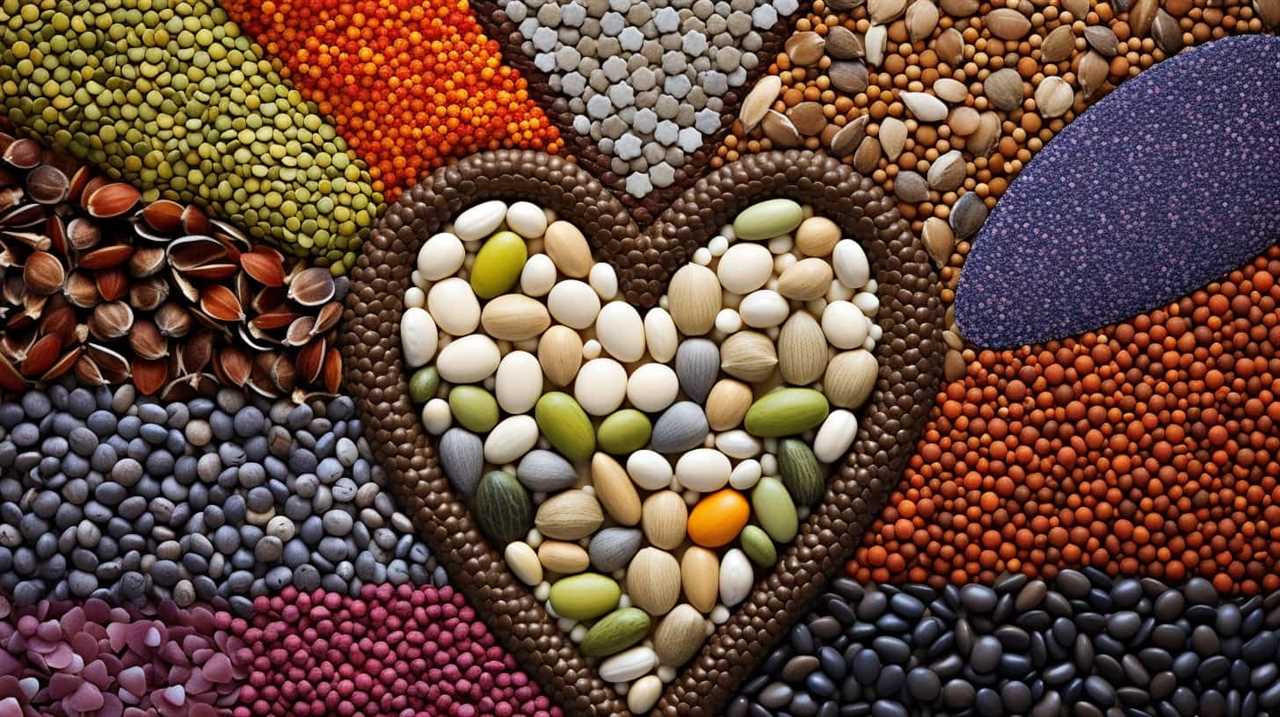
| Seed | Cognitive Benefits |
|---|---|
| Chia Seeds | Improved memory and focus |
| Flaxseeds | Enhanced cognitive function |
| Pumpkin Seeds | Reduced risk of neurodegenerative diseases |
| Sesame Seeds | Improved learning abilities |
| Sunflower Seeds | Increased mental clarity and concentration |
Incorporating these seeds into my vegan meals not only adds texture and flavor but also provides cognitive benefits that contribute to overall brain health and function.
Aids in Detoxification
Seeds play a vital role in aiding my body’s detoxification process by eliminating harmful toxins and promoting overall wellness. Here are three detoxification benefits of incorporating seeds into my vegan meals:
-
Rich in fiber: Seeds such as chia, flax, and hemp are high in fiber, which helps to cleanse the digestive system and promote regular bowel movements. This aids in the elimination of toxins from the body.
-
Packed with antioxidants: Seeds are a great source of antioxidants, which protect the body against free radicals and reduce oxidative stress. This helps to detoxify the body and promote cellular health.
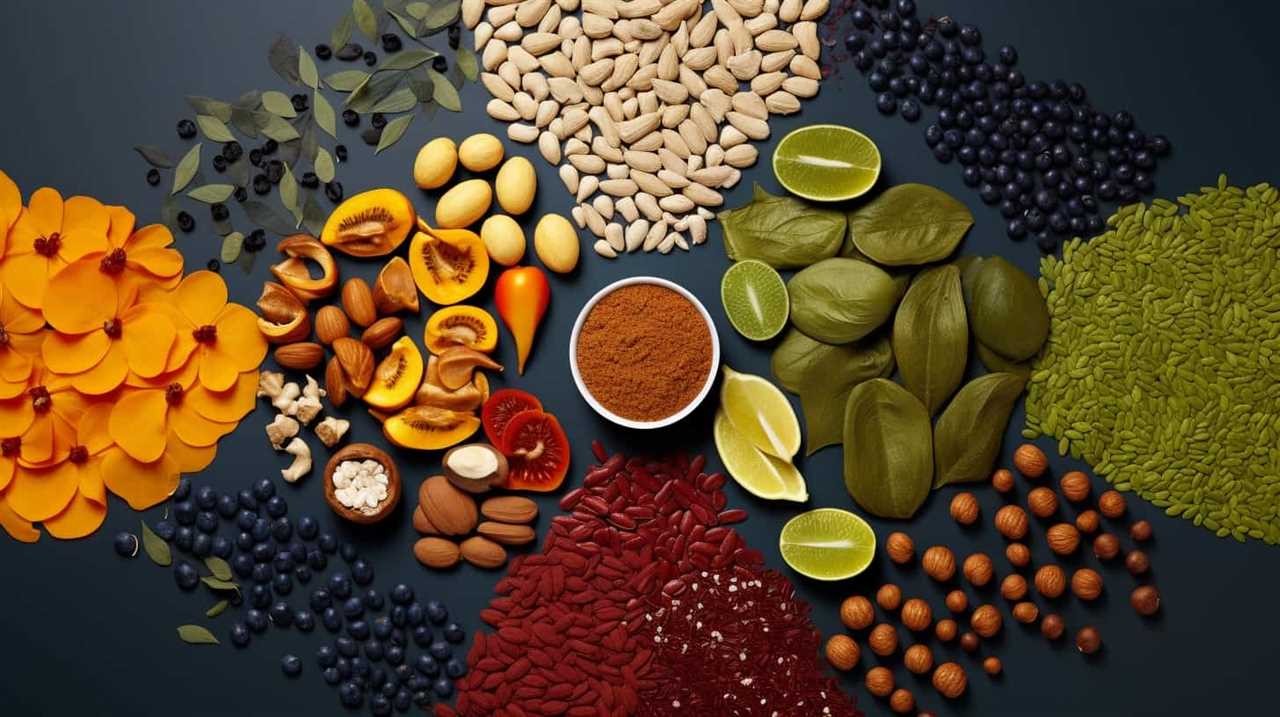
-
Liver support: Many seeds, including milk thistle and dandelion, contain compounds that support liver function. The liver is responsible for detoxifying the body, so incorporating these seeds into my meals can help enhance its detoxification abilities.
To reap the detoxification benefits of seeds, I can try adding them to smoothies, salads, or homemade energy bars. They not only enhance the flavor and texture of my vegan meals but also contribute to my overall well-being.
Frequently Asked Questions
Are All Seeds Equally High in Omega-3 Fatty Acids?
All seeds are not equally high in omega-3 fatty acids. Flaxseeds and chia seeds are excellent sources, while pumpkin and sunflower seeds contain lower amounts. To incorporate seeds in vegan meals, try adding them to smoothies, salads, or homemade granola.
Can Incorporating Seeds in Vegan Meals Help With Weight Loss?
Incorporating seeds in vegan meals can aid weight loss. Seeds provide essential nutrients, fiber, and healthy fats, keeping you fuller for longer. Athletes can benefit from seeds for muscle gain and incorporating them in plant-based diets.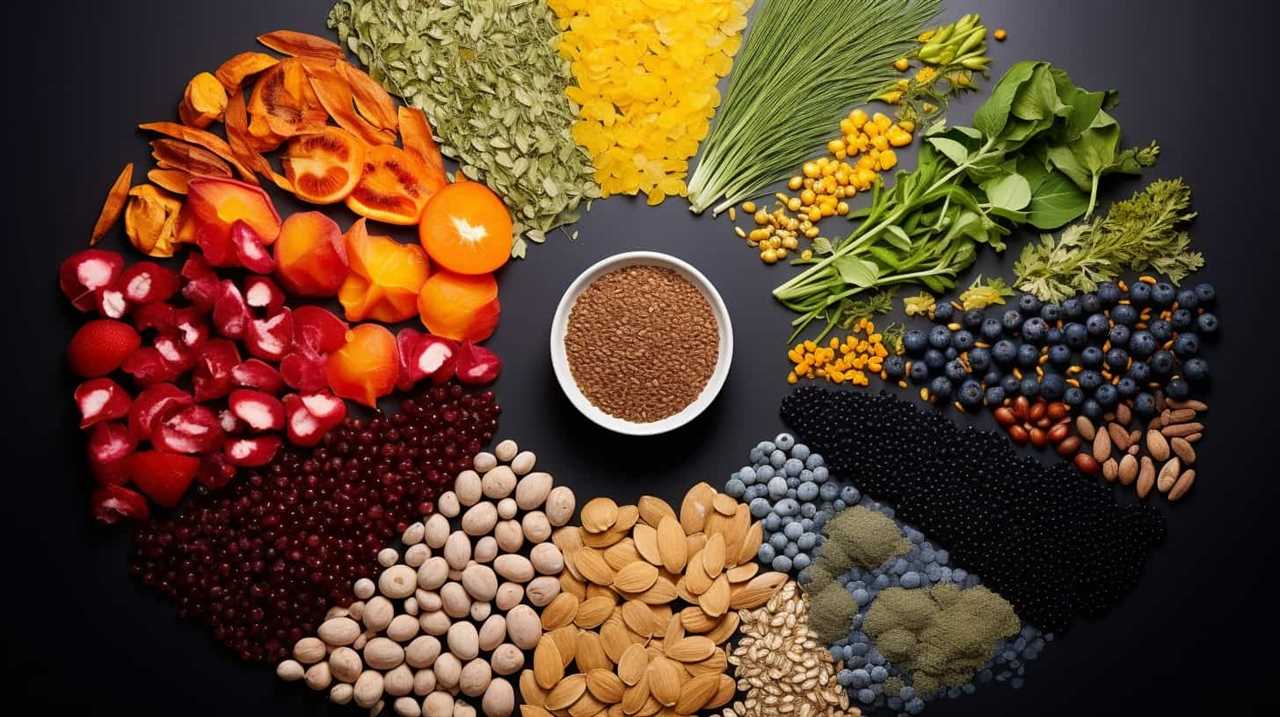
How Do Seeds Promote Skin and Hair Health?
Incorporating seeds into vegan meals contributes to overall health and well-being. They promote skin and hair health by providing essential nutrients like omega-3 fatty acids and vitamins. Get creative with recipes to maximize the benefits!
Which Seeds Are the Best for Improving Brain Function?
When it comes to improving brain function, the best seeds for memory and cognitive function are flaxseeds, chia seeds, and pumpkin seeds. These seeds are rich in omega-3 fatty acids, antioxidants, and nutrients that support brain health.
Can Incorporating Seeds in Vegan Meals Help With Detoxification?
Incorporating seeds in vegan meals can aid in digestion and gut health by providing fiber and essential nutrients. Additionally, they have anti-inflammatory properties, which can help reduce inflammation in the body.
Conclusion
Incorporating seeds into vegan meals offers a range of benefits for overall health and well-being. Not only are they a rich source of omega-3 fatty acids and fiber, but they also boost heart health, support weight management, and improve brain function.
One interesting statistic is that incorporating just one tablespoon of chia seeds into your diet can provide 5 grams of fiber, which is 20% of the recommended daily intake.
So why not sprinkle some seeds on your next vegan meal and reap the rewards of their nutritional goodness?
Hi, I’m Sarah. I write for Turtle Tree Seeds, a news blog that loves food – all kinds of food. But especially bacon, chocolate, and veggies. We’re on a mission to show the world that you can enjoy all of those things, even kale and brussels sprouts. Because we believe that when it comes to food, there’s no such thing as guilty pleasures. Just pleasures.
I’m also a huge fan of puns (obviously).
Chia Seeds in Vegan Diet
11 Essential Tips for Using Seeds in Vegan Recipes
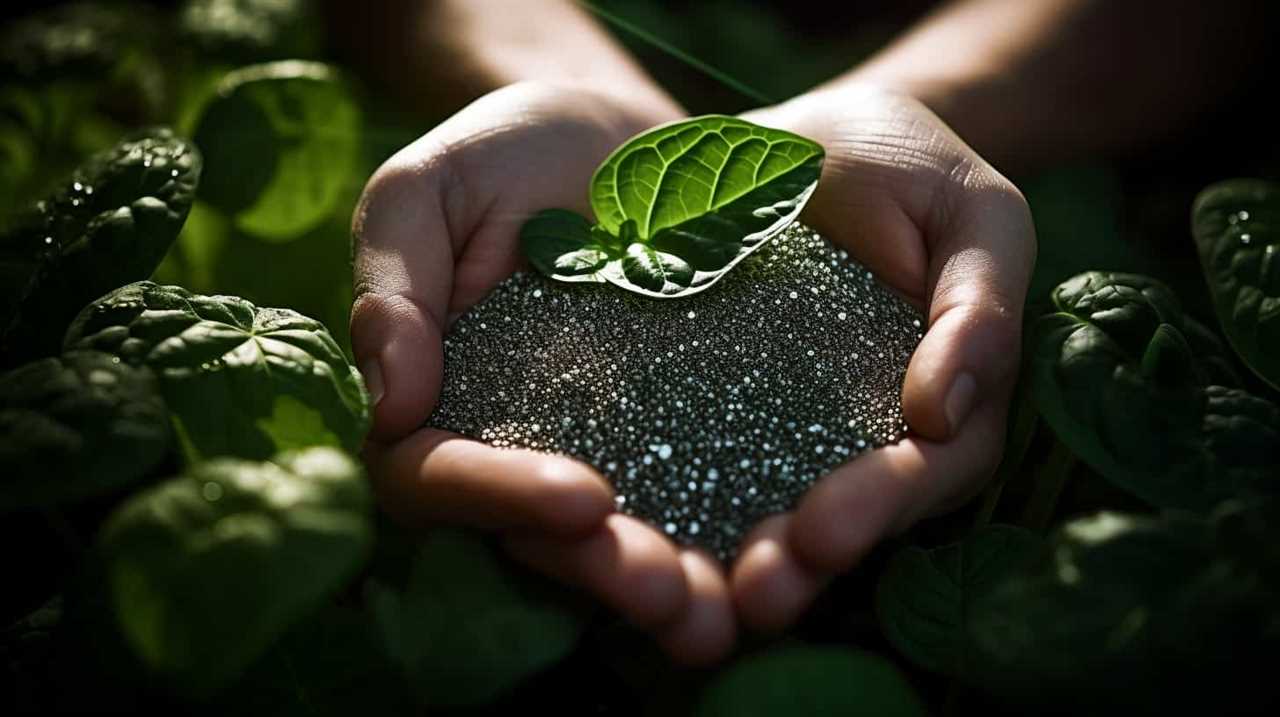
Hi there!
Looking to add some plant-based goodness to your vegan recipes? Well, let me spill the seeds of wisdom. In this article, I’ll share my top 11 essential tips for using seeds in your culinary creations.
From chia seeds as an egg replacer to making nutritious chia seed pudding, we’ve got you covered.
So get ready to elevate your vegan cooking game with these helpful tips. Let’s dive in and unlock the potential of seeds for your kitchen adventures!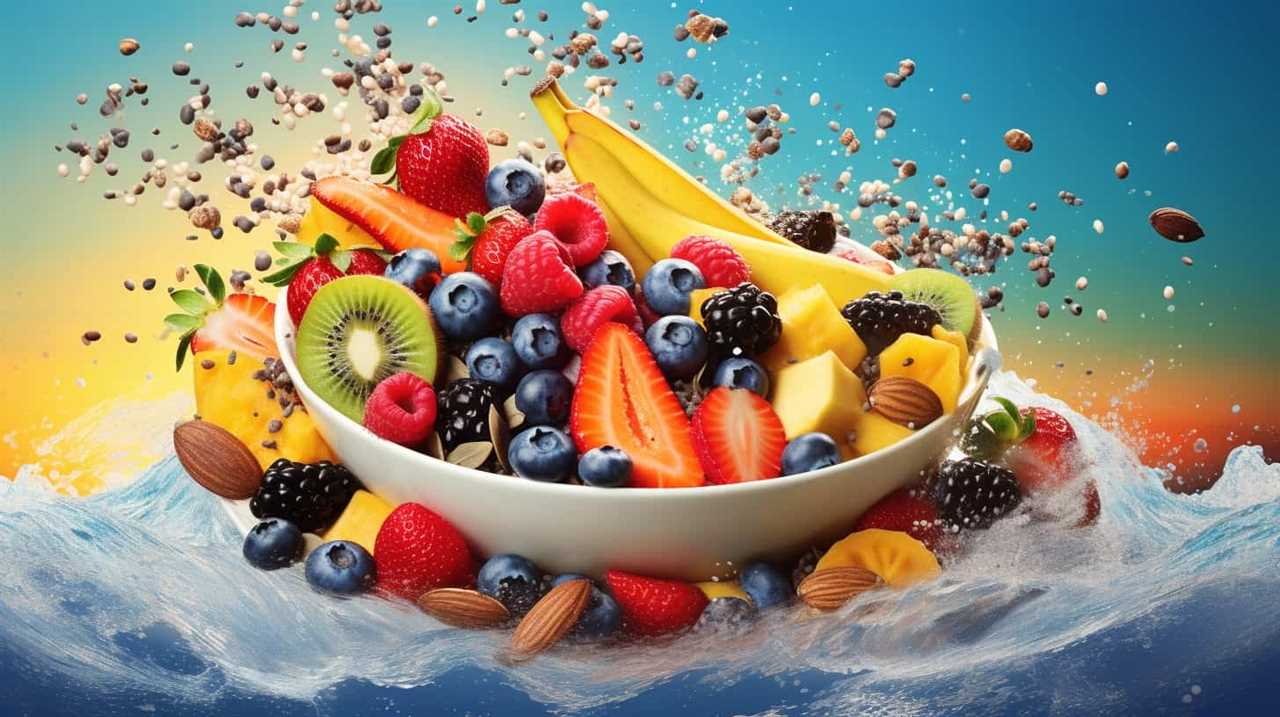
Key Takeaways
- Incorporate a variety of seeds, such as chia, flax, and hemp, to maximize nutritional benefits.
- Use seeds as toppings for salads, yogurt, or oatmeal to add texture and flavor.
- Grind seeds into a powder to use as a substitute for eggs in baking recipes.
- Sprinkle seeds onto roasted vegetables for added crunch and nutritional value.
Soak Chia Seeds Before Using
Before using chia seeds in vegan recipes, I always make sure to soak them. This simple step is crucial for unlocking the many benefits of chia seeds.
Soaking chia seeds in water or plant-based milk helps to enhance their digestibility and nutrient absorption. When soaked, chia seeds form a gel-like consistency that can be used as a binding agent in various recipes. This gel also adds moisture and texture to baked goods, making them moist and fluffy.
Soaking chia seeds also increases their antioxidant content, which can help reduce inflammation in the body. Incorporating soaked chia seeds into your vegan dishes is a great way to boost their nutritional value and add a satisfying texture.
From smoothies and puddings to breads and muffins, there are countless chia seed recipes to explore. So, don’t forget to soak your chia seeds before using them to truly experience their benefits in your vegan creations.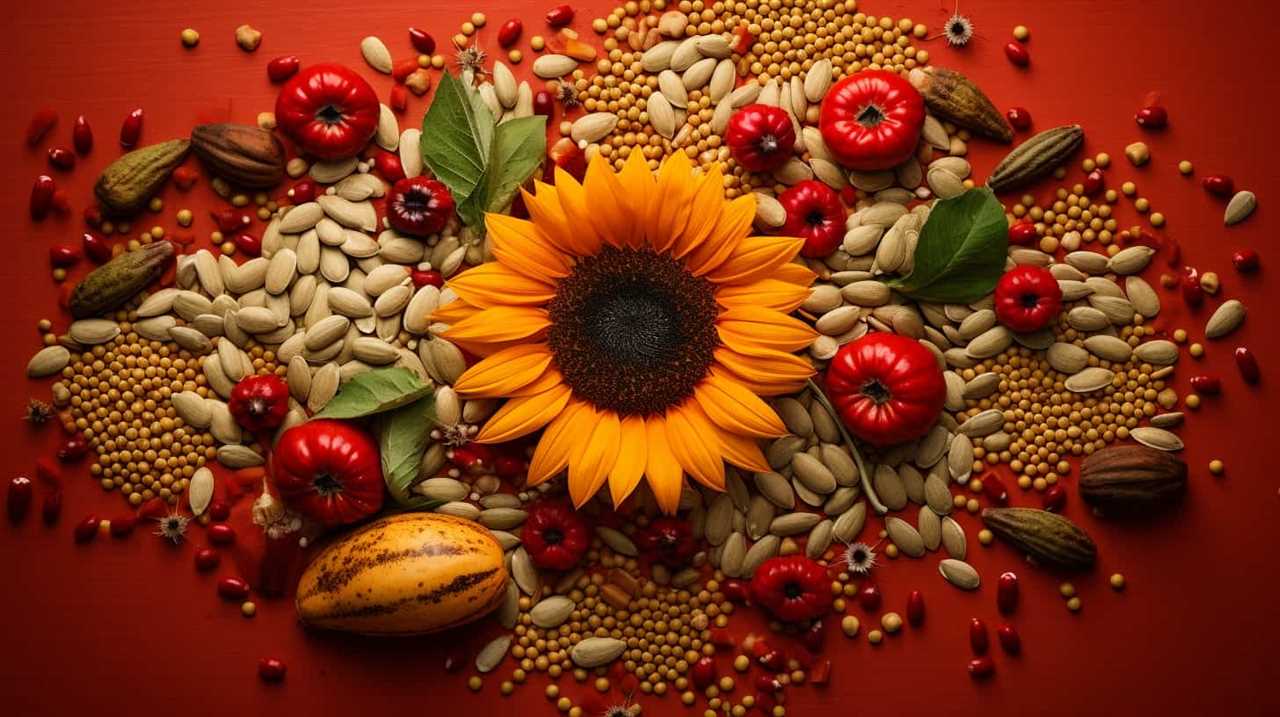
Use Chia Seeds as an Egg Replacement
When it comes to vegan baking, finding a suitable egg replacement is crucial. Chia seeds are an excellent option to consider. They’re rich in fiber, omega-3 fatty acids, and protein, making them a nutritious substitute for eggs.
Unlike flax seeds, chia seeds don’t require grinding before use, making them even more convenient in recipes.
Additionally, there are other egg substitute options available for those with allergies or dietary restrictions.
Chia Vs. Flax: Differences
I prefer using chia seeds as an egg replacement in vegan recipes due to their unique properties and versatility. When comparing chia seeds to flax seeds, it’s important to consider their nutritional profiles and best uses.
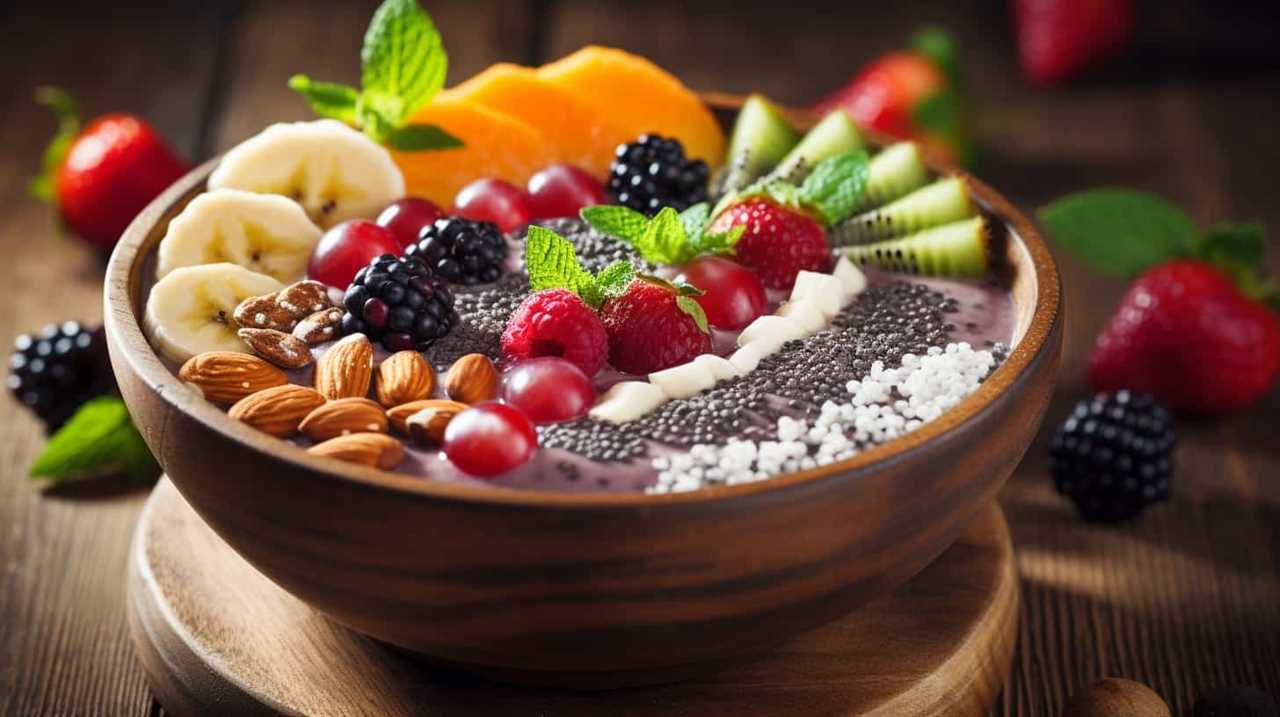
Here are three key differences between chia seeds and flax seeds:
-
Omega-3 fatty acids: Chia seeds contain more omega-3s than flax seeds, making them a great choice for promoting heart health and reducing inflammation.
-
Fiber content: Chia seeds have a higher fiber content than flax seeds, which can aid in digestion and help regulate blood sugar levels.
-
Gel-forming ability: Chia seeds have a remarkable ability to absorb liquid and form a gel-like substance, making them an excellent option for binding ingredients together in recipes.
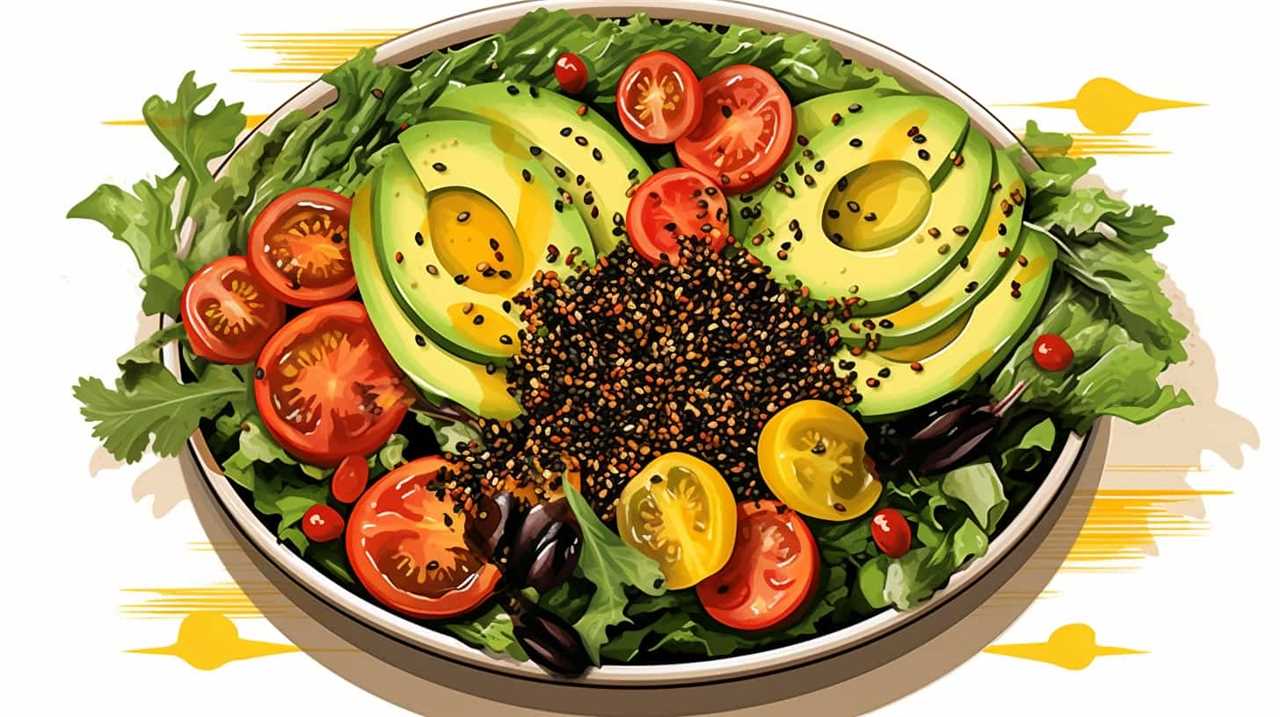
Now that we’ve explored the differences between chia and flax seeds, let’s move on to other egg substitute options.
Other Egg Substitute Options?
Another option for replacing eggs in vegan recipes is using chia seeds as an egg substitute. Chia seeds are a versatile ingredient that can be used in various recipes to provide the binding and thickening properties typically associated with eggs.
To use chia seeds as an egg substitute, simply combine one tablespoon of chia seeds with three tablespoons of water and let it sit for about 10 minutes until it forms a gel-like consistency. This chia gel can then be used as a substitute for one egg in your recipe.
The benefits of using chia seeds as an egg substitute include their high nutritional value, as they’re rich in omega-3 fatty acids, fiber, and protein. Additionally, chia seeds are gluten-free and can add a subtle crunch to your dishes.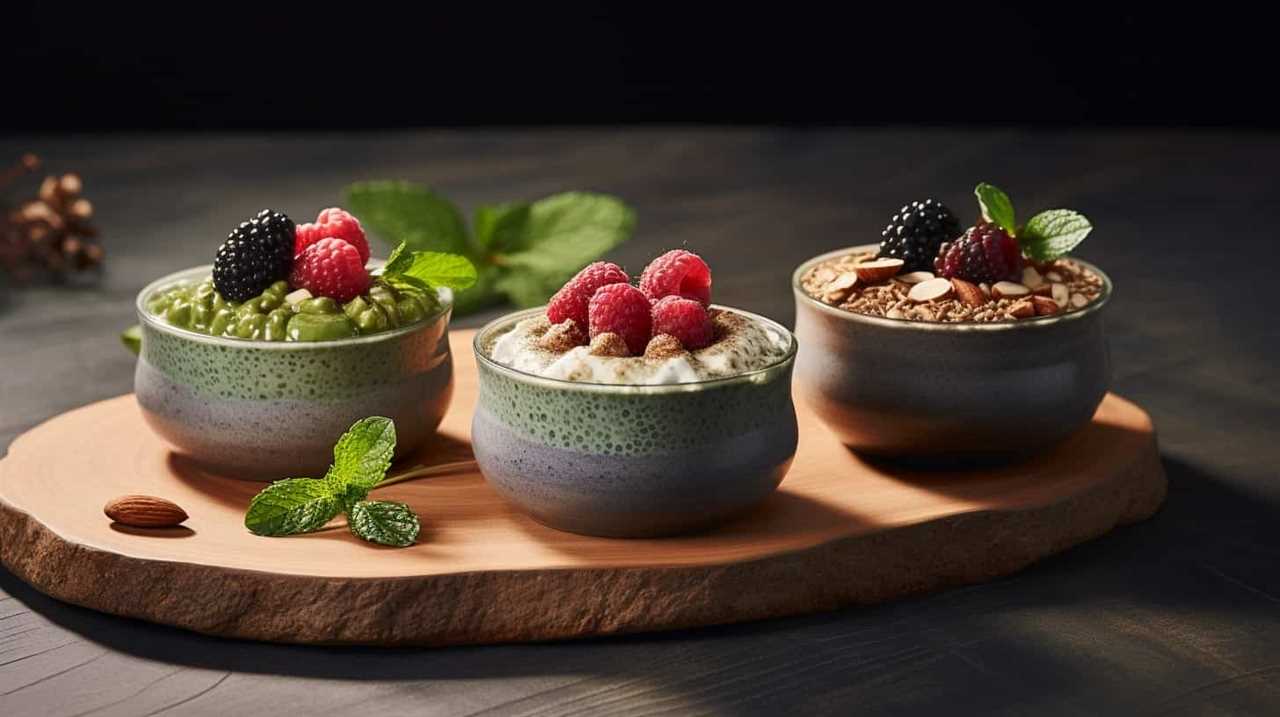
Make Chia Seed Pudding for a Nutritious Dessert
To create a nutritious dessert, I recommend making chia seed pudding. Chia seeds are packed with nutrients like fiber, omega-3 fatty acids, and antioxidants, making them a great addition to any vegan diet.
Here are three reasons why chia seed pudding is a fantastic choice for a healthy and indulgent treat:
-
Versatility: Chia seed pudding can be customized to suit your taste preferences. You can experiment with different flavors by adding fruits, nuts, or spices like cinnamon or cocoa powder. You can even use chia seed smoothie recipes as a base for your pudding, creating a creamy and delicious dessert.
-
Easy to make: Making chia seed pudding is incredibly simple. All you need to do is mix chia seeds with your choice of liquid (such as almond milk or coconut milk) and let it sit in the fridge overnight. The chia seeds will absorb the liquid and create a thick, pudding-like consistency.
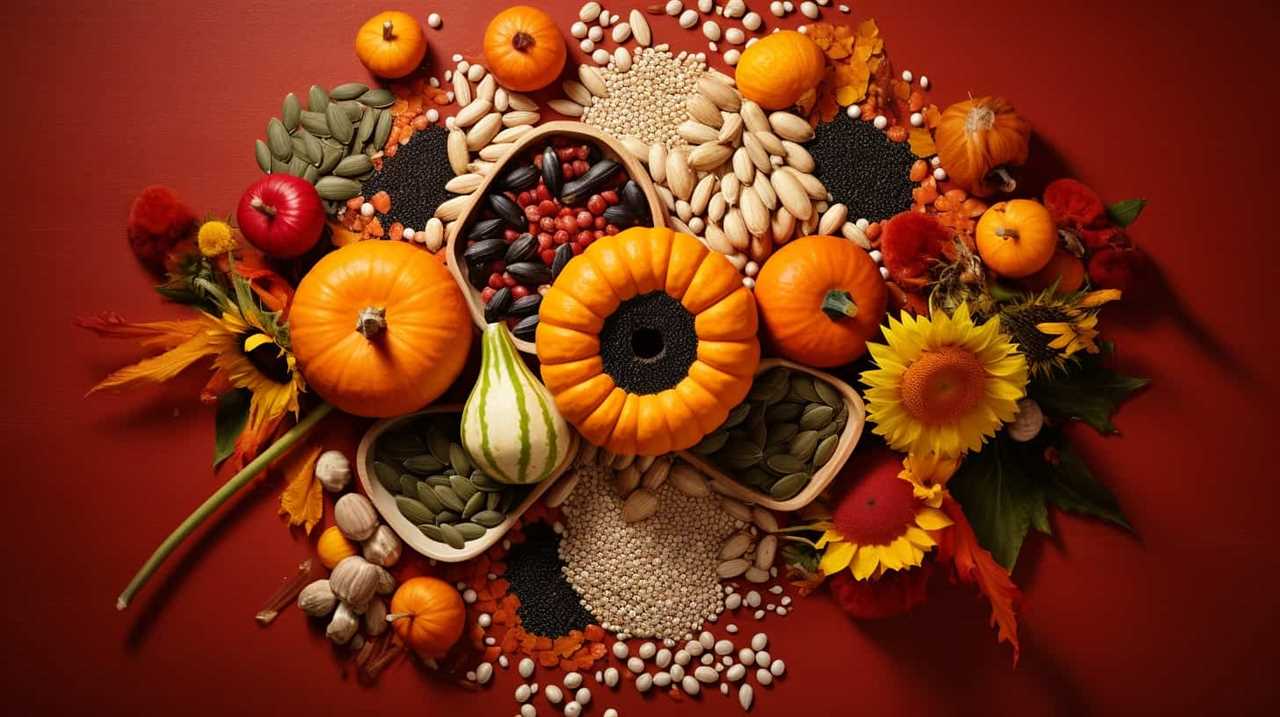
-
Nutritional benefits: Chia seeds are a nutritional powerhouse. They’re rich in fiber, which helps with digestion and promotes a feeling of fullness. They also contain omega-3 fatty acids, which are beneficial for heart health. By enjoying chia seed pudding, you can satisfy your sweet tooth while nourishing your body with essential nutrients.
Add Chia Seeds to Smoothies for Extra Fiber
Adding chia seeds to smoothies is a simple and effective way to boost their nutritional value.
Not only do chia seeds provide extra fiber, but they also offer a host of other health benefits such as omega-3 fatty acids and antioxidants.
Boost Smoothie Nutrition
I love adding chia seeds to my smoothies for an extra boost of fiber. Not only do they add a lovely texture, but they also provide numerous health benefits. Here are three reasons why you should consider adding chia seeds to your smoothies: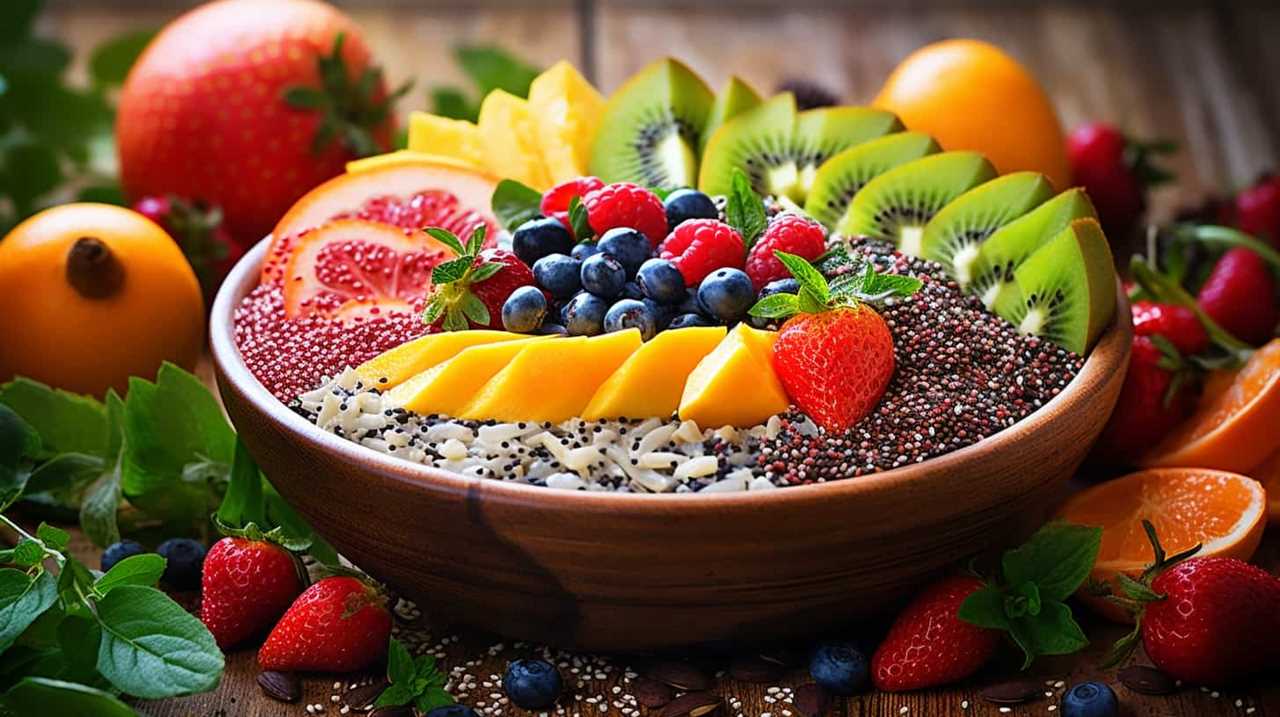
-
Boost smoothie flavors: Chia seeds are a great way to enhance the taste of your smoothies. They have a mild, nutty flavor that complements a wide range of ingredients. Whether you’re making a fruity or a green smoothie, chia seeds can add a subtle richness that takes the flavor to the next level.
-
Increase fiber intake: Chia seeds are an excellent source of dietary fiber. Just one tablespoon of chia seeds contains around five grams of fiber, which is about 20% of the recommended daily intake. Adding chia seeds to your smoothies can help improve digestion, promote feelings of fullness, and support overall gut health.
-
Provide essential nutrients: Chia seeds are packed with essential nutrients like omega-3 fatty acids, antioxidants, and minerals. These nutrients can help reduce inflammation, support brain health, and boost your immune system. By incorporating chia seeds into your smoothies, you’ll be giving your body a nutritious and delicious treat.
Increase Dietary Fiber
Chia seeds can significantly increase the dietary fiber content of your smoothies, providing numerous health benefits. Not only are chia seeds packed with fiber, but they also promote gut health by acting as prebiotics, nourishing the beneficial bacteria in your gut.
To incorporate chia seeds into your smoothies, simply add a tablespoon or two to your favorite recipe. They’ll blend seamlessly, adding a subtle crunch and a boost of fiber.
Chia seeds can also be used creatively in baking. Try replacing eggs with a chia seed gel (mix 1 tablespoon of chia seeds with 3 tablespoons of water and let it sit for 15 minutes) to add fiber to your baked goods.
Next, let’s explore how chia seeds can be used as a thickening agent in sauces and dressings.
Use Chia Seeds as a Thickening Agent in Sauces and Dressings
Chia seeds can be a versatile thickening agent for sauces and dressings in vegan recipes. Not only do they add a gel-like consistency, but they also bring a host of health benefits. Here are three creative ways to use chia seeds as a thickening agent: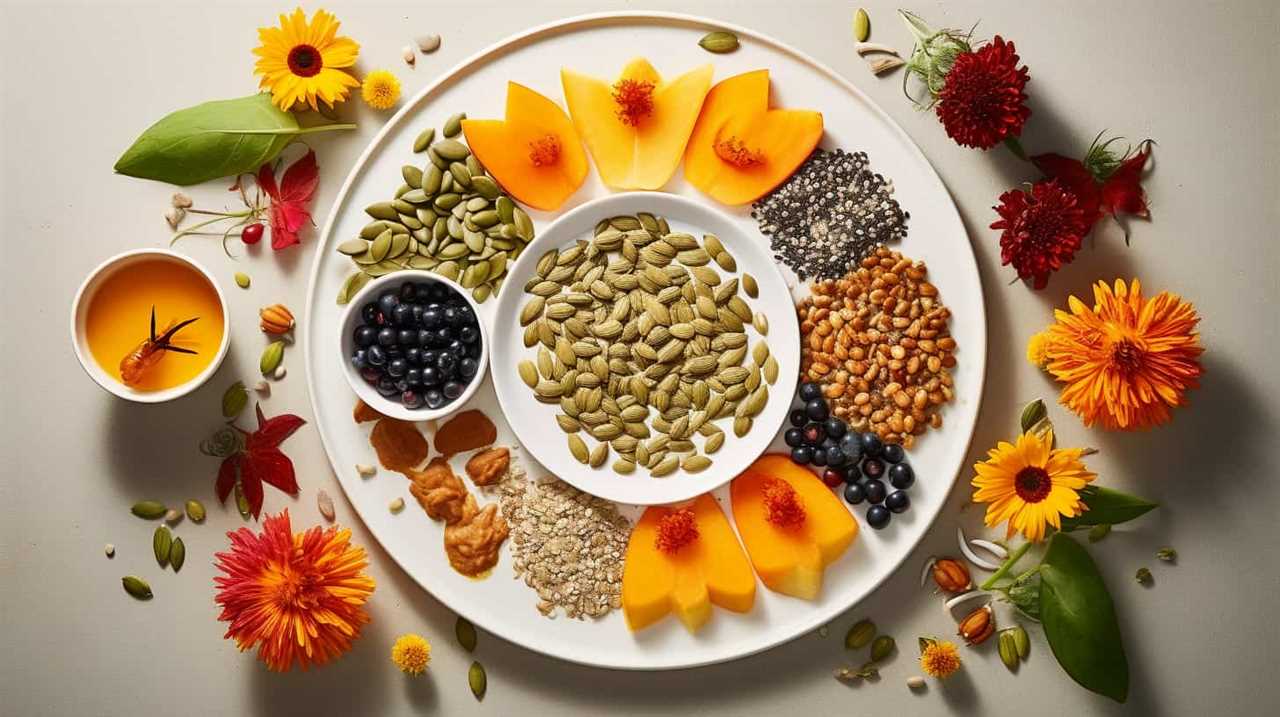
-
Make a chia seed gel: Mix chia seeds with water and let it sit for about 10 minutes until it forms a gel-like texture. Add this gel to your sauces or dressings to thicken them naturally.
-
Blend chia seeds: Grind chia seeds into a fine powder using a blender or coffee grinder. This powder can be added to your recipes, acting as a thickening agent without altering the taste.
-
Combine chia seeds with liquids: Mix chia seeds with water, plant-based milk, or vegetable broth to create a thickening base for your sauces and dressings.
Incorporate Chia Seeds Into Homemade Energy Bars
I love incorporating chia seeds into my homemade energy bars because they add a nutritional boost and a satisfying crunch. Chia seeds are packed with fiber, omega-3 fatty acids, and antioxidants, making them a great addition to any vegan recipe.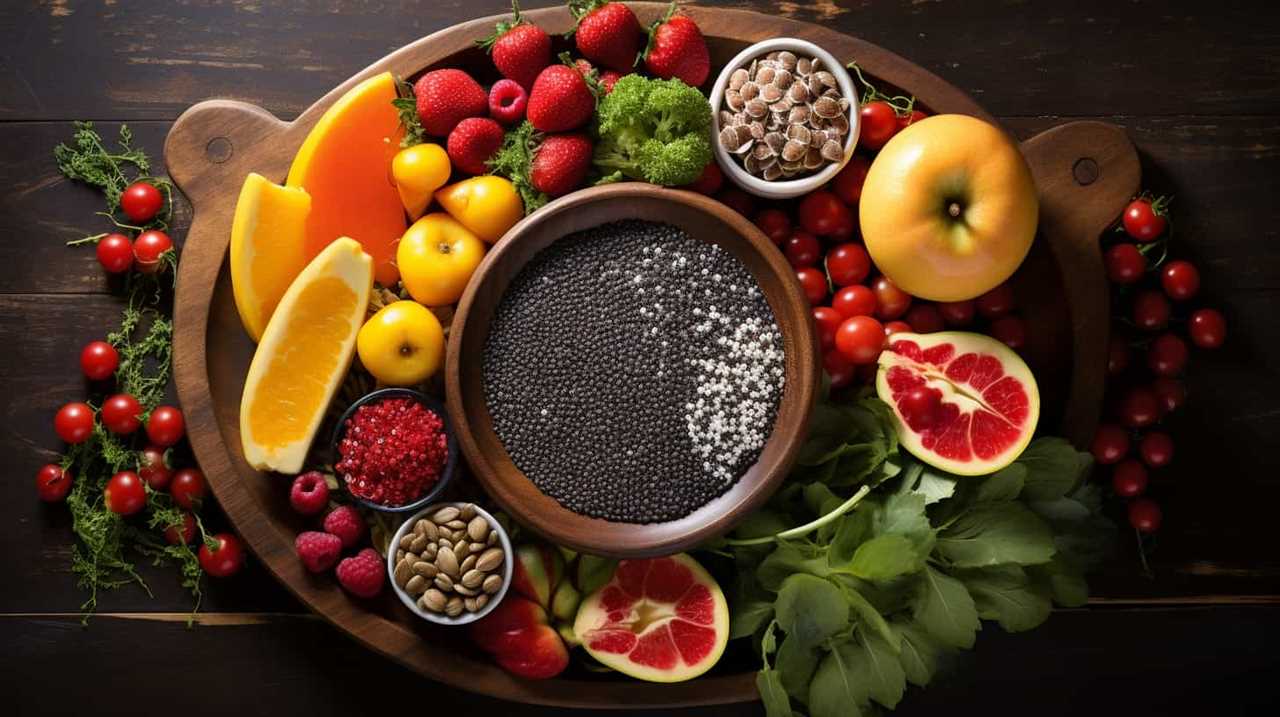
Not only do they provide a healthy dose of nutrients, but they also help bind the ingredients together, creating a perfect texture for energy bars. If you don’t have chia seeds on hand, you can try substituting flaxseeds or hemp seeds for a similar nutritional profile.
Benefits of Chia Seeds
One of the key advantages of incorporating chia seeds into my homemade energy bars is their abundant nutritional benefits. Chia seeds are a powerhouse of nutrients, packed with essential vitamins, minerals, and antioxidants.
Here are three reasons why I love using chia seeds in my baked goods:
-
High in Omega-3 Fatty Acids: Chia seeds are one of the best plant-based sources of omega-3 fatty acids, which are important for heart health and reducing inflammation.
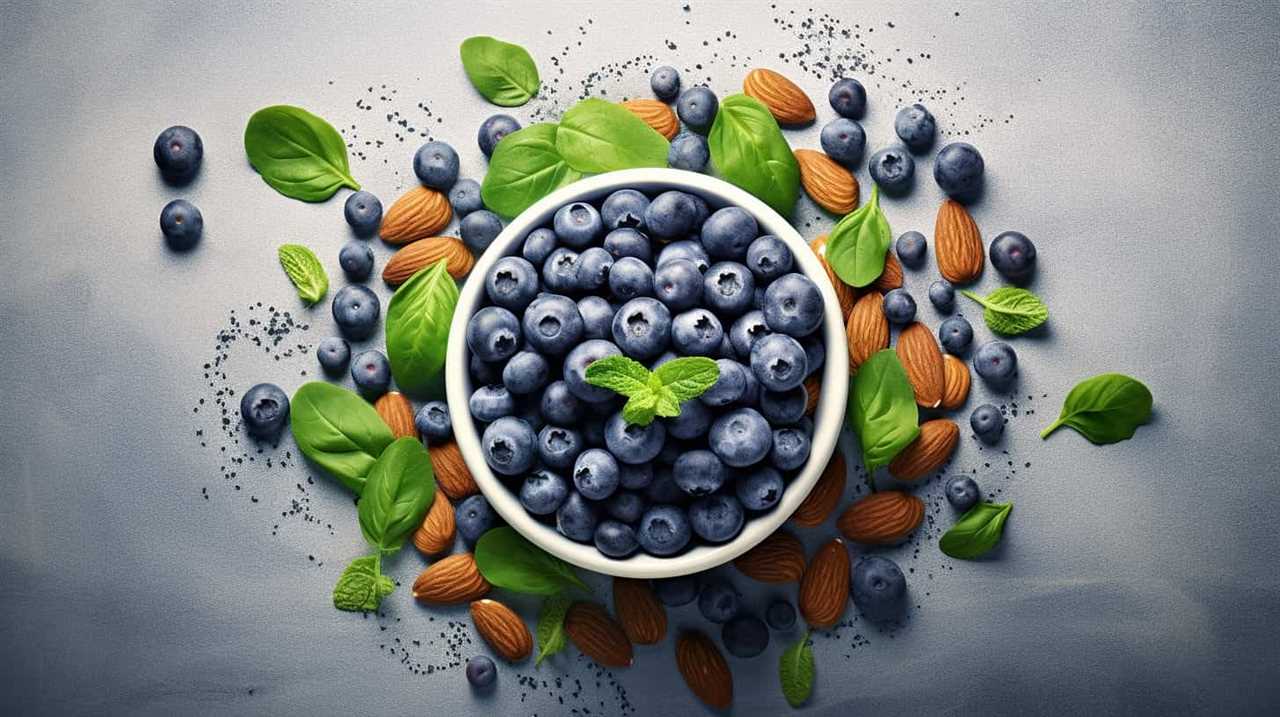
-
Rich in Fiber: Chia seeds are an excellent source of dietary fiber, which helps promote digestion, regulate blood sugar levels, and keep you feeling full and satisfied.
-
Packed with Protein: Chia seeds are a great plant-based protein source, making them an ideal ingredient for energy bars. Protein is essential for building and repairing tissues, supporting muscle growth, and helping to keep you feeling energized throughout the day.
Energy Bar Recipe Ideas
To create delicious and nutritious energy bars that incorporate the benefits of chia seeds, start by experimenting with different recipe ideas.
Energy bars are a convenient and portable snack that can provide a quick burst of energy during the day. Incorporating chia seeds into homemade energy bars not only adds a nutritional boost but also enhances the texture and flavor. Chia seeds are packed with fiber, protein, and omega-3 fatty acids, making them a valuable ingredient in vegan baking.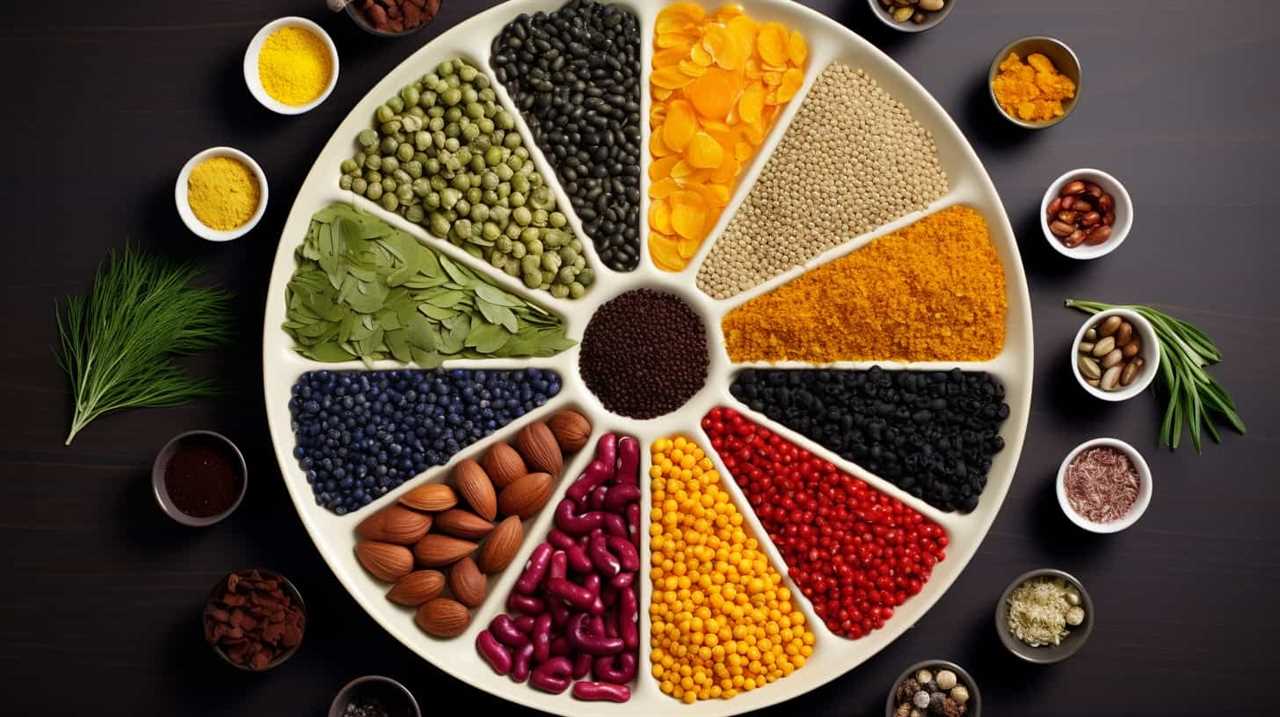
When it comes to flavor variations, the possibilities are endless. You can try adding ingredients like dried fruits, nuts, chocolate chips, or even spices like cinnamon or ginger. Get creative and find the combination that suits your taste buds.
In the next section, we’ll explore some substitutes for chia seeds that can be used in vegan recipes.
Substitutes for Chia Seeds
I love experimenting with different ingredients to incorporate the nutritional benefits of chia seeds into my homemade energy bars. However, if you don’t have chia seeds on hand or simply want to try something different, there are several chia seed alternatives that you can use.
Here are three options to consider:
-
Flaxseeds: Like chia seeds, flaxseeds are rich in omega-3 fatty acids and fiber. They can provide a similar nutritional boost to your energy bars. To use flaxseeds as a substitute for chia seeds, simply grind them into a fine powder and use them in the same quantities as the chia seeds called for in your recipe.
-
Hemp seeds: Hemp seeds are a great source of plant-based protein and contain all nine essential amino acids. They also provide a good amount of omega-3 fatty acids. To incorporate hemp seeds into your energy bars, use them in the same quantities as chia seeds.
-
Sunflower seeds: While sunflower seeds don’t offer the same omega-3 content as chia seeds, they’re still a nutritious option. They’re high in vitamin E, magnesium, and selenium. To substitute sunflower seeds for chia seeds, grind them into a coarse powder and use them in equal amounts.
Sprinkle Chia Seeds on Top of Salads for a Crunchy Texture
To achieve a crunchy texture, I recommend sprinkling chia seeds on top of salads in vegan recipes. Chia seeds aren’t only packed with nutrients, but they also add a delightful crunch to your salads. If you’re looking for other crunchy salad toppings, consider options like pumpkin seeds, sliced almonds, or crispy chickpeas.
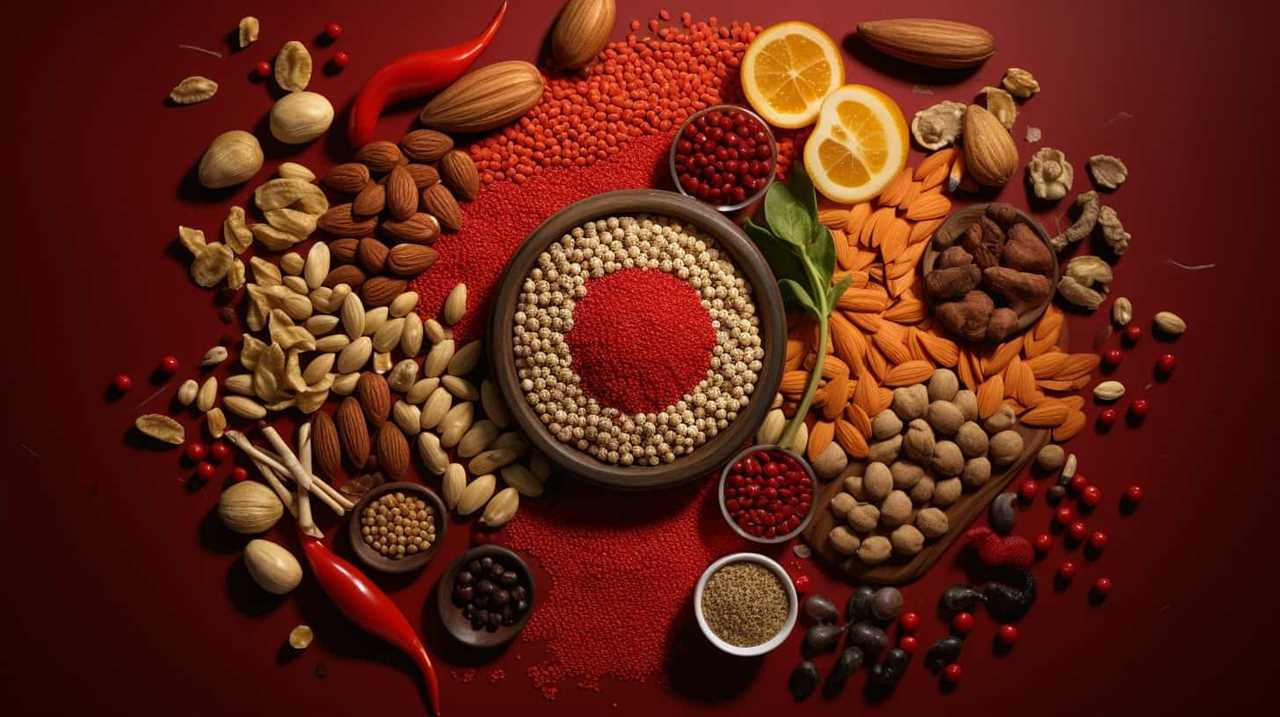
However, chia seeds stand out due to their unique health benefits. These tiny seeds are loaded with fiber, omega-3 fatty acids, and antioxidants, which can support digestion, heart health, and overall well-being. By sprinkling a tablespoon or two of chia seeds on your salads, you can enhance both the texture and nutritional value of your meal.
Now, let’s move on to another way to incorporate chia seeds into your vegan recipes – mixing them into homemade granola for added nutrition.
Mix Chia Seeds Into Homemade Granola for Added Nutrition
Mixing chia seeds into homemade granola provides added nutrition and enhances the taste and texture. Chia seeds are a versatile ingredient that can be incorporated into various recipes, including baking. Here are three reasons why you should consider adding chia seeds to your homemade granola:
-
Nutritional powerhouse: Chia seeds are packed with essential nutrients like fiber, protein, omega-3 fatty acids, and antioxidants. By adding them to your granola, you can boost its nutritional profile and support your overall health.

-
Weight loss aid: Chia seeds are known for their ability to promote weight loss. They’re high in fiber, which can help you feel full and satisfied, reducing the chances of overeating. Incorporating chia seeds into your granola can be a delicious and healthy addition to your weight loss journey.
-
Crunchy texture: Chia seeds add a delightful crunch to your homemade granola. When mixed with other ingredients like oats, nuts, and dried fruits, they create a satisfying texture that makes your granola even more enjoyable.
Use Chia Seeds as a Binding Agent in Veggie Burgers and Meatballs
Adding chia seeds as a binding agent in veggie burgers and meatballs enhances their texture and helps hold them together during cooking. Chia seeds are a great alternative to eggs or breadcrumbs for binding plant-based dishes. Not only do they provide a vegan-friendly option, but they also offer numerous health benefits.
Chia seeds are rich in omega-3 fatty acids, fiber, and protein, making them a nutritious addition to your meals. To use chia seeds as a binding agent, simply mix them with water to create a gel-like consistency. This gel will help hold your veggie burgers and meatballs together, preventing them from falling apart during cooking.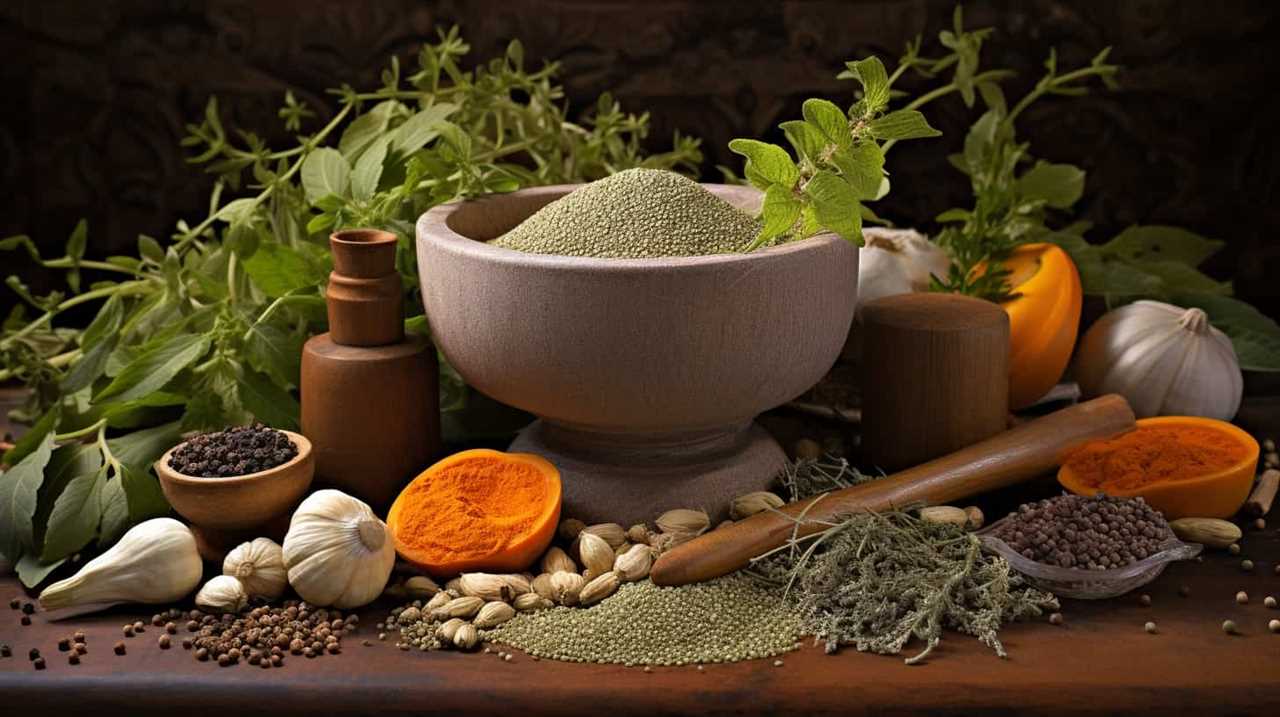
Experiment with different chia seed recipes to find the perfect combination of flavors and textures for your plant-based creations. Enjoy the benefits of chia seeds while indulging in delicious and wholesome meals.
Make Chia Seed Jam for a Healthier Alternative to Traditional Spreads
For a healthier alternative to traditional spreads, I love making chia seed jam using fresh fruits and a time-saving food processor. Chia seed jam isn’t only delicious but also packed with nutritional benefits.
Here are three reasons why you should try making chia seed jam:
-
Rich in Omega-3 fatty acids: Chia seeds are a great source of omega-3 fatty acids, which are essential for brain health, reducing inflammation, and supporting heart health.
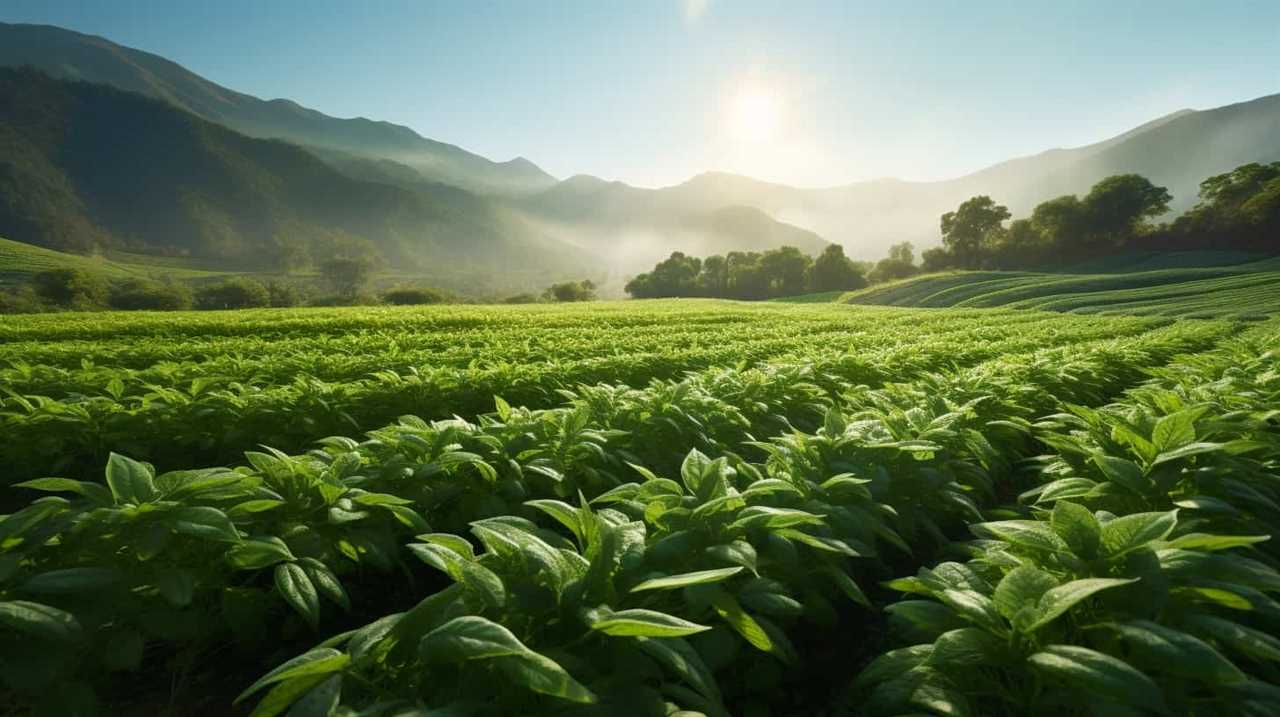
-
High in fiber: Chia seeds are an excellent source of dietary fiber, promoting healthy digestion and keeping you feeling full and satisfied. This can be especially beneficial for those following a plant-based diet.
-
Versatile and customizable: Chia seed jam can be made with a variety of fruits, allowing you to experiment with different flavors. From classic strawberry to exotic mango, the possibilities are endless.
To make chia seed jam, simply blend your favorite fruit with chia seeds and a sweetener of your choice in a food processor. Let it sit for a few hours or overnight, and you’ll have a delicious spread ready to enjoy on toast, pancakes, or even as a topping for yogurt. Get creative and have fun with different combinations to find your favorite chia seed jam recipe variation.
Blend Chia Seeds Into Homemade Nut Milk for Added Creaminess
I love using chia seeds to blend into homemade nut milk for added creaminess. Chia seeds are a fantastic ingredient to incorporate into your vegan recipes, not only for their nutritional benefits but also for their ability to enhance the texture and taste of your dishes.
When it comes to making nut milk, chia seeds can be a game-changer. Simply soak the chia seeds in water or your choice of plant-based milk, and they’ll expand and create a thick, creamy consistency. This makes the nut milk richer and more indulgent, perfect for adding to your morning coffee, cereal, or even for baking.
You can also blend chia seeds into smoothie bowls for an extra boost of fiber and omega-3 fatty acids. So, go ahead and experiment with chia seeds in your homemade nut milk and smoothie bowls to achieve that luxurious creaminess you desire.
Frequently Asked Questions
Can You Eat Chia Seeds Without Soaking Them First?
Yes, you can eat chia seeds without soaking them first. However, soaking them in liquid helps to enhance their nutritional value and makes them easier to digest. Soaking chia seeds also allows them to release their gel-like texture, which can be beneficial in recipes.
How Much Chia Seeds Should I Use as an Egg Replacement in Recipes?
I usually use 1 tablespoon of chia seeds mixed with 3 tablespoons of water as an egg replacement in recipes. Chia seeds have many benefits, like being a good source of omega-3s and fiber. Other egg replacements include mashed banana or applesauce.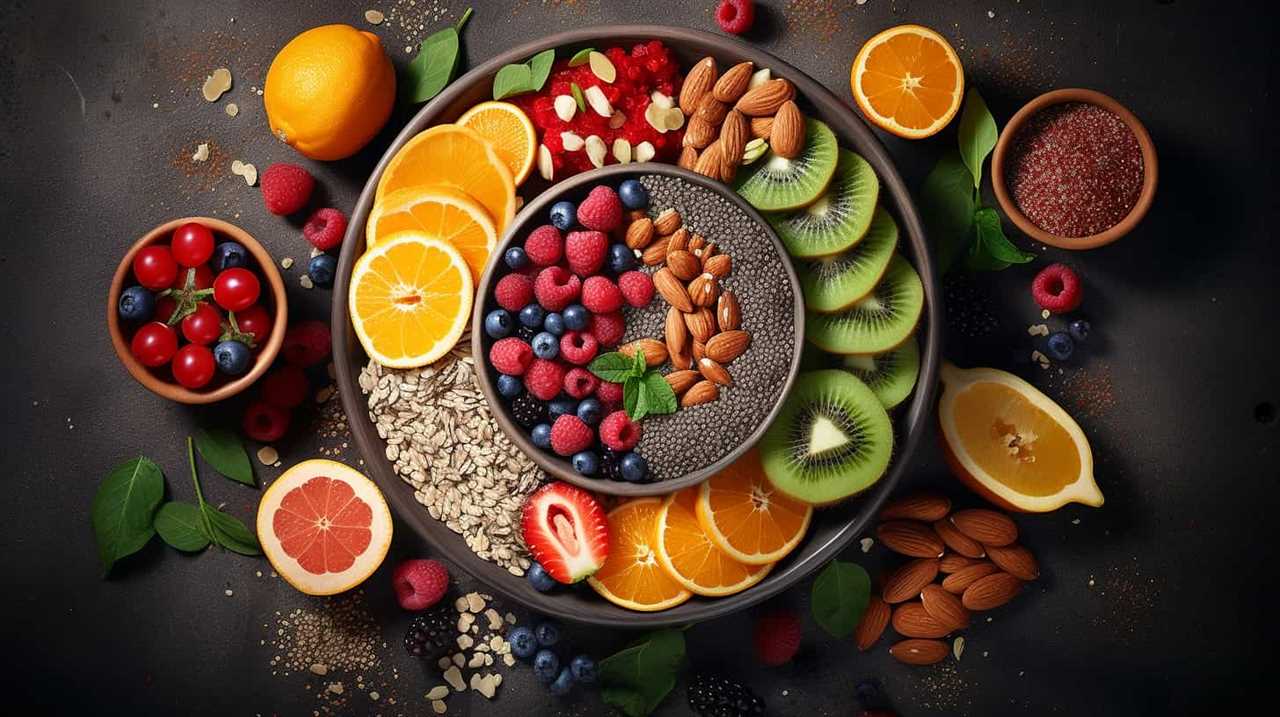
Is Chia Seed Pudding Suitable for Those With Nut Allergies?
Yes, chia seed pudding is suitable for those with nut allergies. It’s a delicious and nutritious breakfast option. There are also variations of chia seed pudding to accommodate different dietary needs. Enjoy!
Can I Use Chia Seeds as a Thickening Agent in Both Hot and Cold Sauces?
Yes, you can use chia seeds as a thickening agent in both hot and cold sauces. They work well as a binding agent in baking and can be a great substitute for gelatin in desserts.
Are There Any Potential Side Effects of Consuming Chia Seeds in Large Quantities?
In large quantities, potential long term effects of consuming chia seeds should be considered. To maintain freshness and nutritional value, store chia seeds properly. It’s important to be informed and practical when using these seeds in vegan recipes.
Conclusion
In conclusion, incorporating seeds into vegan recipes can be both nutritious and delicious. From chia seeds as an egg replacement to adding them to smoothies for extra fiber, the possibilities are endless.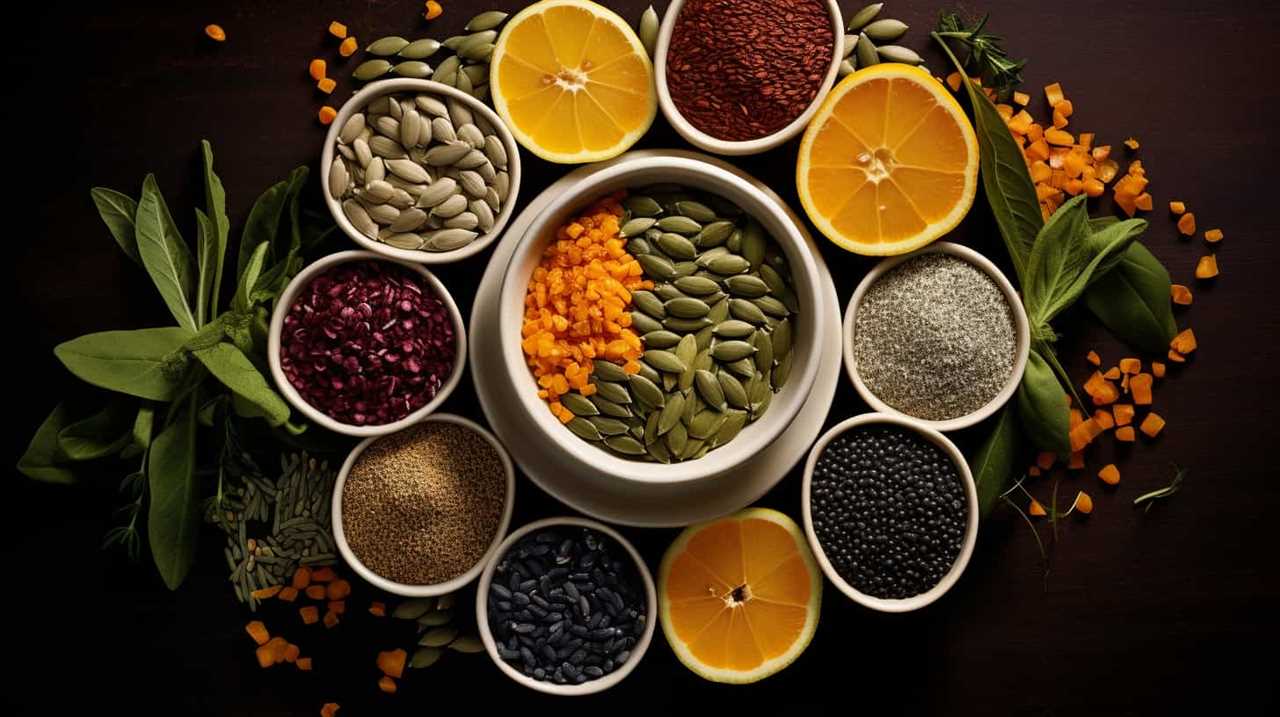
So go ahead and get creative in the kitchen with these essential tips. You’ll be amazed at the incredible flavors and health benefits that seeds can bring to your plant-based meals.
Happy cooking!
Hi, I’m Sarah. I write for Turtle Tree Seeds, a news blog that loves food – all kinds of food. But especially bacon, chocolate, and veggies. We’re on a mission to show the world that you can enjoy all of those things, even kale and brussels sprouts. Because we believe that when it comes to food, there’s no such thing as guilty pleasures. Just pleasures.
I’m also a huge fan of puns (obviously).
-
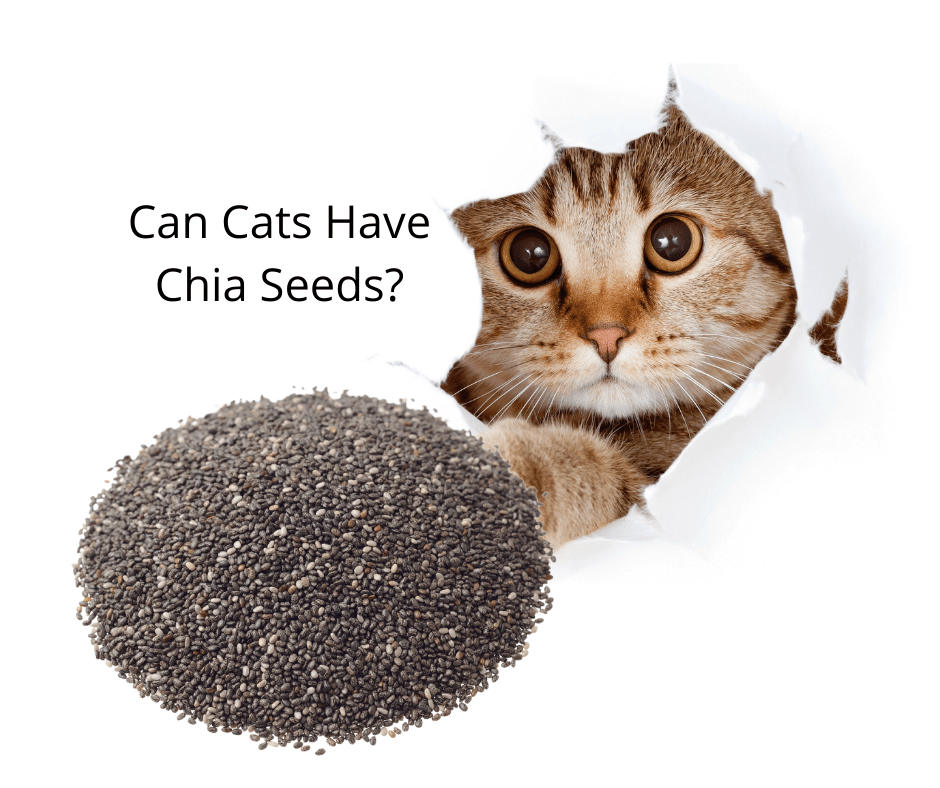
 Chia Seeds3 months ago
Chia Seeds3 months agoCan Cats Have Chia Seeds?
-

 Chia Seeds3 months ago
Chia Seeds3 months agoHow Do Chia Seeds Go Bad?
-

 Chia Seeds3 months ago
Chia Seeds3 months agoDo Chia Seeds Make You Poop?
-

 Health Risks and Allergies Related to Chia Seeds3 months ago
Health Risks and Allergies Related to Chia Seeds3 months agoWhy Do Chia Seeds Gel
-

 Chia Seeds3 months ago
Chia Seeds3 months agoHow to Use Chia Seeds For Weight Loss
-

 Chia Seeds and Digestive Health2 weeks ago
Chia Seeds and Digestive Health2 weeks agoWhy Are Chia Seeds Beneficial For Gut Health?
-
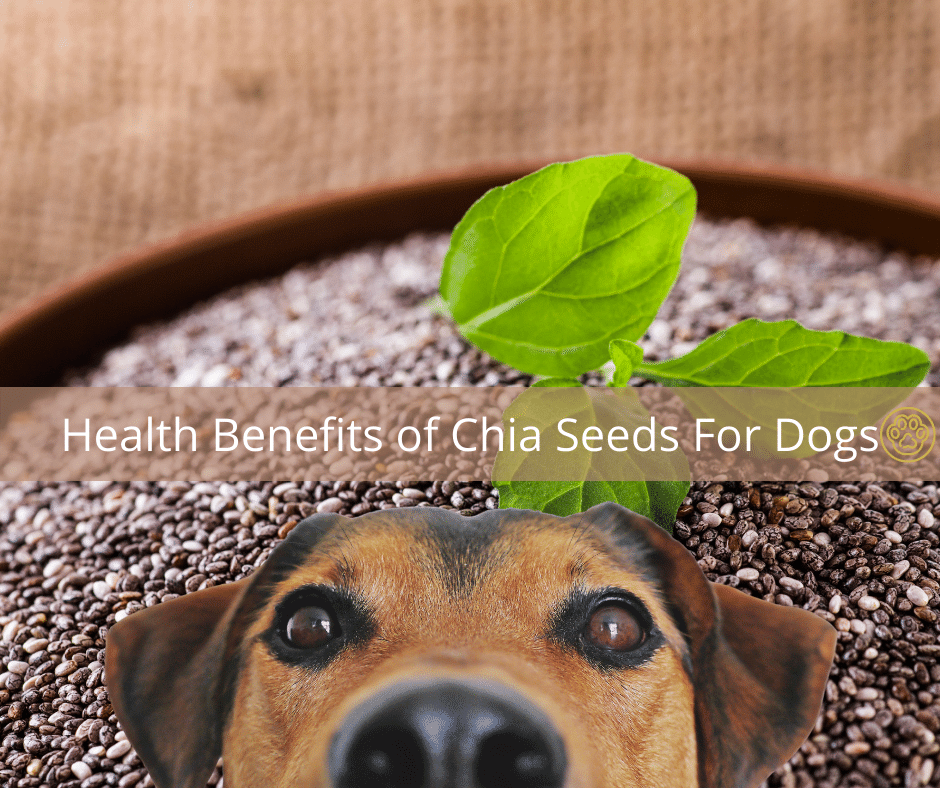
 Chia Seeds3 months ago
Chia Seeds3 months agoHealth Benefits of Chia Seeds For Dogs
-
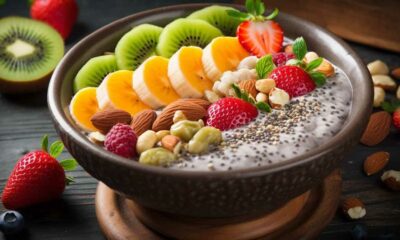
 Chia Seeds in Gluten-Free Diets2 months ago
Chia Seeds in Gluten-Free Diets2 months agoYour Dependable Guide: Chia as a Gluten Substitute
